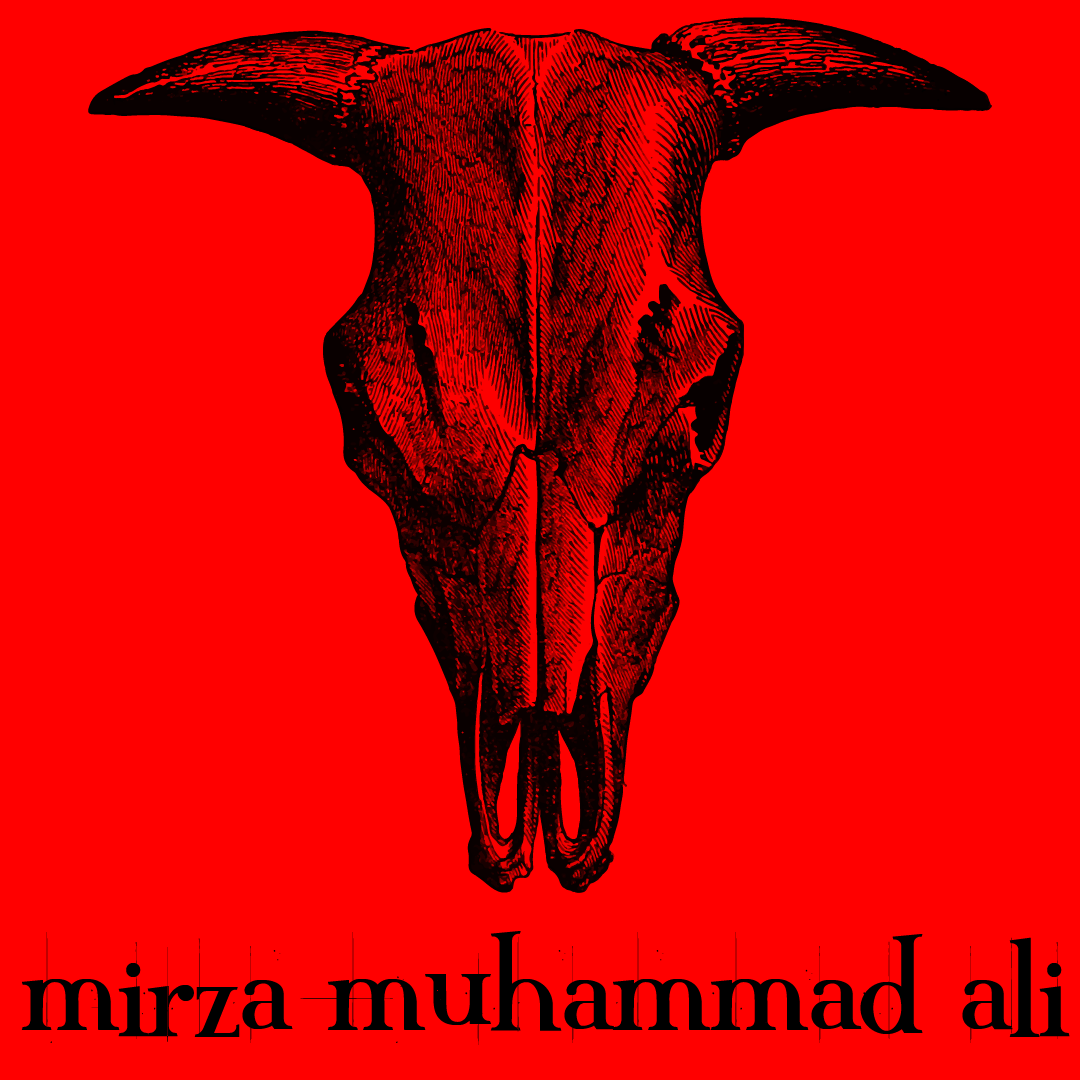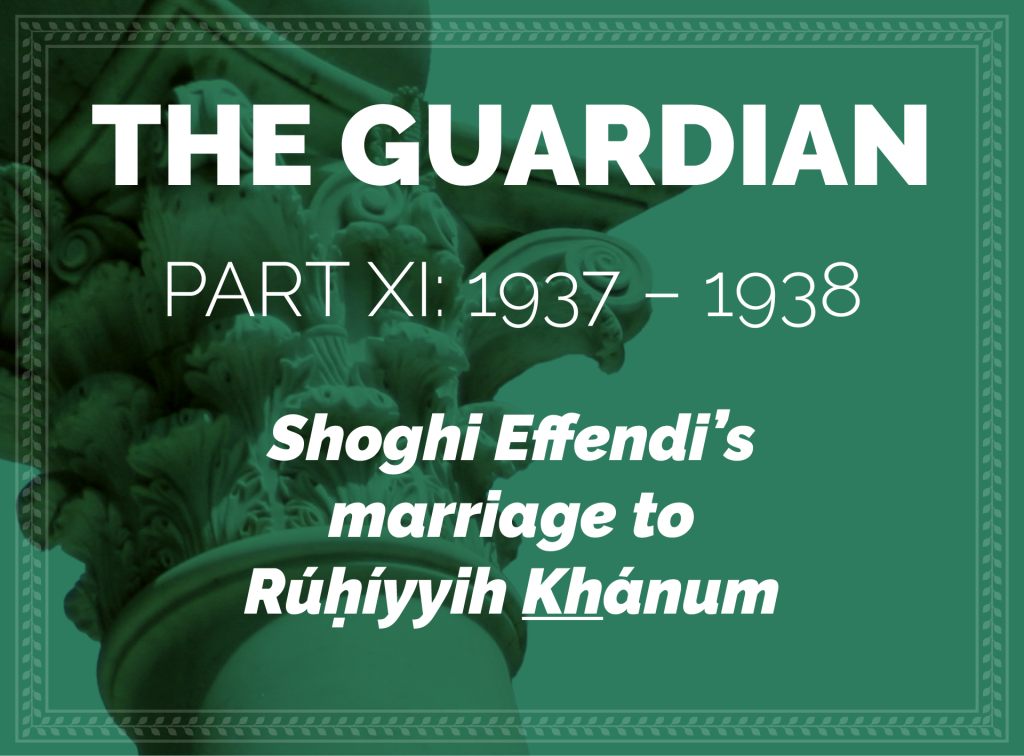
Written and illustrated by Violetta Zein
This part covers the life of Shoghi Effendi from the age of 40 in 1937 to the age of 41 in 1938.
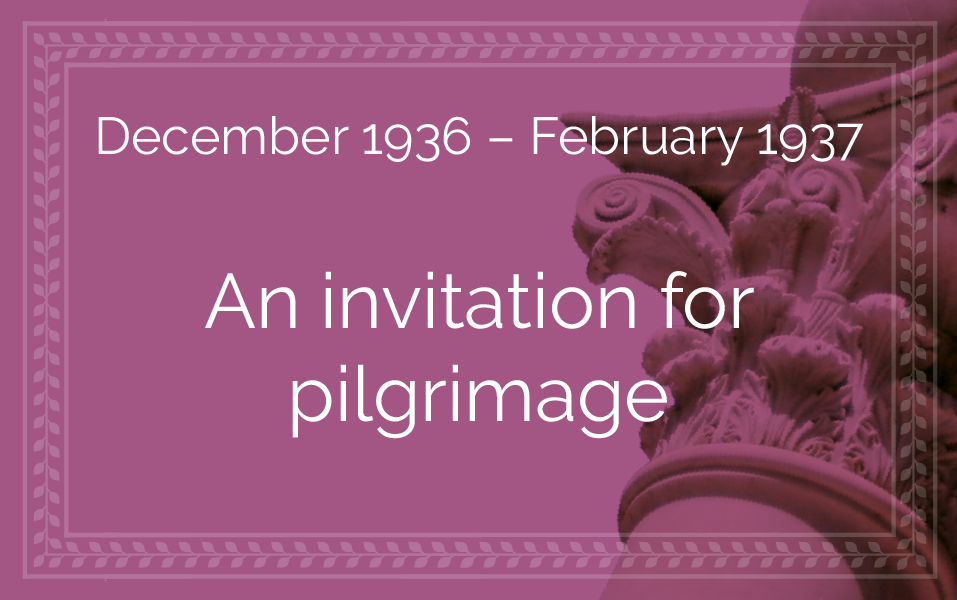
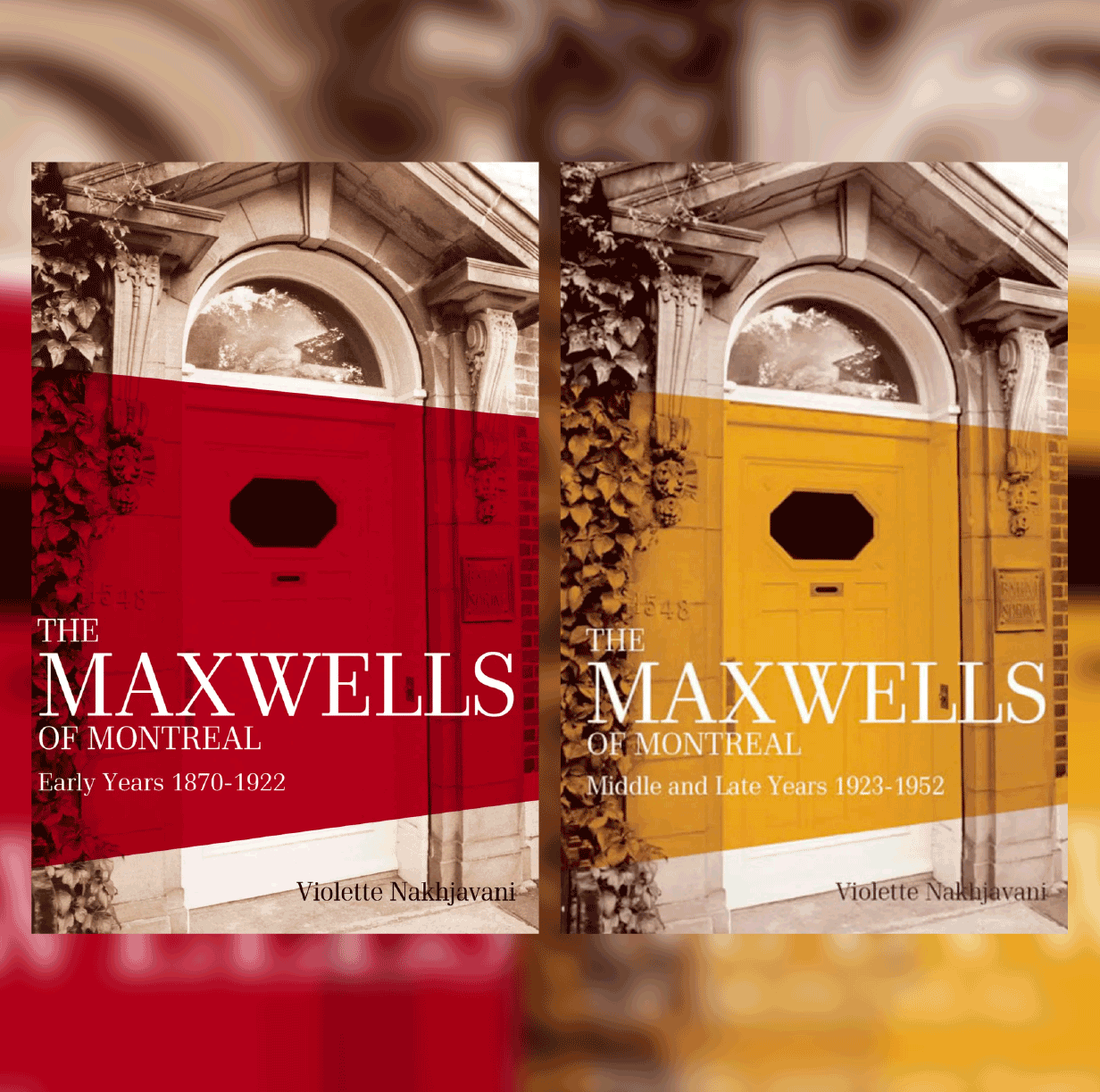
As with all books by Bahá'í authors on the subject of Shoghi Effendi—or in this case, his extended family—we would like to pay a tribute to the research of our fellow historians and introduce you two precious books which should be in your library.
These books certainly fit that description.
Violette Nakhjávání is a Bahá'í author. She was the travel companion and assistant of Hand of the Cause Amatu’l-Bahá Rúḥíyyih Khánum for 37 years, but she is also the daughter of Hand of the Cause and one of the first pioneers to Kampala, Uganda, Músá Banání, and she is the wife of ‘Alí Nakhjávání, member of the Universal House of Justice for 40 years since its inception in 1963. She passed away in 2011 in France.
In 2011 the late Violette Nakhjávání published two extraordinary, historical books of great importance: The Maxwells of Montreal: Early Years 1870 – 1922 and The Maxwells of Montreal: Middle Years 1923 – 1937 Late Years 1937 – 1952.
The Maxwells of Montreal is the biography of three people: May Maxwell, William Sutherland Maxwell, and their daughter, Amatu’l-Bahá Rúḥíyyih Khánum. Two Hands of the Cause and one Martyr, one family, bonded together by their love for each other and for the Guardian.
Volume 1: The Maxwells of Montreal: Early Years 1870 – 1922, covers the respective birth, childhood, youth, of May Bolles and William Sutherland Maxwell, May’s pioneering in Paris, May and William Sutherland Maxwell’s marriage, their pilgrimage to the Holy Land in 1909, the visit of 'Abdu'l-Bahá to their home in 1912, and the Ascension of 'Abdu'l-Bahá.
The Maxwells of Montreal: Middle Years 1923 – 1937 Late Years 1937 – 1952 completes the story of the Maxwell Family, covering the story of May and Mary Maxwell’s 1923 – 1924 pilgrimage, their extensive teaching activities in North America and Europe, the marriage of Shoghi Effendi and Rúḥíyyih Khánum, the death of May Maxwell, the life of William Sutherland Maxwell in the Holy Land as the architect of the superstructure of the Shrine of the Báb, his elevation as a Hand of the Cause and his passing.
Both volumes draw on over 1,600 personal letters between May, Sutherland and Mary Maxwell (Amatu’l-Bahá Rúhíyyih Khánum), as well as 1,400 letters which the three Maxwells exchanged with their relatives and some of the early Bahá’ís. Included in this incredible collection are the last Tablet May Maxwell received from ‘Abdu’l-Bahá, cables from Shoghi Effendi, excerpts from Rúhíyyih Khánum’s notebooks, sketches made by her father, and articles and photographs related to the period.
All this primary source material was personally gathered by Hand of the Cause, Amatu’l-Bahá Rúḥíyyih Khánum.
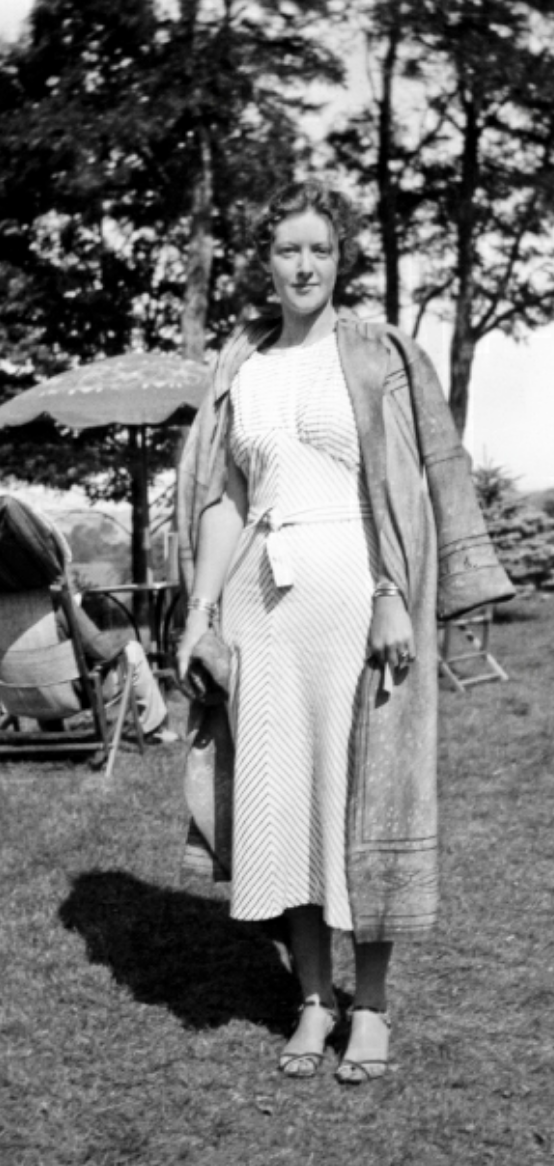
Mary Maxwell in Green Acre in 1934, at the age of 24. Source: Wikimedia Commons.
After leaving Haifa in 1924, young Mary Maxwell had blossomed into an enkindled, active, and very talented servant of the Faith.
She had a natural ability for writing, and developed her talents by writing books, articles, plays, and poetry. Her dearest wish and highest hope were to one day become an author. Mary was also a born speaker and, with the encouragement of Shoghi Effendi, she developed her eloquence by lecturing. Mary’s ardent, youthful enthusiasm informed the lectures she gave on the Heroic Age of the Faith in Montreal, Green Acre, Louhelen, and Esslingen, Germany.
From Haifa, Shoghi Effendi closely followed the development and spiritual training of this remarkable young woman, and noted her progress in service to Bahá'u'lláh with keen interest. Shoghi Effendi wrote to her mother, May Maxwell enclosing precious advice for Mary’s personal and spiritual growth:
I feel that she should, while pursuing her studies, devote her energies to an intensive study of, & vigorous service to, the Cause, of which I hope & trust she will grow to become a brilliant and universally honoured exponent. I am sure, far from feeling disappointed or hurt at my suggestion, she will redouble in her activities & efforts to approach & attain the high standard destined for her by the beloved Master. Your plan of travelling with her throughout Canada in the service of the Cause is a splendid one & highly opportune. Kindly assure her & her dear father of my best wishes & prayers for their happiness welfare & success.
Over the next 15 years, Mary continued to develop a myriad of rare and precious skills that transformed her into what she would become after her marriage to Shoghi Effendi: a perfect instrument of service in the hands of her beloved Guardian.
Mary studied The Dawn-Breakers intensely, and wrote a marvelous article—which was covered in this chronology in a story in 1932—which was published in The Bahá'í World Volume 5 called The Re-florescence of Historical Romance in Nabíl.
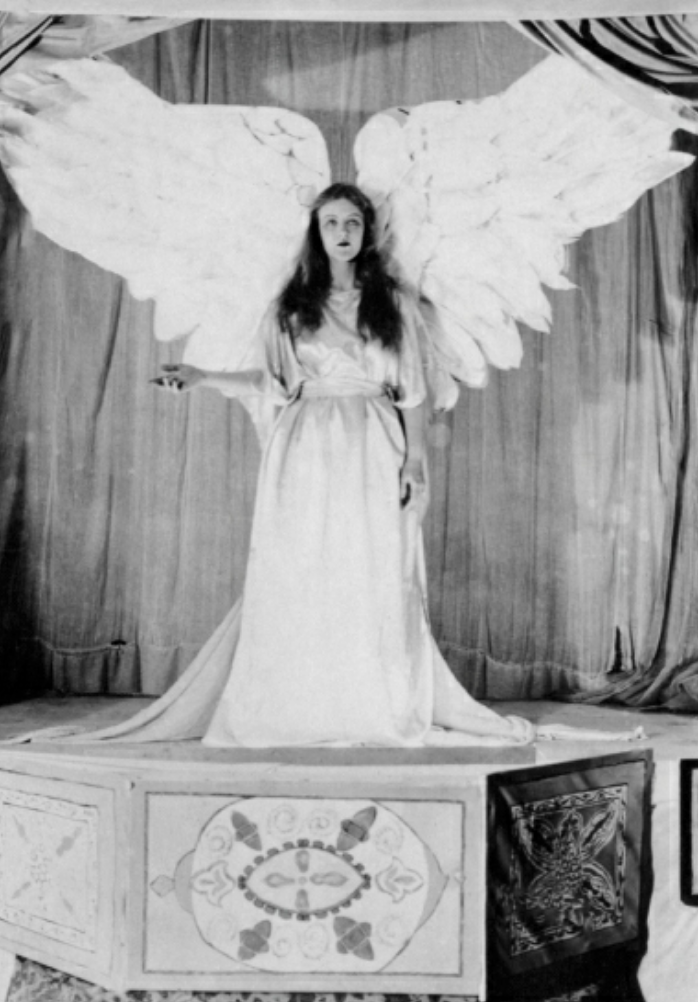
In 1934 Mary Maxwell gave talks on The Dawn-Breakers at the Bahá’í summer schools in Green Acre and Louhelen. In this picture she is taking part in the pageant The Gate of Dawn, presented by the newly-formed Green Acre Committee for Plays and Pageants; this is the last scene in which, dressed as an angel, she recites the farewell message of the Báb. Source: The Maxwells of Montreal: Middle Years 1923-1937 Late Years 1937-1952. Violette Nakhjavani, Kindle Edition, Location 4203.
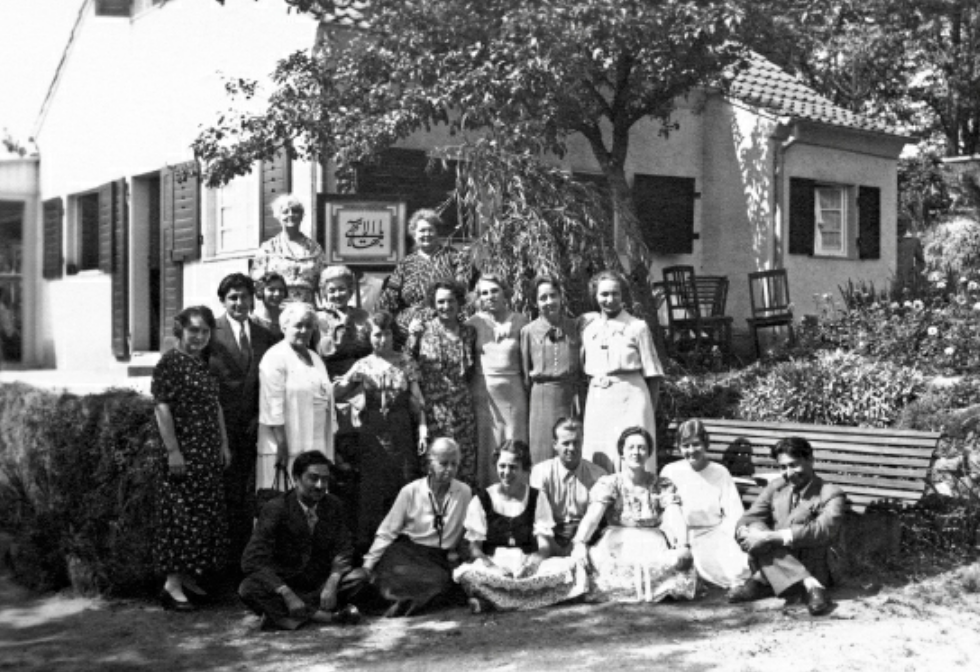
Bahá’ís at the Esslingen Summer School, Germany, 1936. May Maxwell and Marion Jack are standing on either side of the Greatest Name; seated on the ground in the front row are Mary Maxwell and her cousin Jeanne Bolles. Source: The Maxwells of Montreal: Middle Years 1923-1937 Late Years 1937-1952. Violette Nakhjavani, Kindle Edition, Location 4857.
May and William Sutherland Maxwell left Montreal and arrived in Europe in September 1935, and William Sutherland Maxwell left a few weeks later to return to work. Mary had sailed one month before her parents and had traveled to Esslingen, participated in the Bahá'í Summer School, and fallen in love with the country.
Between October 1935 and January 1936, Mary Maxwell and Shoghi Effendi exchanged letters constantly about her service to the Faith. The letters are passionate with love for Bahá'u'lláh, service, the destiny of Germany, questions and requests for prayers from Mary, and, on the part of the Guardian, guidance, advice, and suggestions. One feels through this exchange of letters the bond already binding Mary Maxwell and Shoghi Effendi, not a bond of romantic love, but a stronger, more unbreakable bond: dedication to the Covenant of Bahá'u'lláh, and passion for service.
Sometime in November 1935, Mary received a long letter dated 28 October 1935 on behalf of the Guardian’s secretary, warmly encouraging her in her efforts and responding to her 3 October letter with precious advice regarding learning German, keeping Germany as her focus for teaching, and putting the emphasis on consolidation:
Shoghi Effendi feels very much encouraged & gratified to realize that you are developing great interest in the Cause in Germany. Your visit to Esslingen, Stuttgart & various other Bahá’í centres seems to have left a strong impression upon you. Germany, indeed, stands to-day as the largest, most active & promising Bahá’í community in Europe. And the Guardian cherishes the highest hopes for its future, and feels convinced that, as clearly promised by the Master, it will gradually develop into one, if not the most, of the leading Bahá’í countries throughout the world. In view of that, he would certainly encourage you to study German & to get in touch with the German believers, so that you may get well prepared for teaching the Cause in Germany in the near future. He would even advise you to make that country the main field of your teaching work in Europe. For although general conditions in Germany are, at present, not very favourable to the expansion of the Movement, yet the future of the Cause there seems to be very bright, & rich in all sorts of possibilities. Now, the main task facing the German friends is the consolidation of the Administration. The era of intensive teaching has not yet dawned upon them. But once their communities are fully organized internally, it will then be easy for them to effectively teach the Cause to the outside public.
Shoghi Effendi added a few words in his own handwriting in the postscript of this 28 October letter, delighted at Mary’s praiseworthy work and showering her with encouragement:
Dear & valued co-worker: I have, in my recent cable addressed to your dear & distinguished mother, expressed my delight in learning of the progress you have made in learning German & of the efforts you are exerting to teach the Cause in Germany. I have also expressed my full approval of the inclination you feel to work for our beloved Faith in that land, & I cannot but feel that your collaboration with the German believers will reinforce the foundation of your future international services & will serve to ennoble the work you are destined to achieve in the days to come. I will be soon writing to your mother, & I trust that the cable, assuring her of my prayers for her brother’s family has reached her & relieved her anxieties.
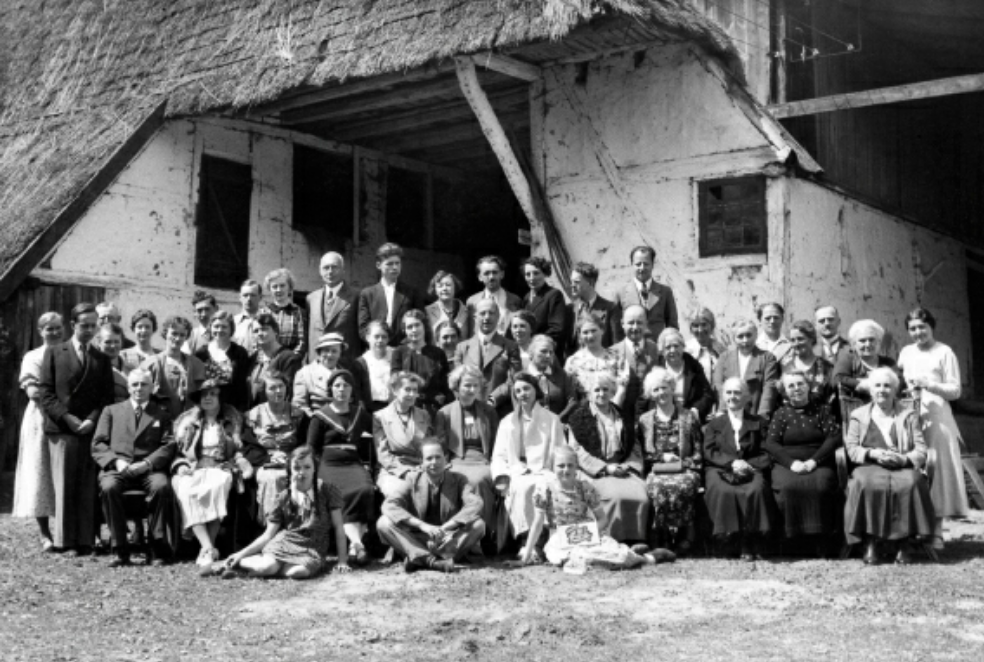
Conference of the North German Bahá’í centres, at Diedrichshagan, a village near Rostock, Spring of 1936. Mary Maxwell is standing 5th from left. Source: The Maxwells of Montreal: Middle Years 1923-1937 Late Years 1937-1952. Violette Nakhjavani, Kindle Edition, Location 4751.
Writing on the first day of Ridván, 21 April 1936, from the Hotel Nordland in Rostock— the largest coastal and most important port city in East Germany—Mary submitted a lengthy report to the Guardian about the difficulties in prewar Europe, particularly racial prejudice and fear—one senses the imminent cataclysm of war in her letter. Tensions were high in Germany:
My beloved Shoghi Effendi, One of the obvious problems here is that of the combinations of race prejudice, fearsomeness, intense championing of the Policy & Government, at present. When a Bahá’í with Jewish blood hears one without it rail against this part of his racial antecedents, it does not help the love or happiness of the community spirit…I must say truthfully I have found more fear of almost any kind of free action among the Bahá’ís as among the other many German friends I have contacted. They say their fear of really getting busy and doing something is so that they will not jeopardize the Cause in general and I can well understand this standpoint, but even so I feel they are much more timid than is warranted from the builders of a new and Divine Order with all the power that lies behind it to be drawn upon! In other words I have no sympathy with a scared Bahá’í…I mean in little ways such as teaching an individual or saying ‘what would we do if a Jew became a Bahá’í?’ (this in places where there are none!)…I am trying to write a book in German with the help of a wonderful boy I have met, only 19 years old. My bad German he puts into good German! Please, if it be within the Grace of God, pray I may succeed…I visited and read a speech in German on the Administration, in Dresden, Leipzig, Berlin, Rostock, Warnemünde and Hamburg (one night in each place) then was too tired to go on and stayed over a month in Hamburg to try and help them get going. I will stay a week or two here again in Rostock–Warnemünde.
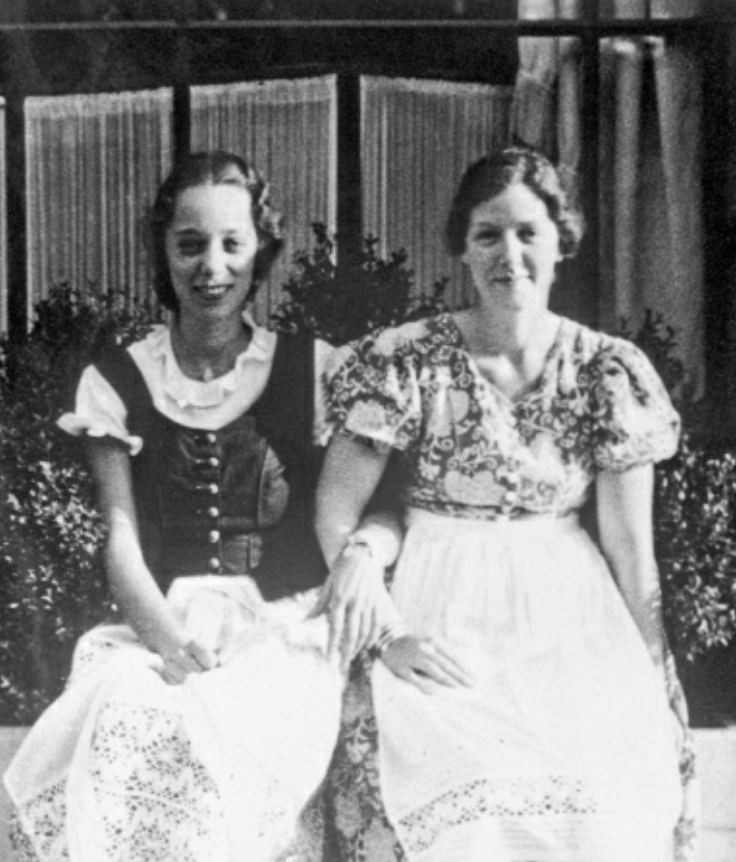
Two cousins: Mary Maxwell (on the right) and Jeanne Bolles (on the left) wearing traditional German dress, the dirndl, Stuttgart, 1936. Source: The Maxwells of Montreal: Middle Years 1923-1937 Late Years 1937-1952. Violette Nakhjavani, Kindle Edition, Location 4903.
Soon after, Mary Maxwell received a letter, written on behalf of the Guardian, dated 1 May 1936, expressing his gratitude at her precious service:
But, as you rightly state, there is great need for suitable literature on the Cause that would appeal to the great public outside, & particularly to the modern youth. In this connection the Guardian feels he must express his deep gratification & also his grateful thanks & appreciation to you for your efforts for the preparation of an introductory book on the Cause in German…
And in Shoghi Effendi’s handwriting, a postscript filled with admiration, hope, gratitude and, as usual, the Guardian’s own very special brand of encouragement that set the hearts of all Bahá'ís, and especially Mary’s, on fire with love for Bahá'u'lláh:
Dear & valued co-worker: I am delighted with your accomplishments. My heart is filled with hope & gratitude. I have sent you a cable of appreciation which I trust you have received. Your recent services will never be forgotten. Rest assured & be happy. Your true brother, Shoghi.
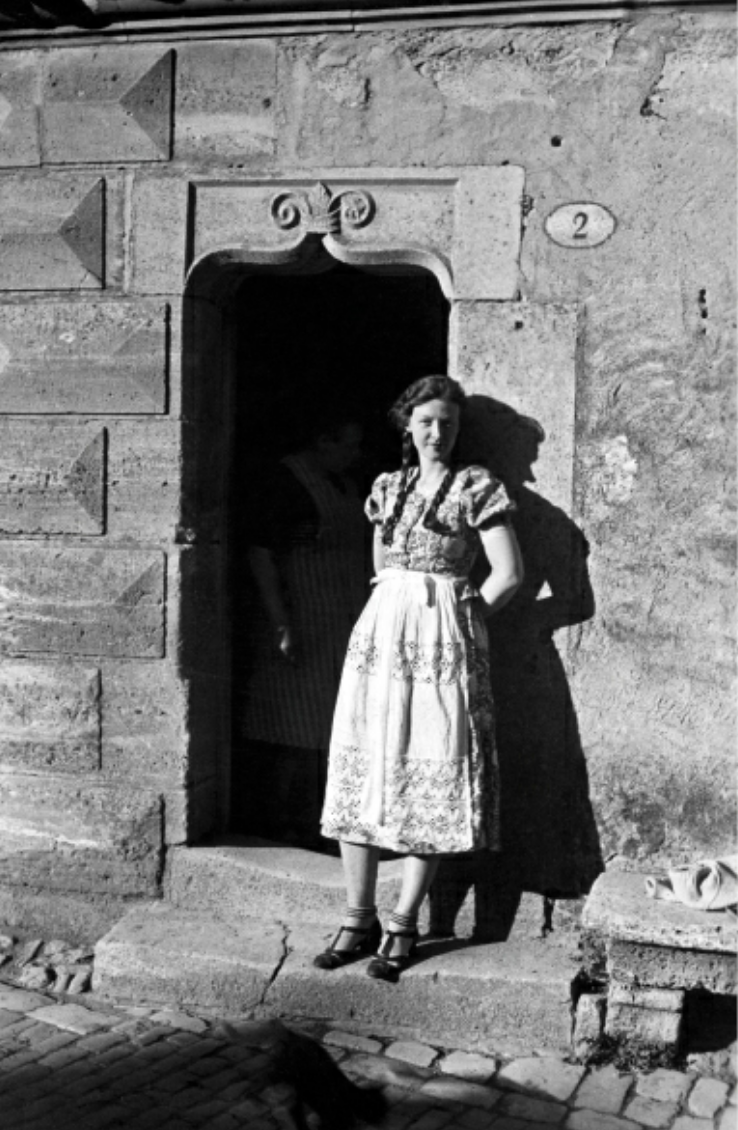
Mary Maxwell in Rothenburg, Germany, circa 1936. Source: The Maxwells of Montreal: Middle Years 1923-1937 Late Years 1937-1952. Violette Nakhjavani, Kindle Edition, Location 4705.
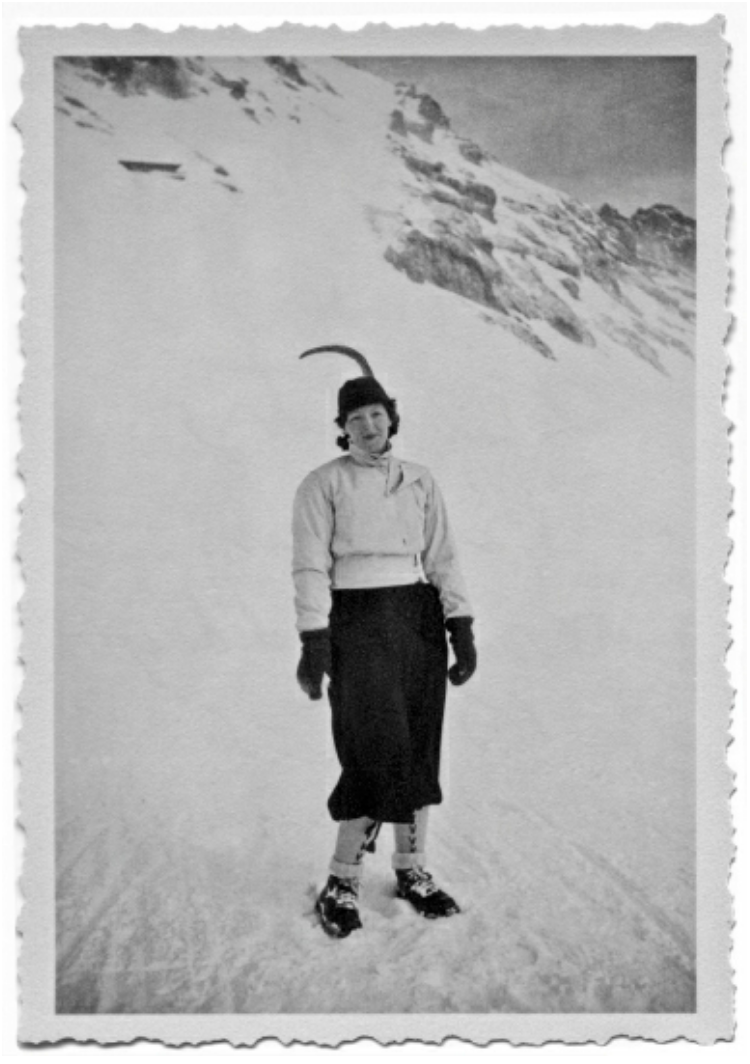
PHOTOGRAPH: 1935 – 1936: Mary Maxwell skiing in Bavaria
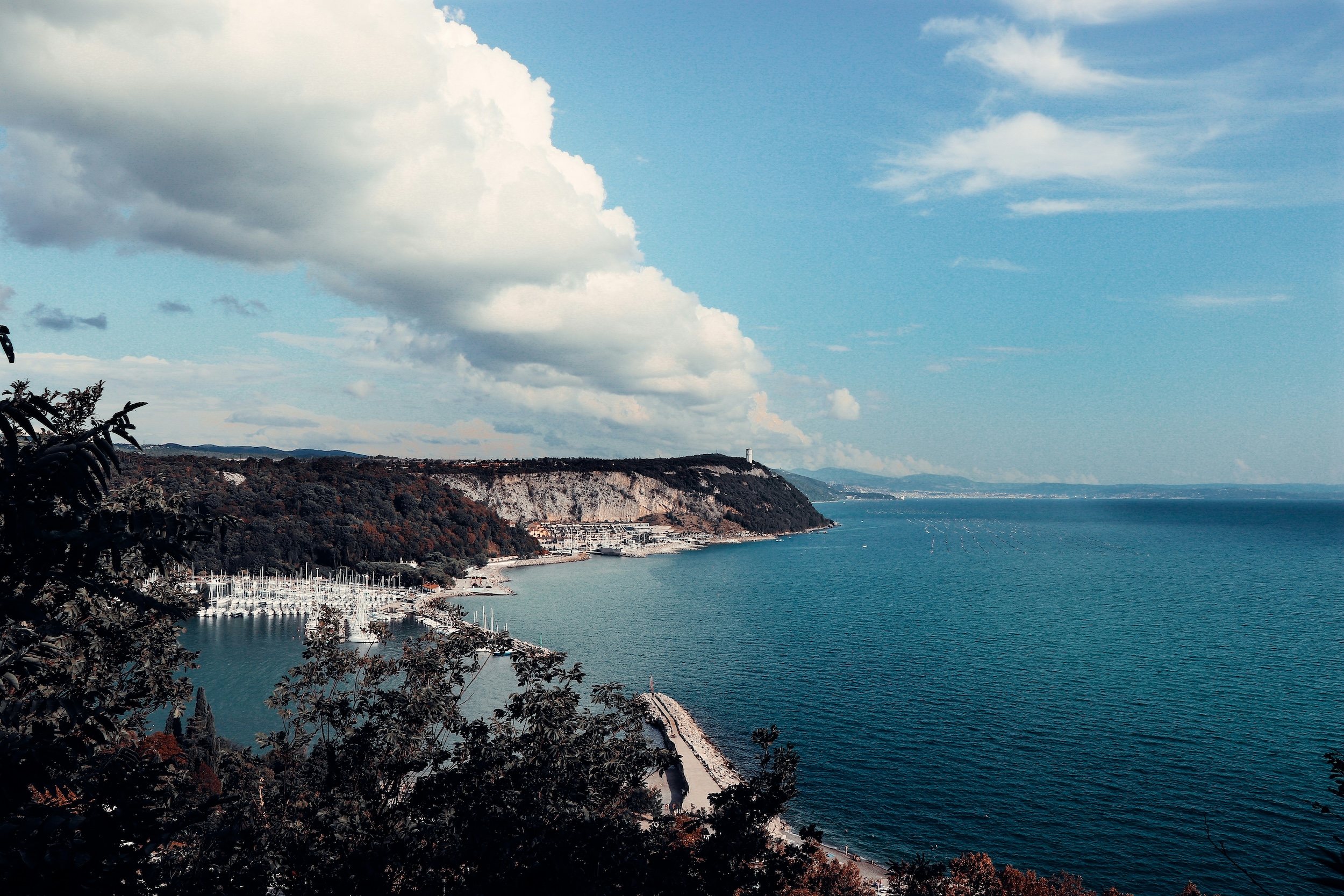
Photo of Trieste. Photo by Joshua Rondeau on Unsplash.
Mary and May Maxwell had been teaching in Germany for a year, and had received at least 2 invitations for pilgrimage on the part of the Guardian, if not more. Shoghi Effendi wrote to invite May and Mary Maxwell on pilgrimage on 28 October 1935, and again in January 1936. By 29 May 1936, May and Mary wanted to come, but the Guardian was too exhausted. Finally, seven months later, the Guardian returned from Switzerland fully revitalized and sent May and Mary a nine-word telegram on 8 December 1936:
Heartily approve your decision sail from Trieste love both.
They had absolutely no inkling of what was about to happen, something that would change the Maxwell family’s life and destiny forever.
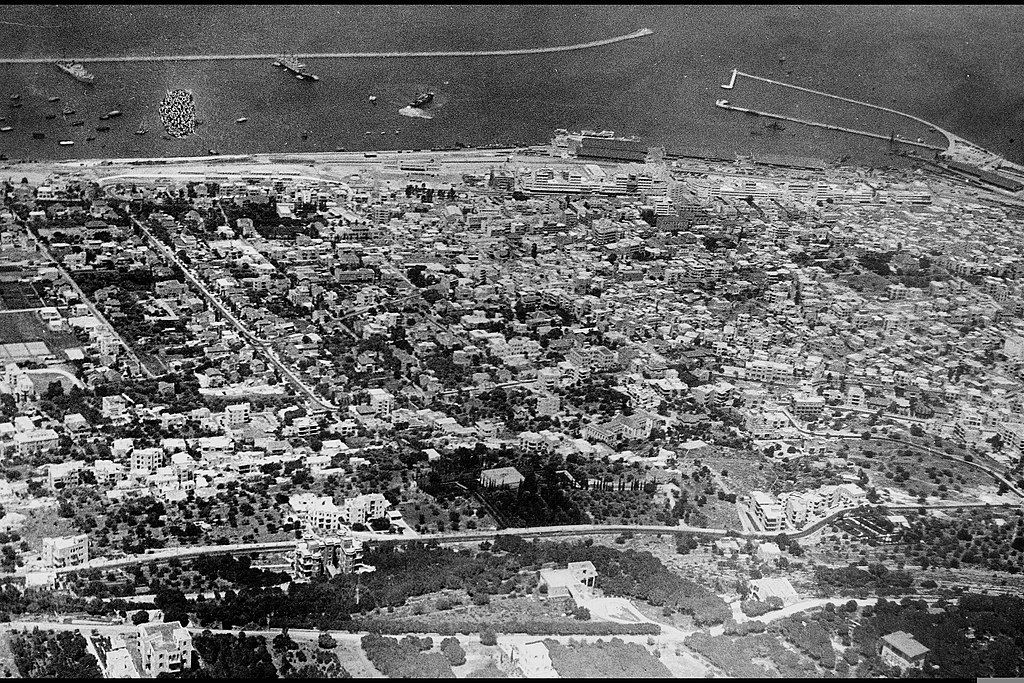
An aerial photograph of Haifa taken on 20 June 1937. Source: Wikimedia Commons.
May and Mary Maxwell sailed into Haifa on 12 January 1937, after traveling by train from Hamburg to Italy and leaving by ship on 3 January. They signed their names in the Pilgrim Book as May Bolles Maxwell and Mary Sutherland Maxwell.
This would be May Maxwell’s fifth and last pilgrimage. Her first, as a young woman of 29 was in 1898, she had returned with her husband William Sutherland Maxwell in 1909, and her third and fourth pilgrimages were in 1923 and 1924, on either end of the Guardian’s Switzerland retreat in the summer of 1923.
They spoke at length to the Guardian about their activities around Europe, and Shoghi Effendi was very happy, and encouraged them. During the first ten days of their pilgrimage, the Guardian became more acquainted with Mary Maxwell’s talents. Mary was 27 years old, stunningly beautiful, extraordinarily witty and deeply intelligent. She was following in the footsteps of her mother as a deepened, talented teacher of the Cause, a powerful speaker, and to add to all her talents, she was a deeply gifted writer.
May Maxwell noticed that the more Shoghi Effendi came to know Mary Maxwell, the more he asked about William Sutherland Maxwell, and asked May Maxwell to invite him. The Guardian had long been impressed with Mary Maxwell’s character and her devotion to the Faith. Four months before she came for her second pilgrimage, Shoghi Effendi had written a letter to May Maxwell thanking her for a generous donation, expressing the wish that “Mary fulfil your fondest hopes and become in time a most radiant light in the firmament of the Cause,” and he had ended the letter sending his love to May, Sutherland Maxwell, and Mary, for whom, he said “I have the greatest admiration and affection.”
May and Mary spent a heavenly night in Bahjí on 22 January, ten days after their arrival, which May described in a letter written on the stationery of Bahjí as “an eternity of beauty, wonder and love.”
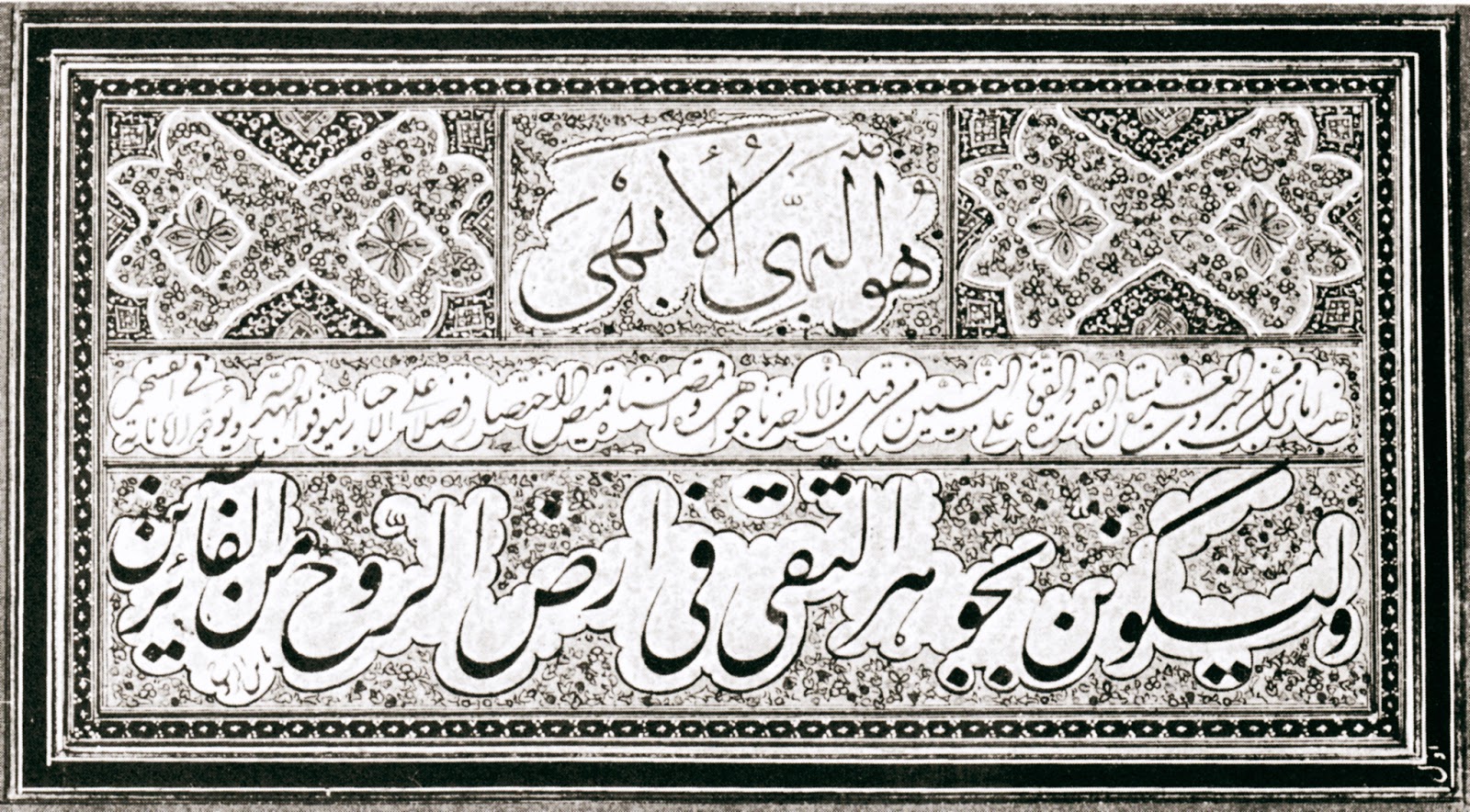
The first verse of Bahá'u'lláh’s Hidden Words in Arabic arranged and written in three different styles of calligraphy by Mishkín-Qalam, as in the story below where Shoghi Effendi gives three types of calligraphy to Mary Maxwell for practice. Originally published in The Baha’i World 1968-1973. Source: Bahá'í Points of Interest.
A few weeks after Mary’s arrival in the Holy Land, Shoghi Effendi, in the course of unforgettable evenings, when he gave her a set of reed pens, black ink, and special mulberry papers and gently tutored her in Persian calligraphy. Shoghi Effendi gave Mary a set of cards to copy from: these notes— the Hidden Words of Bahá’u’lláh in three different calligraphy styles—had been calligraphied by Mishkín-Qalam himself. Rúḥíyyih Khánum kept her calligraphy exercise books from this lovely period for the rest of her life.
The Guardian also gave special attention to Mary’s general training and education, showing her a deep kindness, and understanding.
May Maxwell, for her part, gradually, gently learned that a marriage proposal was in the workings, mainly through a confidential conversation which Shoghi Effendi’s mother had with her, in true eastern fashion.
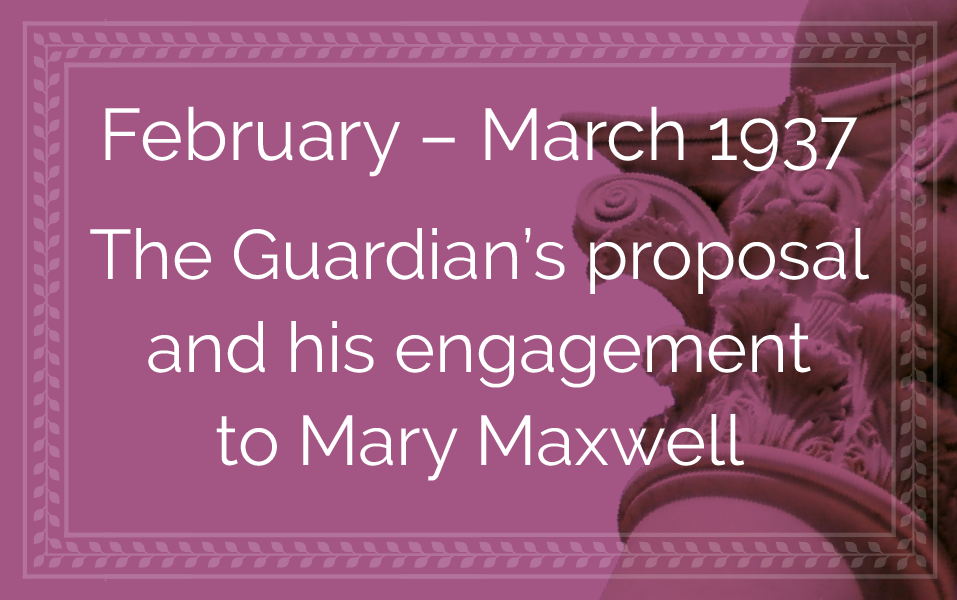
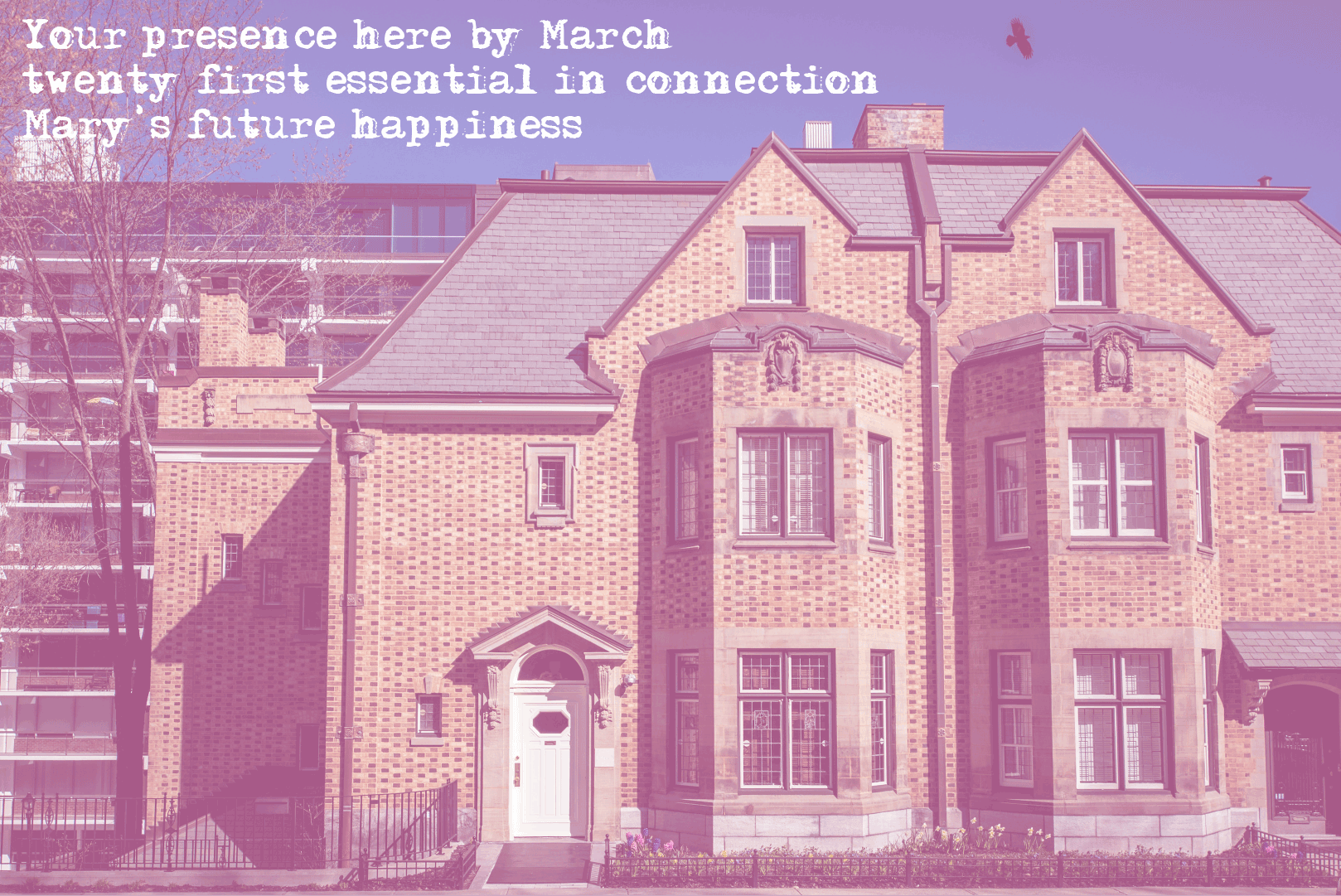
“Your presence here” The Maxwell home—now a Bahá'í Shrine—in Montreal, Canada at 1548 Pine Avenue. ‘Abdu’l-Bahá stayed in this home during his six-day visit to Montréal. Source: Bahá'í Media Bank, © Bahá'í International Community 2023.
Then, on 26 February 1937, May Maxwell sent her husband William Sutherland Maxwell in Montreal a momentous cable which was delivered to their home on Pine Avenue:
Your presence here by march twenty first essential in connection Mary’s future happiness great destiny complete secrecy absolutely essential mention to no one if necessary use pretext visit to Randolph you can sail Berengaria on March third and catch Triestino March tenth Trieste arriving Haifa fifteenth make Florida money available cable reply our devoted love May.
The next day, on 27 February 1937, Mary sent her father an extraordinary telegram, asking for consent:
Daddy – Ask your consent for my marriage confirm my great happiness absolute secrecy required until after wedding and official announcement longing for your arrival bring originals Masters tablets please cable consent immediately Your devoted loving Mary
William Sutherland Maxwell replied the very same day he received her telegram:
Surprised and overjoyed consent granted deepest love and devotion Shoghi mother you. leave Berengaria Wednesday go via brindisi arrive fifteenth Daddy.
William Sutherland Maxwell boarded the Santa Maria del Casale in Brindisi on 11 March and arrived in the port of Haifa on 15 March 1937, on the lunar date of the Birthday of Bahá’u’lláh.
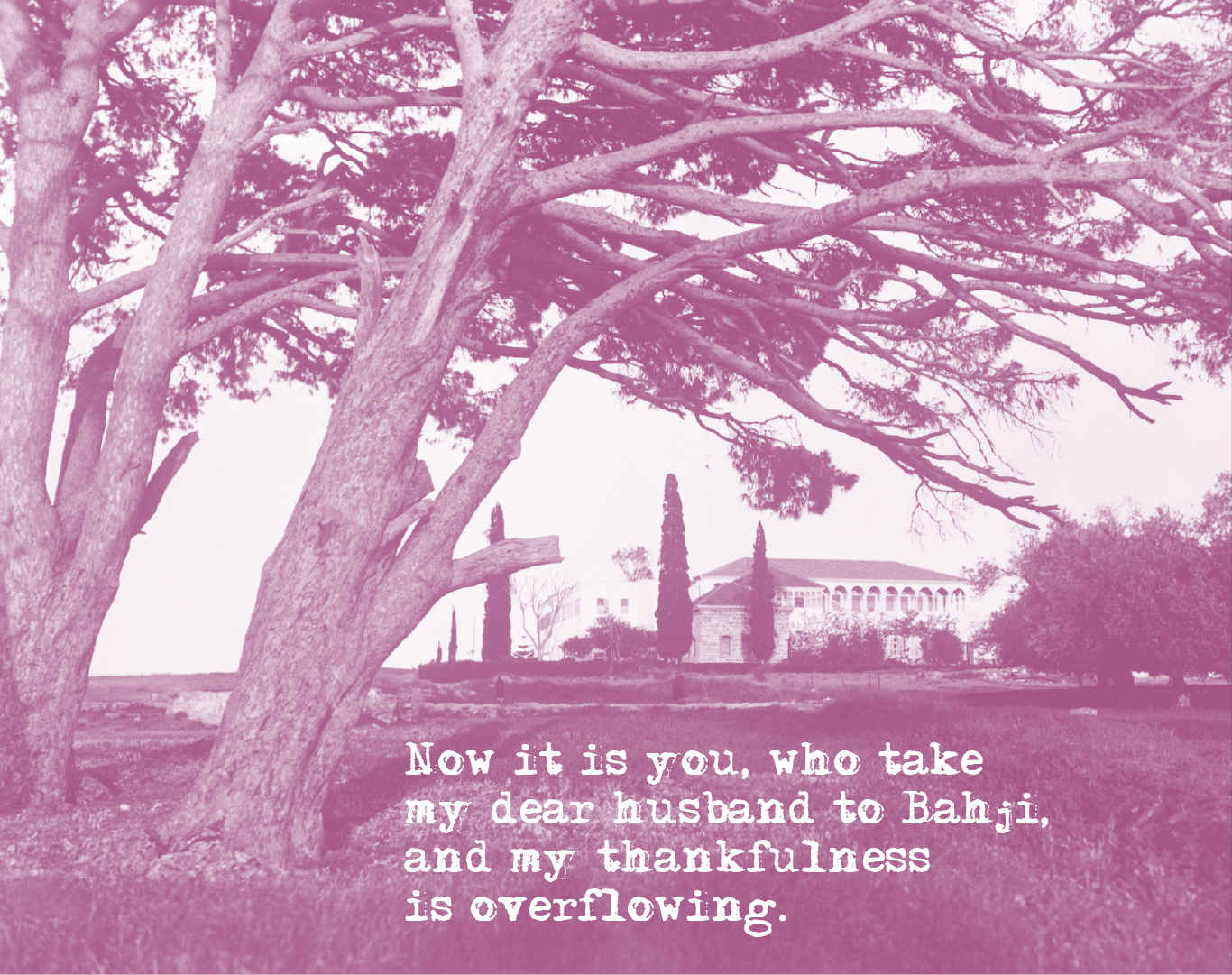
Background image: Shrine of Bahá’u’lláh, Mansion of Bahjí and surrounding area, 1930s. Source: Bahá'í Media Bank, © Bahá'í International Community 2023.
That same day, 15 March 1937, May wrote a very touching note to Shoghi Effendi on the stationery of the Pilgrim House:
Beloved Guardian,
Today I realize more profoundly than ever in my life the deep meaning of the Master’s Words to me in Montreal—"God has perfected all His bounties in you” and this, despite my utter unworthiness.
Now it is you, who take my dear husband to Bahjí, and my thankfulness is overflowing. May I humbly beg, on this blessed day your prayers for all my near and dear ones in the seen and in the unseen worlds; for all those with whom my “heart is vitally connected,” for whom the Master made me such wonderful promises…
With deepest love and humble devotion, I am yours, May M.
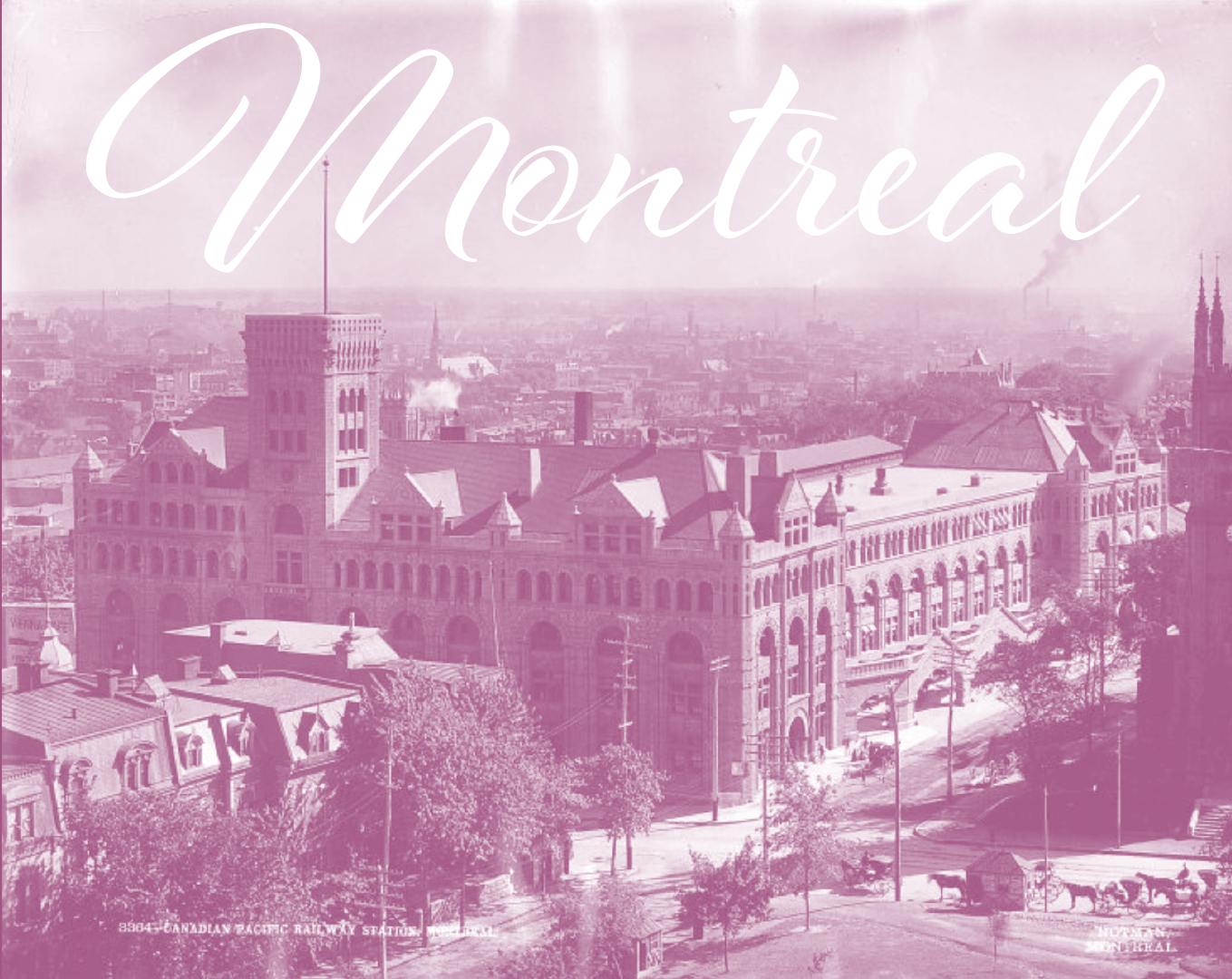
Windsor station in Montreal, around 1900. This is the train station at which 'Abdu'l-Bahá arrived at 8:40 p.m. on Friday, on 30 August 1912, where He was welcomed with two carriages by William Sutherland Maxwell and brought to the Maxwell home on Pine Street, where May and a 2-year-old Mary Maxwell were waiting for Him. This is the station that we chose to illustrate Shoghi Effendi’s dream about a train station in Montreal. Source: Wikimedia Commons.
At some point before his wedding, Shoghi Effendi had a dream, which confirmed to him that Mary Maxwell was his future wife.
He dreamt that he was in a large ship sailing for North America. The Captain of the ship was 'Abdu'l-Bahá. They reached the shores of America, then boarded a train, and when the train stopped at a station, the Guardian looked at the sign.
It read “Montreal.”
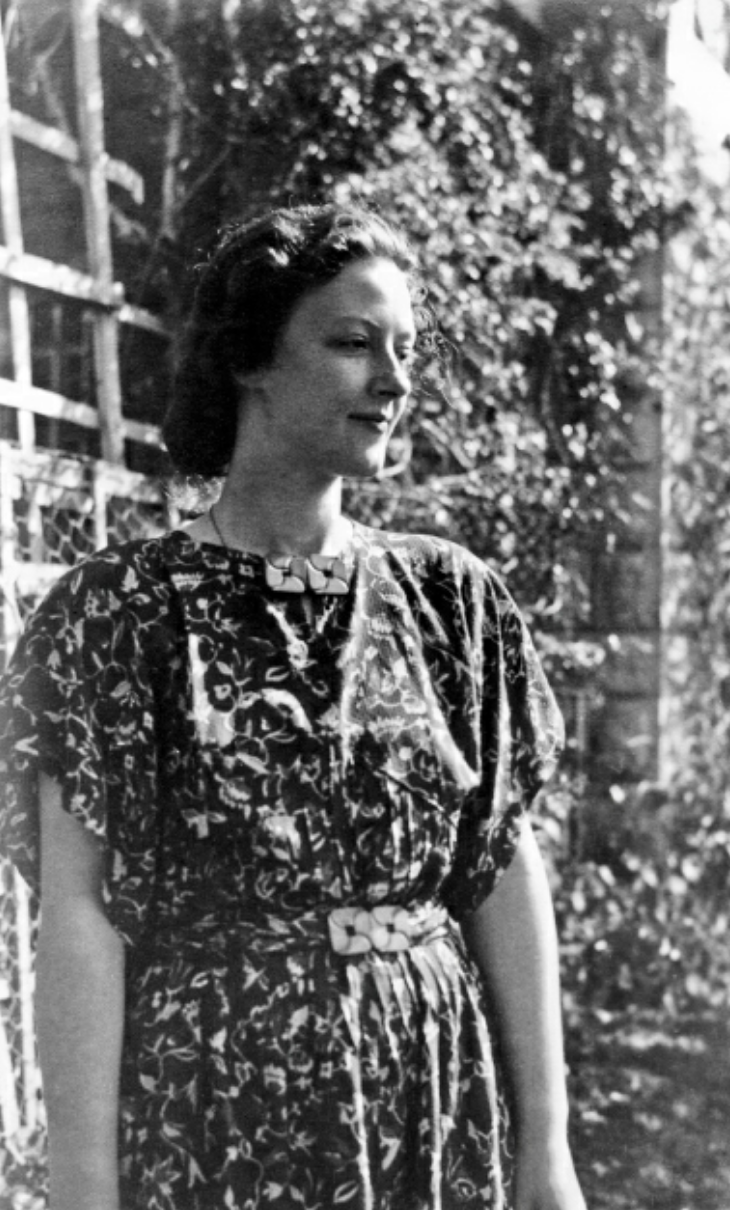
Mary Maxwell (Rúḥíyyih Khánum) in the garden of the Western Bahá'í Pilgrim House in Haifa, shortly before her marriage to Shoghi Effendi, 1937. Source: Bahá'í Points of Interest.
Mary Maxwell had revered, almost worshipped the Guardian of the Faith, since she had come on her second pilgrimage in 1926, at the age of 15, and shared the same devotion to Shoghi Effendi as her mother did. She had fully and completely given her heart and soul, her entire being to her Guardian.
Mary Maxwell herself knew nothing about her upcoming marriage until a week or two later, when one day, as the mimosa trees were in full bloom with their miniature golden suns, Shoghi Effendi’s younger sister Mihrangíz told Mary:
Shoghi Effendi wants to see you in his room.
The Guardian always wore a simple Bahá'í ring in the shape of a heart which the Greatest Holy Leaf had given him, engraved with the symbol of the Greatest Name. On the afternoon when he chose Mary Maxwell to be his wife, he took the precious, meaningful ring off his ring finger, and placed it on the same ring finger of Mary Maxwell’s hand telling her:
Now no one must see that you are wearing it.
It would be Shoghi Effendi himself who would sustain Mary Maxwell as she received the most overwhelming news of her life: that she, Mary Sutherland Maxwell, was to become the wife of the Guardian. The 15 minutes of their engagement was the only time they were alone together before their marriage on 24 March. Mary Maxwell kept the ring hidden inside her blouse, hanging around her neck from a chain.
After their marriage, Rúḥíyyih Khánum had another copy of the exact same ring made for the beloved Guardian. Both Rúḥíyyih Khánum and Shoghi Effendi were buried with this ring on their fingers.
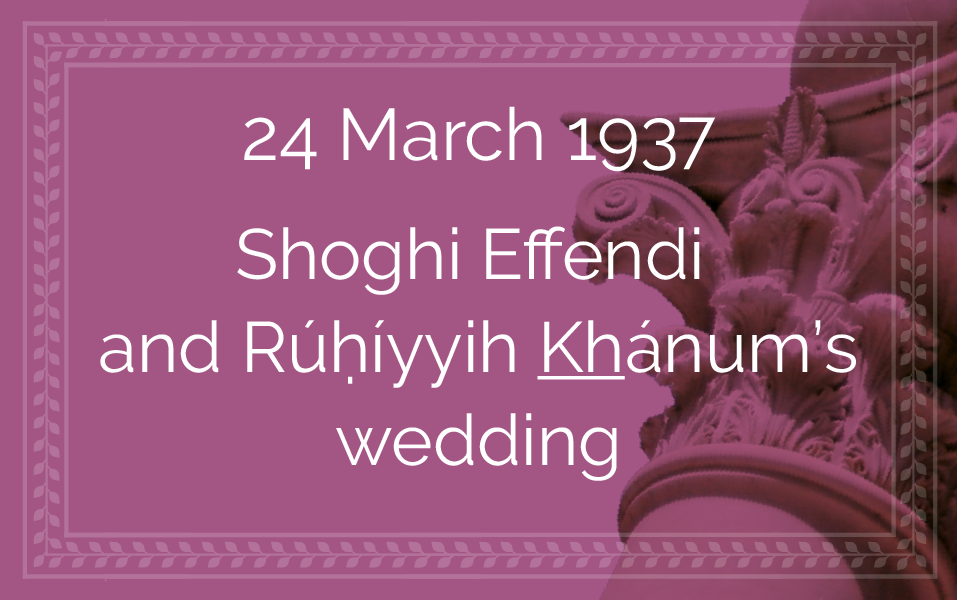
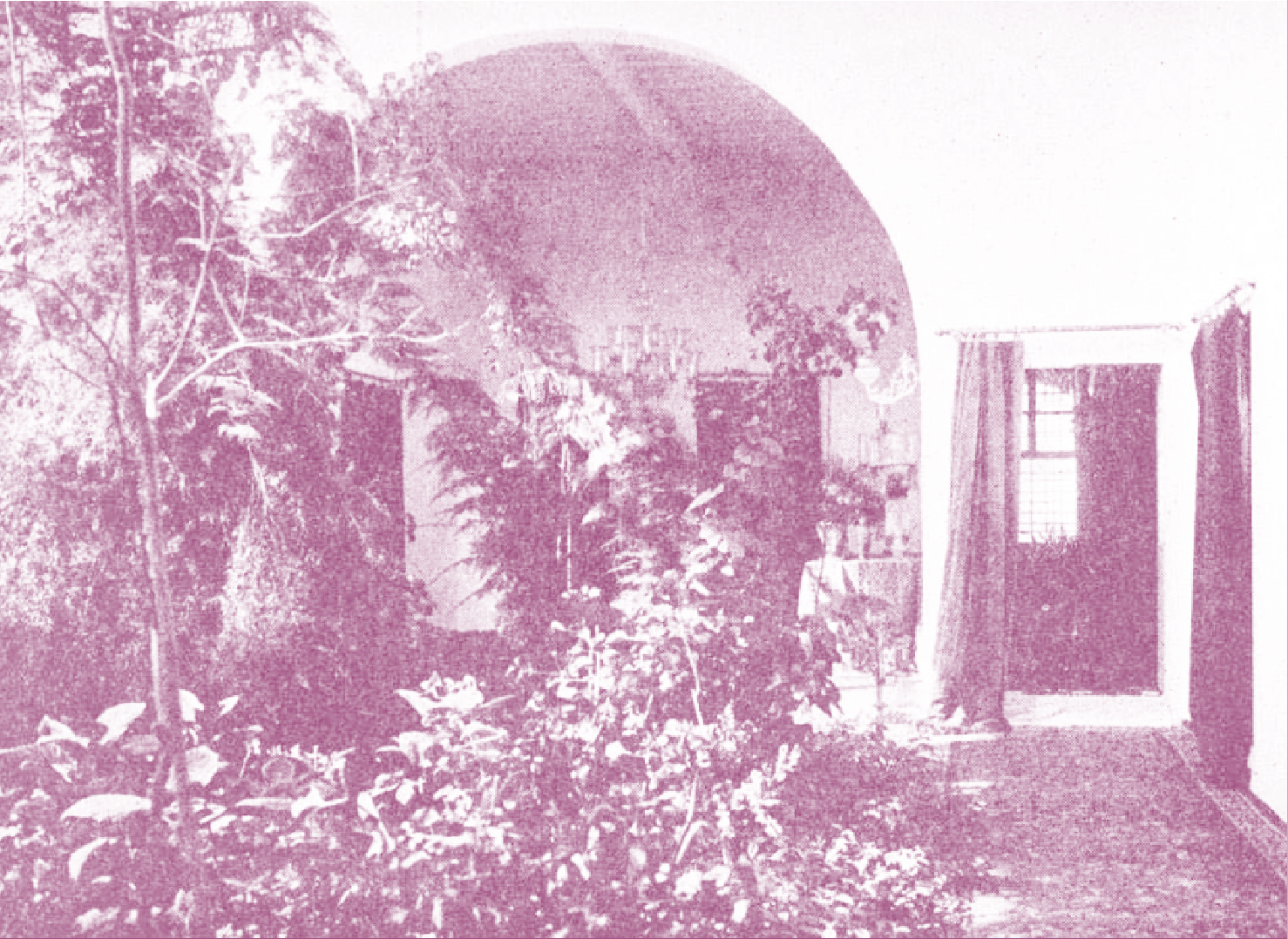
Views of the outer Shrine of Bahá’u’lláh at Bahjí. The door pictured on the photograph at the right of the imag is the inner sanctum of the Shrine. This photograph was originally published in The Bahá’í World Volume 3, page 11. Source: Bahaimedia.
As we have learned to get to know Shoghi Effendi, it will come as no surprise that his wedding was utterly simple, profoundly spiritual, and perfect in its beauty and simplicity, truly a wedding to admire, and an example to aspire to instead of the complications of the usual eastern and western convoluted dos, weighed down by the expensive trappings of tradition.
Speaking of this most important aspect of the Guardian’s wedding, Rúḥíyyih Khánum later stated, drawing a parallel between the Guardian’s own simple wedding and 'Abdu'l-Bahá’s equally simple wedding 64 years before:
Surely the simplicity of the marriage of Shoghi Effendi—reminiscent of the simplicity of 'Abdu'l-Bahá's own marriage in the prison-city of Akká—should provide a thought-provoking example to the Bahá'ís everywhere.
No one knew about the Guardian’s upcoming wedding.
The only people who were informed were the Guardian’s parents, Mary Maxwell’s parents, and three of Shoghi Effendi’s siblings—one brother and two sisters.
The Guardian strongly urged everyone to keep the wedding a secret, knowing from his past painful experiences how much trouble major events in the Faith could stir up.
Because essentially no one was informed about the wedding, it was a surprise to the servants and the local Bahá'ís when they saw Shoghi Effendi drive away, alone with Rúḥíyyih Khánum in the car. They arrived at the Shrine of Bahá'u'lláh in Bahjí on the afternoon of 24 March 1937.
The heart of the Guardian had drawn him to the most Sacred Spot on the planet at this important moment in his personal life.
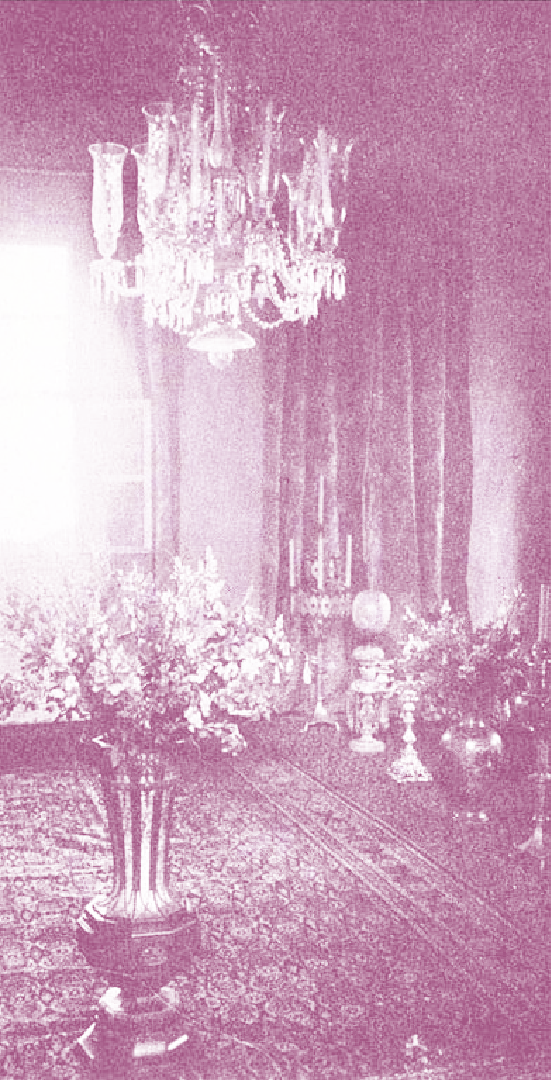
“This is the reality of marriage.” Photograph of the inmost Shrine of Bahá’u’lláh at Bahjí, where the story below takes place. This photograph was originally published in The Bahá’í World Volume 3, page 5. Source: Bahaimedia.
When they arrived at Bahjí, Shoghi Effendi asked Mary Maxwell to give him his ring—the Greatest Holy Leaf’s ring he had given her when he chose her to be his wife—and which she had been wearing concealed around her neck since that day.
Shoghi Effendi placed the ring on Mary Maxwell’s ring-finger, the same finger on which he had always worn the ring himself.
This was the only gesture he made.
Shoghi Effendi entered the inner Shrine of Bahá'u'lláh, beneath the floor of which Bahá'u'lláh’s Sacred Remains are interred, and gathered up in a handkerchief all the dried petals and flowers that the custodian of the Shrine used to take from the threshold and place in a silver receptacle at the feet of Bahá'u'lláh.
The Guardian and Rúḥíyyih Khánum were alone in the inner sanctuary in the Shrine of Bahá'u'lláh. Shoghi Effendi chanted two prayers, and he later told Rúḥíyyih Khánum that that was the reality of the marriage. Nothing else apart from the prayers was said, everything was silent.
When they returned to Haifa, the Guardian’s. mother took Shoghi Effendi and Rúḥíyyih Khánum into the room of the Greatest Holy Leaf.
Rúḥíyyih Khánum was dressed very simply, all in black—a black skirt suit, black shoes, a black bag, and a small black turb—except for a white lace blouse.
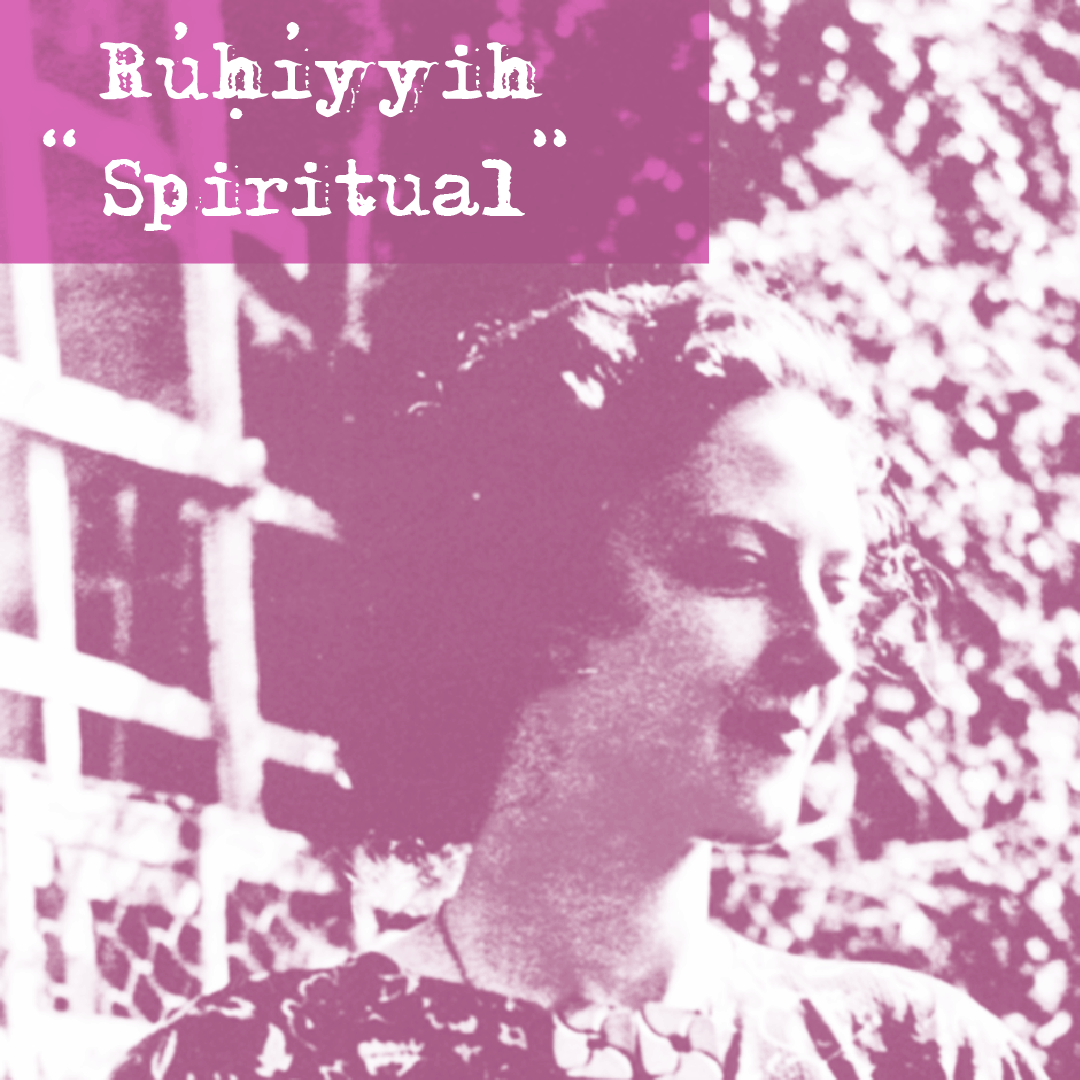
Just as Fáṭimih Khánum had been given a new name by Bahá'u'lláh shortly before her marriage to 'Abdu'l-Bahá, the Guardian bestowed a new name on Mary Maxwell the day they were married.
From this moment on, Mary Maxwell would be known as Rúhíyyih Khánum. Rúhíyyih meaning “spiritual” and Khánum indicating that she was a Lady.
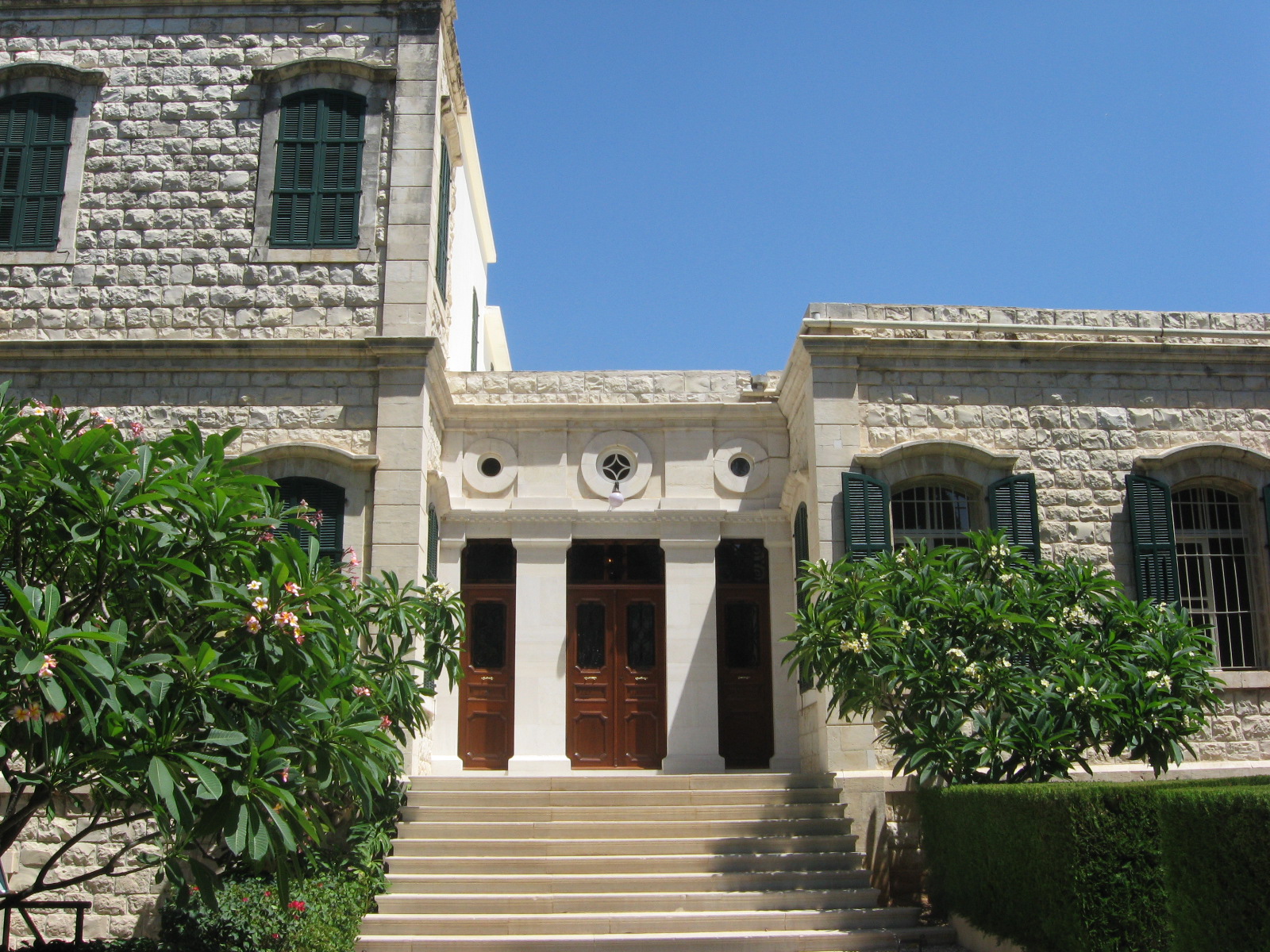
House of the Master. Source: Bahaimedia.
To Rúḥíyyih Khánum, the fact that Shoghi Effendi chose to get married in the Greatest Holy Leaf’s own bedroom was the most revealing gesture of the intense love he had for Bahíyyih Khánum, his Great-Aunt who had passed away just 5 years ago.
Everything in the Greatest Holy Leaf’s room had been perfectly preserved, just as it was in her days.
As Rúḥíyyih Khánum and Shoghi Effendi stood beside her bed, hand in hand, they had the simple Bahá'í marriage ceremony, each repeating the marriage verse in Arabic:
First the verse pronounced by Shoghi Effendi:
inná kullun li'lláh ráḍún (We will all, verily, abide by the Will of God)
Then the verse pronounced by Rúḥíyyih Khánum:
inná kullun li'lláh ráḍíyát (We will all, verily, abide by the Will of God)
That was the marriage of the Guardian. As Rúḥíyyih Khánum beautifully stated:
There was no celebration, no flowers, no elaborate ceremony, no wedding dress, no reception.
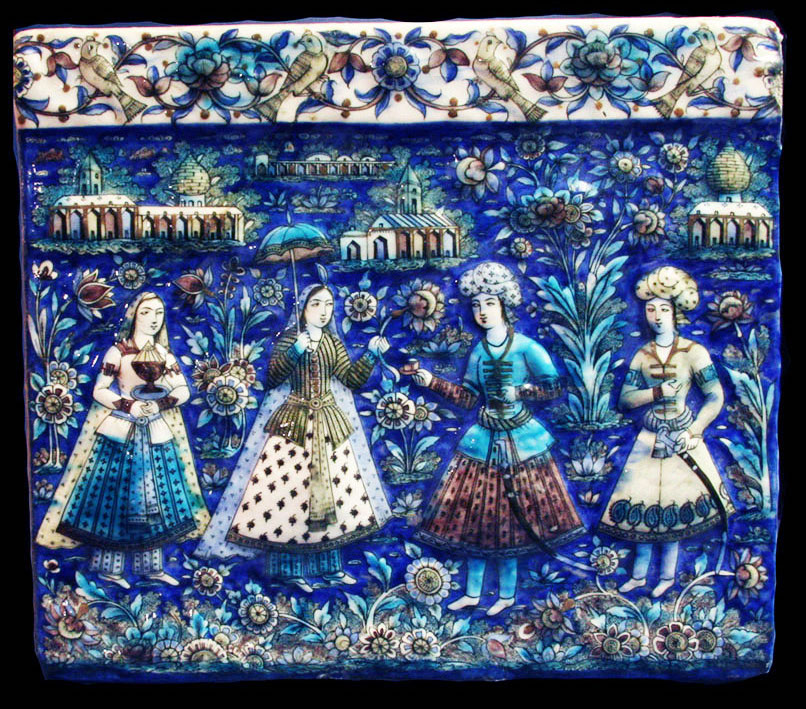
To illustrate a story about a Persian wedding tradition, a 19th century Persian wedding scene portrayed in a Qajar Persian pottery tile. Source: © Anavian Gallery, used with permission.
After the recital of the marriage vows in the room of the Greatest Holy Leaf, Ḍíyá‘íyyih Khánum, the mother of Shoghi Effendi, placed Rúḥíyyih Khánum’s hand in the hand of her son, according to the old Persian tradition of “dast be dast.”
In traditional Persian culture, only a husband and wife could hold hands. When Ḍíyá‘íyyih Khánum placed Rúḥíyyih Khánum’s hand in Shoghi Effendi’s, it was a solemn act in Persian culture, signifying that they were now husband and wife.
The symbolism of “dast be dast” is that the husband wife’s hands were now joined together forever, for the rest of their lives and under the protection of God.
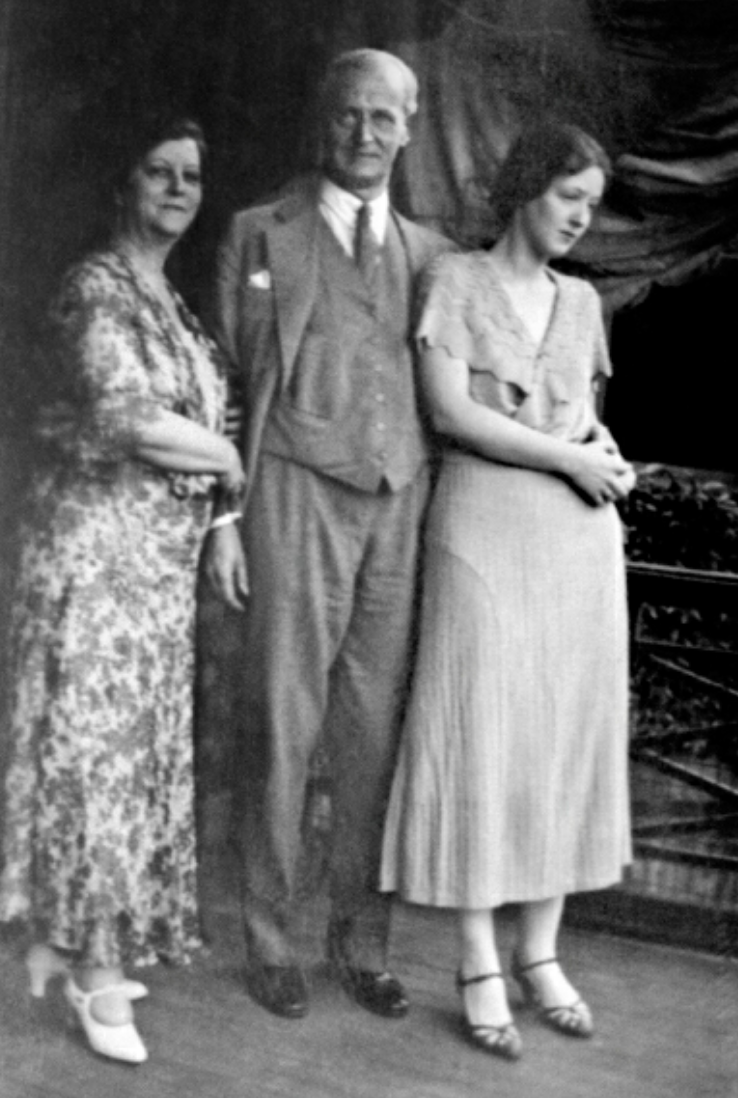
The only known photograph of the three Maxwells of Montreal: May, Sutherland Maxwell and Mary Maxwell. Source: The Maxwells of Montreal: Middle Years 1923-1937 Late Years 1937-1952. Violette Nakhjavani, Kindle Edition, Location 1651.
Rúḥíyyih Khánum recorded the historic event of her marriage in her father’s Daily Memorandum book – a beautiful album made of red and black leather with letters tooled in gold:
Mary Sutherland Maxwell, daughter of William Sutherland and May Ellis Maxwell was married to Shoghi Effendi, the First Guardian of the Bahá’í Faith, on March 24th, 1937 at Haifa, Palestine.
The same day as her wedding, Rúḥíyyih Khánum wrote this moving short letter to her parents, addressed “to Mother and Daddy” and written on the letterhead stationery of the Bahá’í Pilgrim House:
My dearest, dearest ones, On this most glorious day of my life how can I ever thank you both enough and express my love to you – for the life you gave me? For all your devotion to me; the example of your own happy marriage that gave me an ideal in life; the beauty of our home which has enriched my very soul.
From you both I have woven into me so many characteristics that I hope now will be of service to the Guardian and [the] Cause. Surely no child ever had two better, more loving parents than I! And as you have always been my pride and my dearests and my joy – so in my new life you will always continue to be!
Your own Faithful Mary
Shoghi Effendi would later refer to his wife Rúḥíyyih Khánum, as his “helpmate,” “shield” and “tireless collaborator in the arduous tasks I shoulder.”
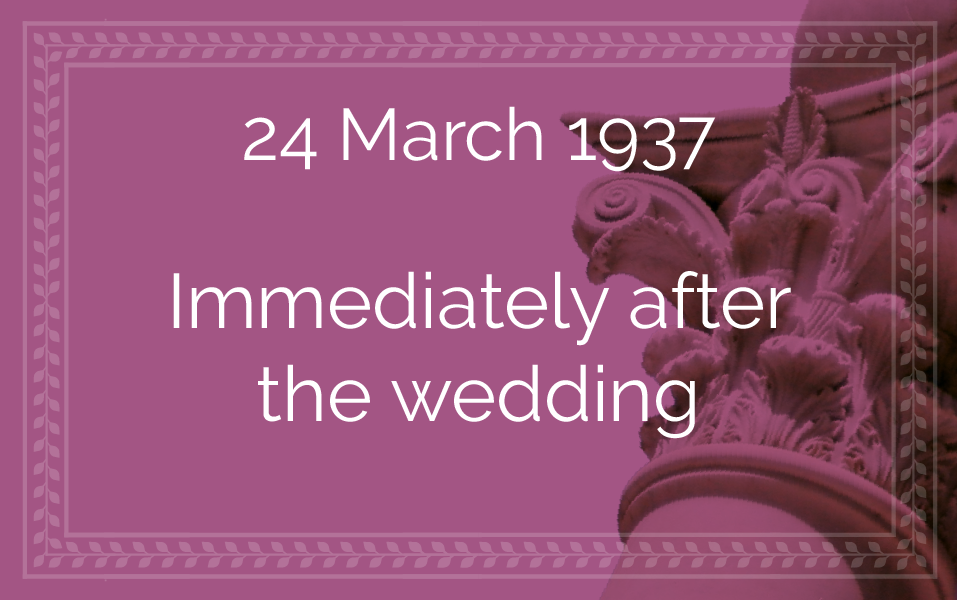
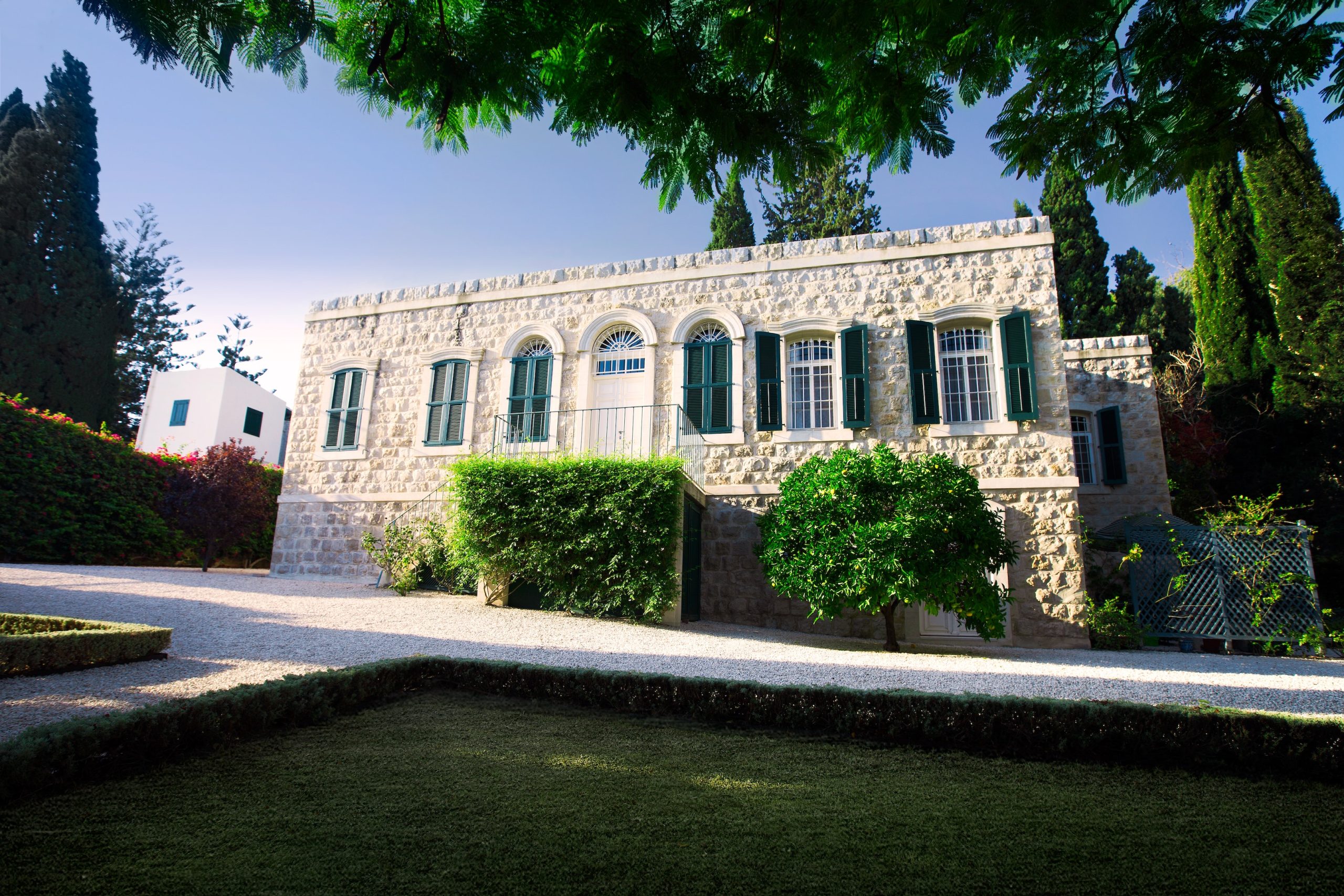
The Western Pilgrim House at 4 Haparsim, across the street from Rúḥíyyih Khánum’s new home, the Master’s House, where they have dinner on the first night of their marriage. Source: Bahá'í Media Bank, © Bahá'í International Community 2023.
After the marriage ceremony, Rúḥíyyih Khánum and Shoghi Effendi exited the Greatest Holy Leaf’s room and both families greeted and embraced them. Later Shoghi Effendi and Rúḥíyyih Khánum, his new Canadian wife stopped by the Pilgrim House and were embraced by the pilgrims, utterly overwhelmed with joy.
May Maxwell dwelt on the spiritual honour and responsibility which this marriage had bestowed upon the Maxwell family and offered her prayers to Rúḥíyyih Khánum, begging Bahá'u'lláh to bestow on her daughter—now the Guardian’s wife—the strength of spirit to overcome all spiritual tests.
Shoghi Effendi’s parents signed their marriage certificate at this time, and afterwards, Shoghi Effendi returned to his work, and Rúḥíyyih Khánum went back to the western Pilgrim House with some of 'Abdu'l-Bahá’s family. Shoghi Effendi rejoined them at dinner time, when he showered his love and congratulations on William Sutherland and May Maxwell. During dinner, Fujita carried Rúḥíyyih Khánum’s suitcases to her new home with the Guardian, the house of 'Abdu'l-Bahá.
He took the handkerchief filled with precious flowers he had gathered earlier that day and gave them to May Maxwell, telling her he had brought them for her from the inner sanctum of the Shrine of Bahá'u'lláh.
William Sutherland and May Maxwell signed the marriage certificate after dinner, and Shoghi Effendi and Rúḥíyyih Khánum crossed the streets to the House of the Master, where they sat for a while with the Guardian’s family before retiring to his two rooms—his apartment and his office—built for him with immense love by the Greatest Holy Leaf 15 years ago during the first months of his ministry.
Shortly after their marriage, while Rúḥíyyih Khánum’s parents were still in Haifa, Shoghi Effendi would tell May Maxwell over dinner one night that one of the reasons he had chosen her daughter Mary as his wife was because she was the daughter of May Maxwell.
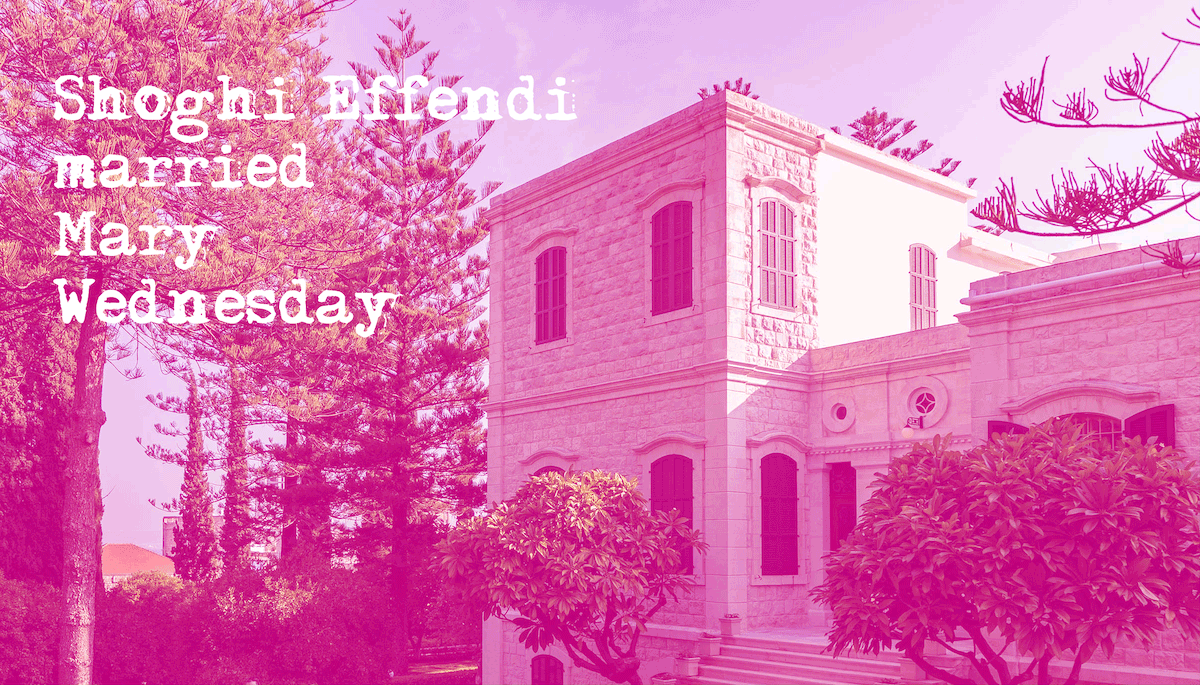
A photograph of the House of the Master, Rúḥíyyih Khánum’s new home. Source: Bahá'í World News Service.
The first people to receive news of Shoghi Effendi and Rúḥíyyih Khánum Rabbání’s wedding were the family members.
The Maxwell and Bolles families received a cable from William Sutherland Maxwell to his sister, Amelia Maxwell Hutchison on the day of the wedding, 24 March 1937:
Shoghi Effendi married Mary Wednesday notify family. Love, Willie.
May Maxwell sent two cables on the same day to the Bolles in Connecticut and Washington with the same message:
Beloved Guardian married Mary Wednesday new name Rúḥíyyih Khánum. All our love.
Four days later, on 28 March 1937, Libbie Maxwell, William Sutherland Maxwell’s brother’s widow, sent a reply on behalf of the entire Maxwell family:
Loving congratulations to all. Libbie and family.
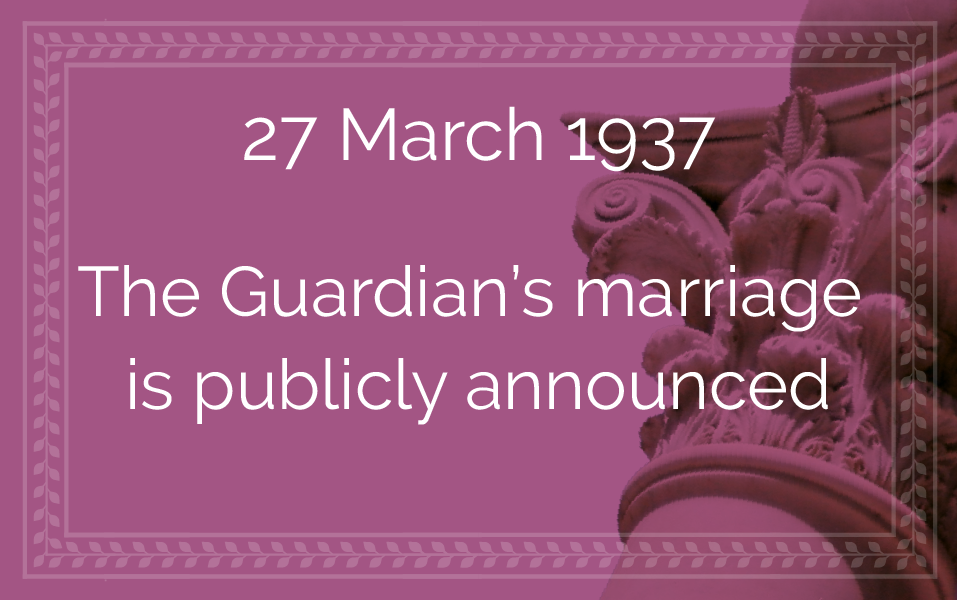
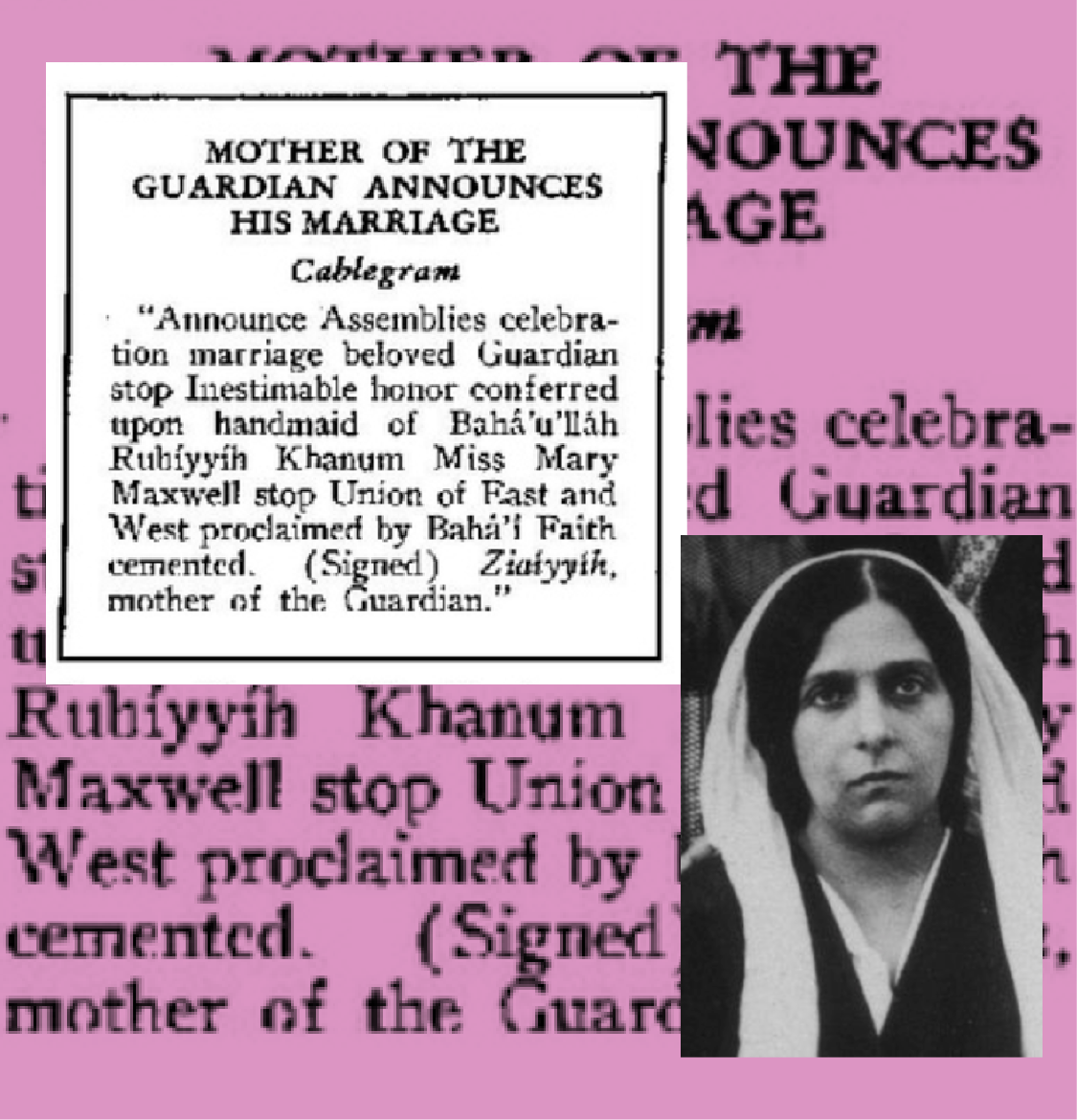
Publication of the official announcement by Ḍíyá‘íyyih Khánum—the mother of Shoghi Effendi—of the Guardian’s marriage in Bahá'í News Number 107 (April 1937). Photograph of Ḍíyá‘íyyih Khánum at a younger age. Source: Bahaipedia.
Three days after the wedding had taken place, on 27 March 1937, the Guardian informed the Bahá'í world of the happy news.
The first to be informed was the National Spiritual Assembly of the United States and Canada in a message written and sent by the Guardian himself but in which, out of propriety, he had signed his mother’s name—Ḍíyá‘íyyih Khánum:
Announce Assemblies celebration marriage beloved Guardian. inestimable honour conferred upon handmaid of Bahá’u’lláh Rúḥíyyih Khánum Miss Mary Maxwell. Union East and West proclaimed by Bahá’í faith cemented
A very similar cable was sent to the Friends in Iran.
The Bahá'í world was electrified. Responses poured in immediately.
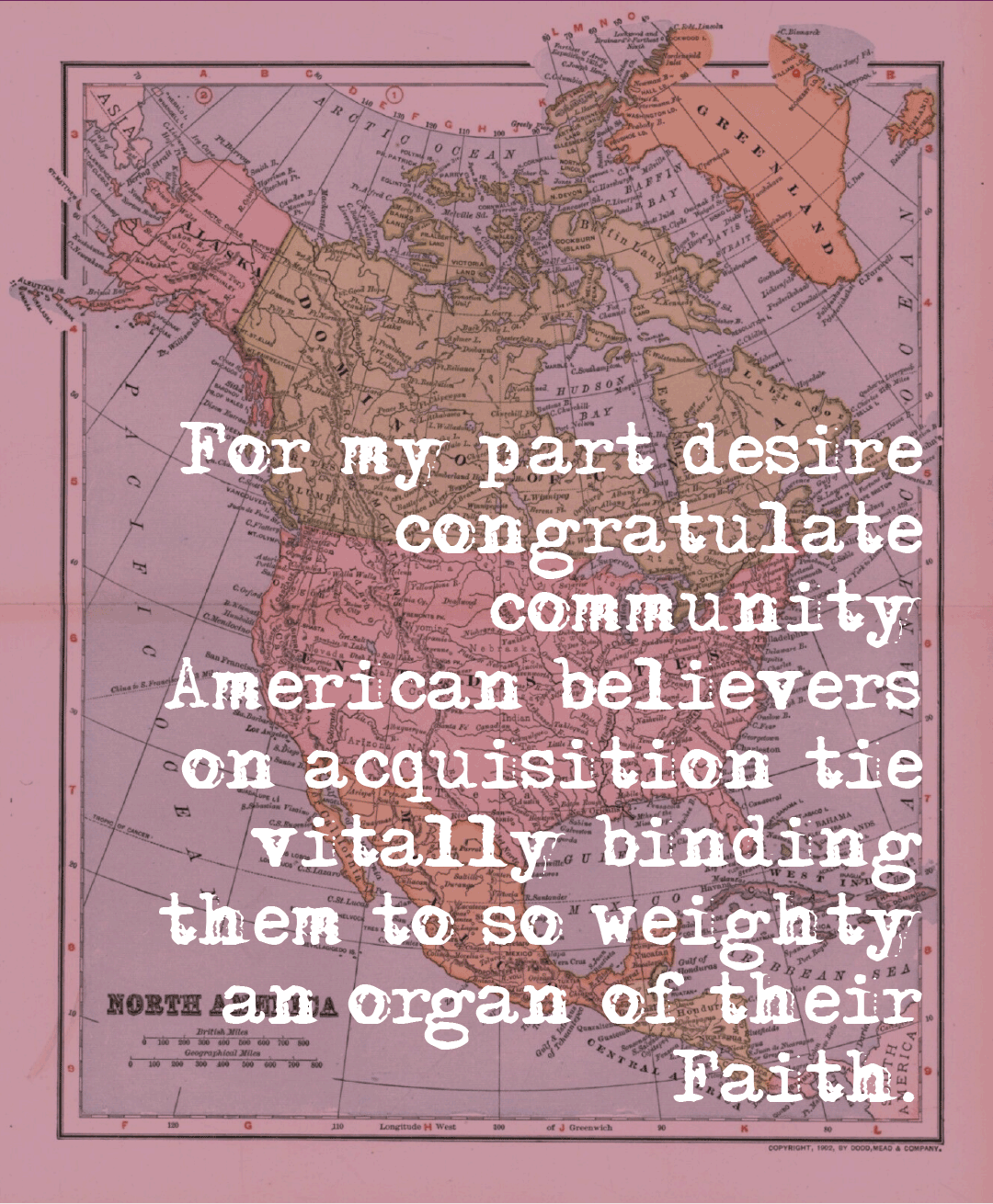
This long-awaited and dearly-cherished news, so long awaited, brought immense joy to the entire Bahá'í world, to individuals and institutions alike and loving congratulations began flooding into Haifa from all parts of the world, carried by ‘Alí-Aṣghar Qazvíní.
The National Spiritual Assembly of the United States and Canada responded:
Assemblies will rejoice your heart stirring announcement beseech divine blessings.
Shoghi Effendi responded:
Joyously acclaim historic event so auspiciously uniting in eternal bond destiny East and West.
Three days later, on 30 March 1937, the Guardian sent a longer message to the National Spiritual Assembly of the United States and Canada, emphasizing this most important point of the direct association of East and West in his own marriage:
Deeply moved your message. Institution Guardianship, head cornerstone Administrative Order Cause Bahá'u'lláh, already ennobled through its organic connection with Persons of Twin Founders Bahá'í Faith, is now further reinforced through direct association with West and particularly with American believers, whose spiritual destiny is to usher in World Order of Bahá'u'lláh. For my part desire congratulate community American believers on acquisition tie vitally binding them to so weighty an organ of their Faith.
Shoghi Effendi most certainly did NOT respond to each message in this way.
His mostly universal answer was an expression of loving appreciation for their congratulations, but deeply attuned to the quality and the sincerity of the sender.
For example, when an individual the Guardian neither liked nor trusted cabled his congratulations, the Guardian did not express appreciation but rather responded:
Praying for you Holy Shrines.
The Bahá'ís of ‘Ishqábád sent their congratulations and Shoghi Effendi replied through an intermediary:
Kindly wire ‘Ishqábád Bahá'ís greatly value message praying continually protection.
John and Louise Bosch—two dedicated, faithful, and capable early believers from the time of 'Abdu'l-Bahá, who had been present during His Ascension—cabled the Guardian:
Illustrious nuptial thrilled the universe.
In his reply, Shoghi Effendi revealed how touched he was by so many expressions of love, including theirs, that were pouring in to Haifa:
Inexpressibly appreciate thrilling message, Deepest love.
The Guardian sent another particularly warm reply to the Antipodes:
Assure loved ones Australia New Zealand profound abiding appreciation.
The National Convention of the United States and Canada sent another congratulatory message to Shoghi Effendi on 29 April 1937:
American Convention gratefully celebrates dual gift, Master’s historic visit and consummation unique union East West. Pledges undying loyalty renewed vigor extend World Order throughout Americas and all lands. Profound dedicated felicitations.
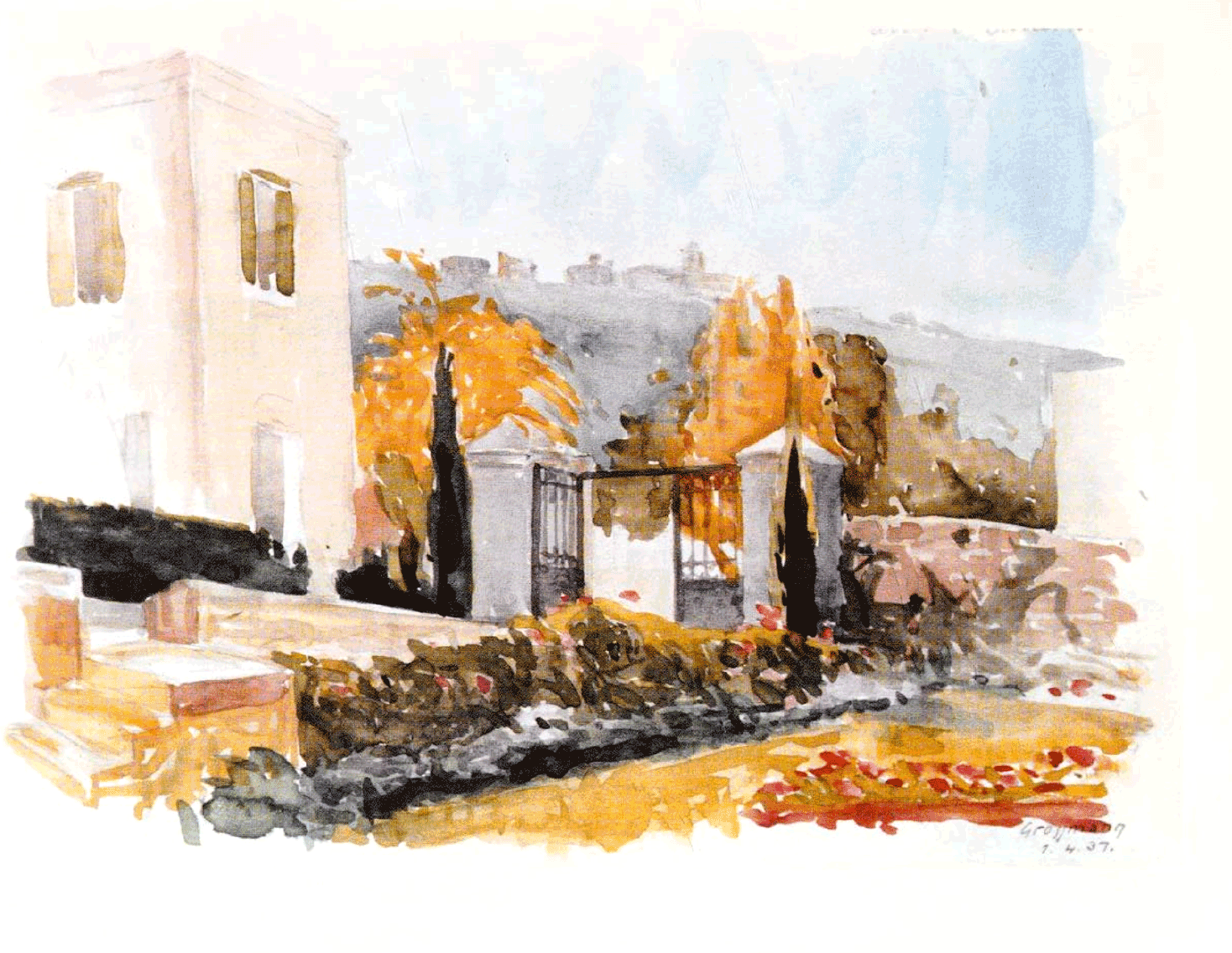
A watercolor of the garden of the House of the Master by Hermann Grossmann from his pilgrimage with his family in 1937. Source: Hermann Grossmann: Hand of the Cause of God: A Life for the Faith by Susanne Pfaff-Grossmann, between pages 52-53.
On 29 March, the Grossmann family, future Hand of the Cause Hermann, his wife Anna, their daughter Susanne, and Hermann’s sister Elsa Maria arrived in Haifa after a five-day sailing journey from Trieste, Italy.
They arrived 5 days after the marriage of Shoghi Effendi and Rúḥíyyih Khánum, and were the first pilgrims to do so. On the evening of their arrival, Shoghi Effendi joined the Grossmanns in the Western Pilgrim House in the company of his young and beautiful wife, Rúḥíyyih Khánum.
To the Grossmanns, Rúḥíyyih Khánum was like a close friend. They had become friends during her year of service in Germany, immediately before coming to the Holy Land, and Rúḥíyyih Khánum had bonded with the German Bahá'ís. She not only loved Germany and Germans and their mentality, but she wrote and spoke the language.
When the Grossmanns congratulated Shoghi Effendi on his recent marriage, the Guardian responded that he had wanted to unite East and West through his marriage and hoped that through Rúḥíyyih Khánum, the bond with the German Bahá'ís would grow especially strong.
The Guardian asked the Grossmanns whether they believed the German friends would be pleased to hear the news of his marriage.
In a letter in German Rúḥíyyih Khánum wrote to Anna and Elsa maria Grossmann after their pilgrimage, she said:
I have prayed for you all, for Germany and its people, in Bahá'u'lláh’s room. May God in His Holiness bless you all. It seems like a privilege to be ablet to say the prayers in German for you—for us!
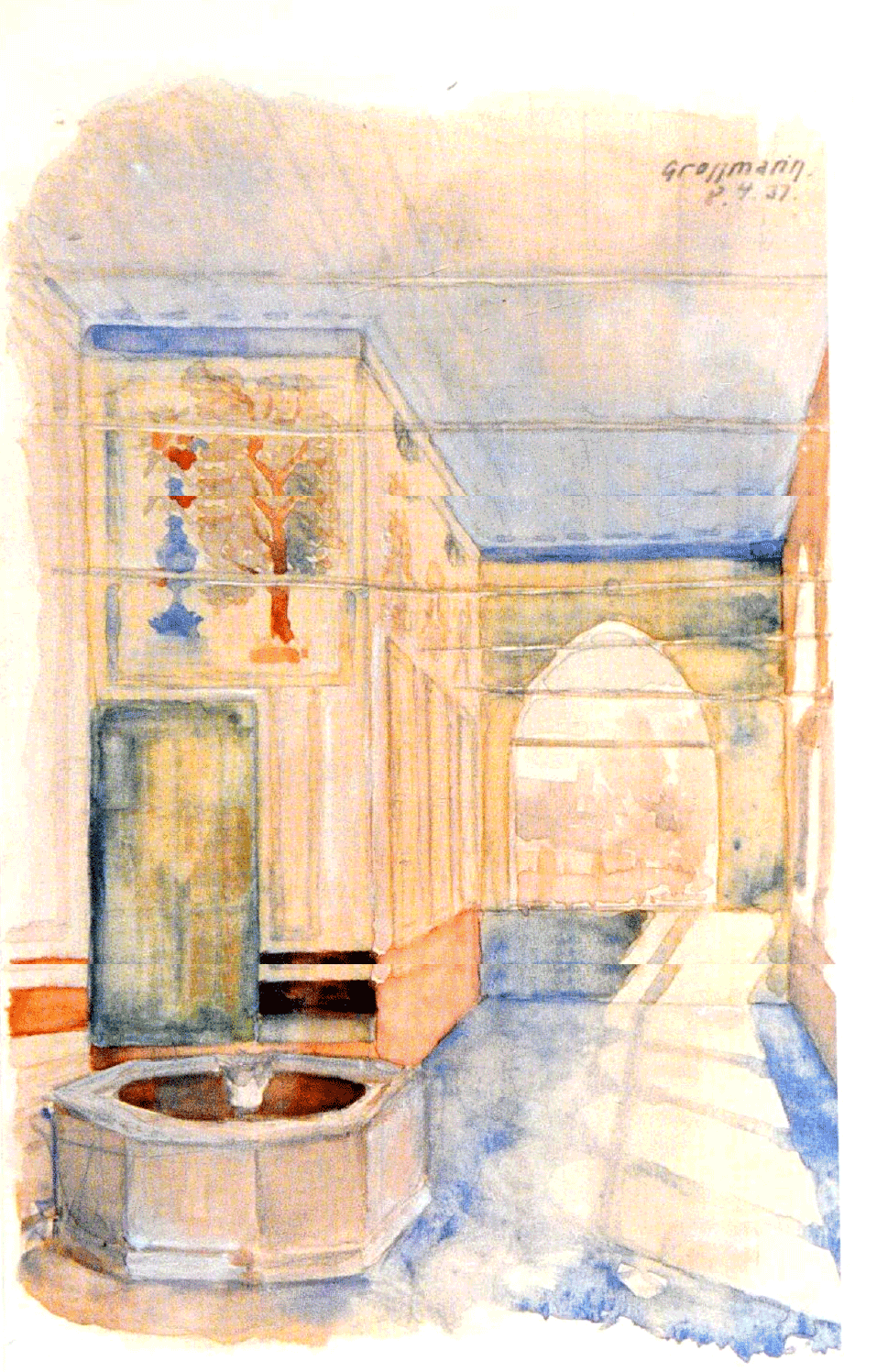
A watercolor of the mansion of Bahjí by Hermann Grossmann, from his pilgrimage in April 1937. Source: Hermann Grossmann: Hand of the Cause of God: A Life for the Faith by Susanne Pfaff-Grossmann, between pages 52-53.
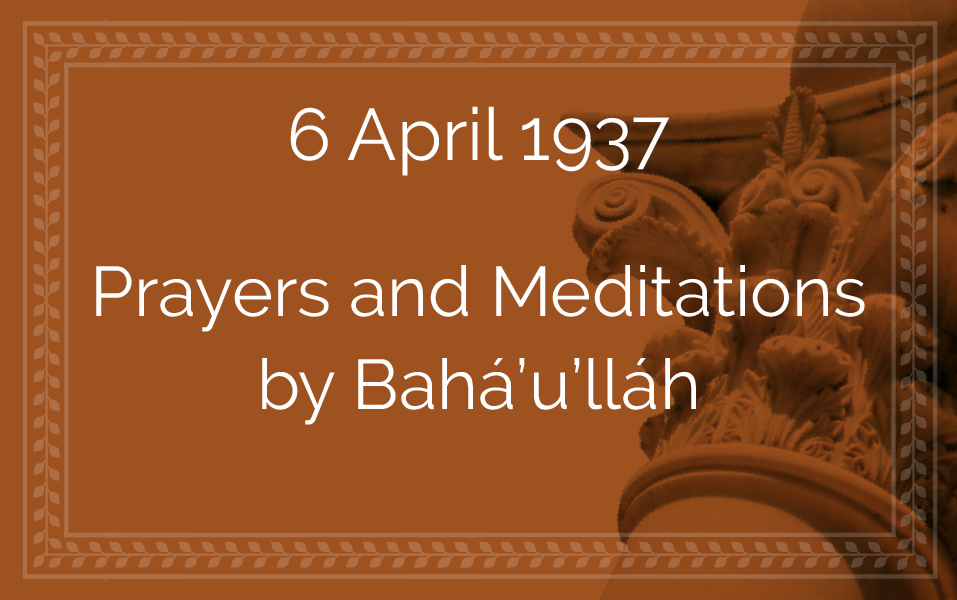
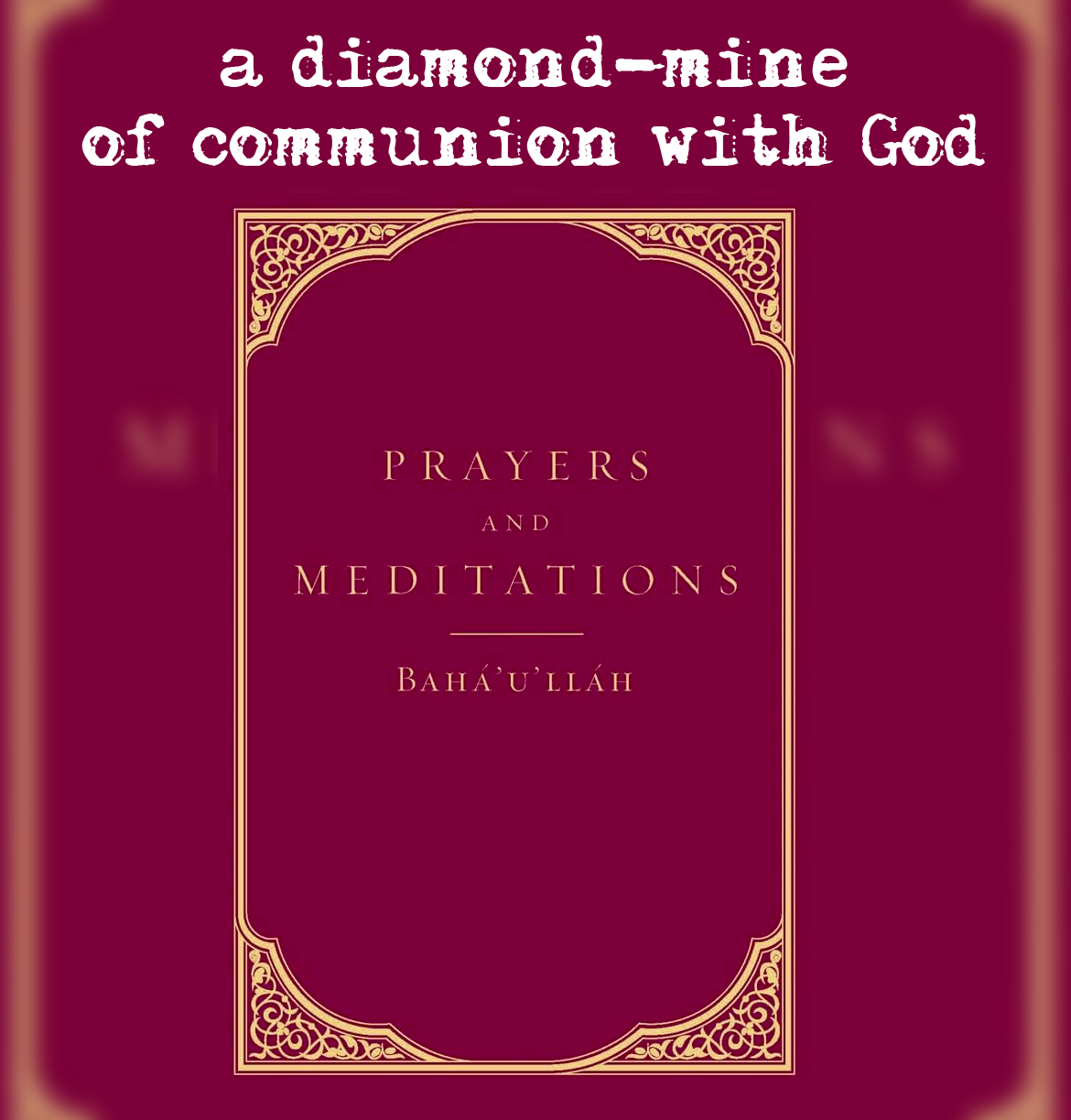
Immediately after his previous masterpiece of translation—Gleanings from the Writings of Bahá'u'lláh—Shoghi Effendi began work on what Rúḥíyyih Khánum considers a companion volume to Gleanings, comparable in its great wealth of spiritual gems and in its content, the translation of a collection of 184 prayers and meditations revealed in Persian and Arabic by Bahá'u'lláh throughout His forty-year ministry.
The Guardian called this next bouquet of devotional utterances, “Prayers and Meditations by Bahá'u'lláh” and Rúḥíyyih Khánum poignantly described the work as “a diamond-mine of communion with God.”
This work of superlative translation, which would become a solace for Bahá'ís, demonstrates in the course of its 339 pages, the wealth of the Bahá'í Revelation in terms of prayers revealed by the Manifestation of God Himself, something that sets the Bahá'í Dispensation apart from all religions of the past.
In late 1936, Shoghi Effendi sent George Townshend the first installment of Prayers and Meditations for his usual editing and reviewing. George Townshend was so overwhelmed by the beauty of Shoghi Effendi’s translations and the exquisite uniqueness of the devotional Writings that he immediately wrote back to the Guardian:
It is very wonderful. Nothing like it in the world.
George Townshend had finished reviewing Prayers and Meditations 6 April 1937, and the book was published soon after.
Bayard Dodge, Shoghi Effendi’s former professor at the American University of Beirut, thanked him for the copy of Prayers and Meditations, showing how keenly he understood the work that had been involved in bringing the volume to light, with a compliment that must surely have touched the Guardian’s heart:
The translation of deep and poetic thoughts, such as those in the Prayers and Meditations, requires an enormous amount of hard work…I have told you before how much I marvel when I see the quality of English that you use.
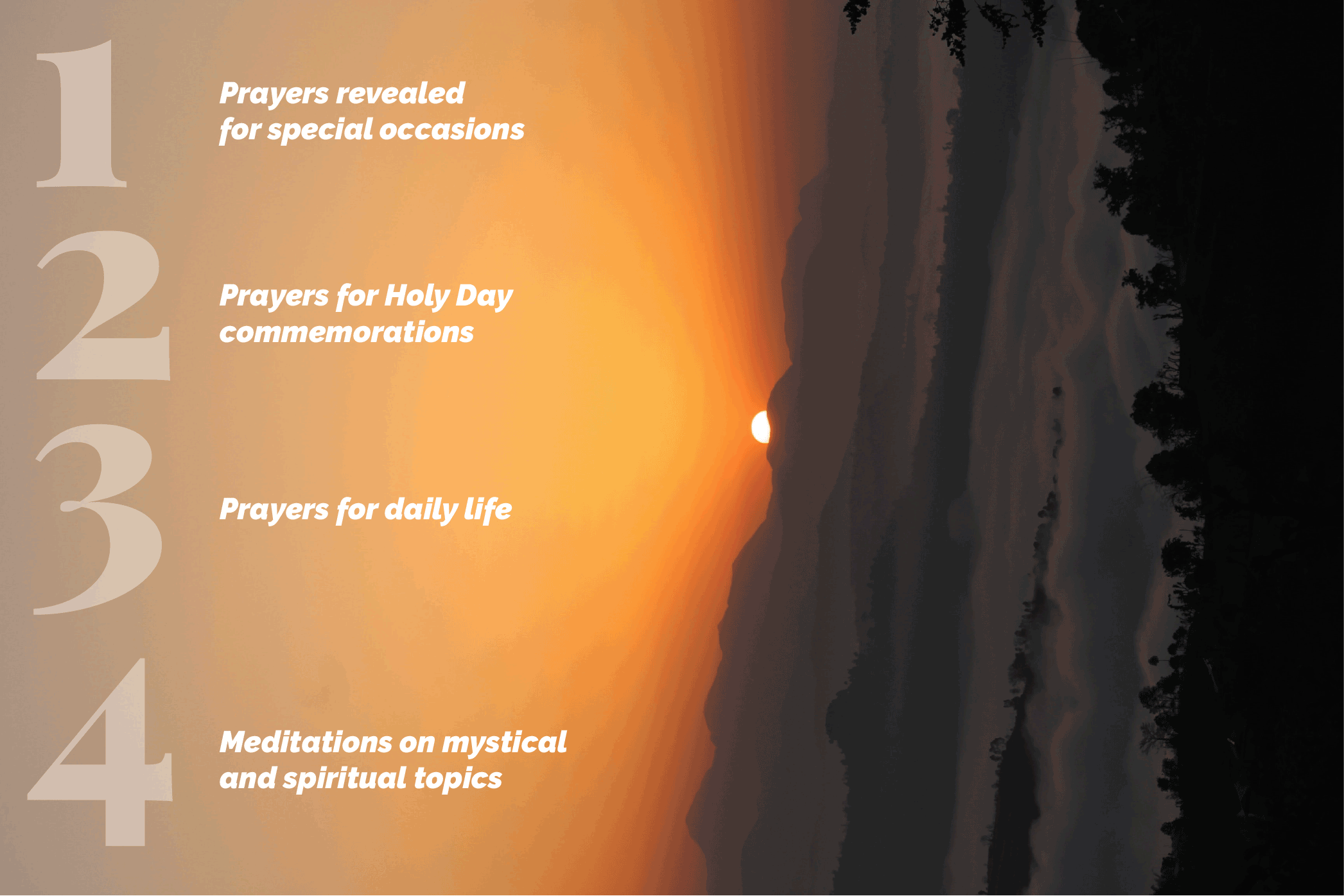
Background image by Ravi Sharma on Unsplash.
Rúḥíyyih Khánum suggested that the works in Prayers and Meditations by Bahá'u'lláh can be divided into four categories:
- Prayers revealed for special occasions—The Obligatory Prayers, the Prayer for the Dead, prayers for Riḍván and Naw-Rúz, for the Fast, and for the Intercalary Days.
- Prayers for Holy Day commemorations—such as the Tablet of Visitation.
- Prayers for daily life—morning and evening prayers, prayers for children, protection, traveling, thanksgiving, detachment, praise of and nearness to God, obedience, unity, steadfastness, assistance, teaching, victory of the Faith, forgiveness, spiritual progress, healing and the departed.
- Meditations on mystical and spiritual topics—God’s bountiful grace, Bahá'u'lláh’s sufferings, Bahá'u'lláh’s evanescence in the face of God’s Will. The longest of these meditations is 22 pages long, and the purpose of this category is to encourage the Bahá'ís to practice personal reflection.
After Shoghi Effendi published Prayers and Meditations by Bahá'u'lláh, stories emerged that people who had previously not had the capacity or perhaps even the desire to believe in God, found Faith in the exquisite pages of Prayers in and Meditations.
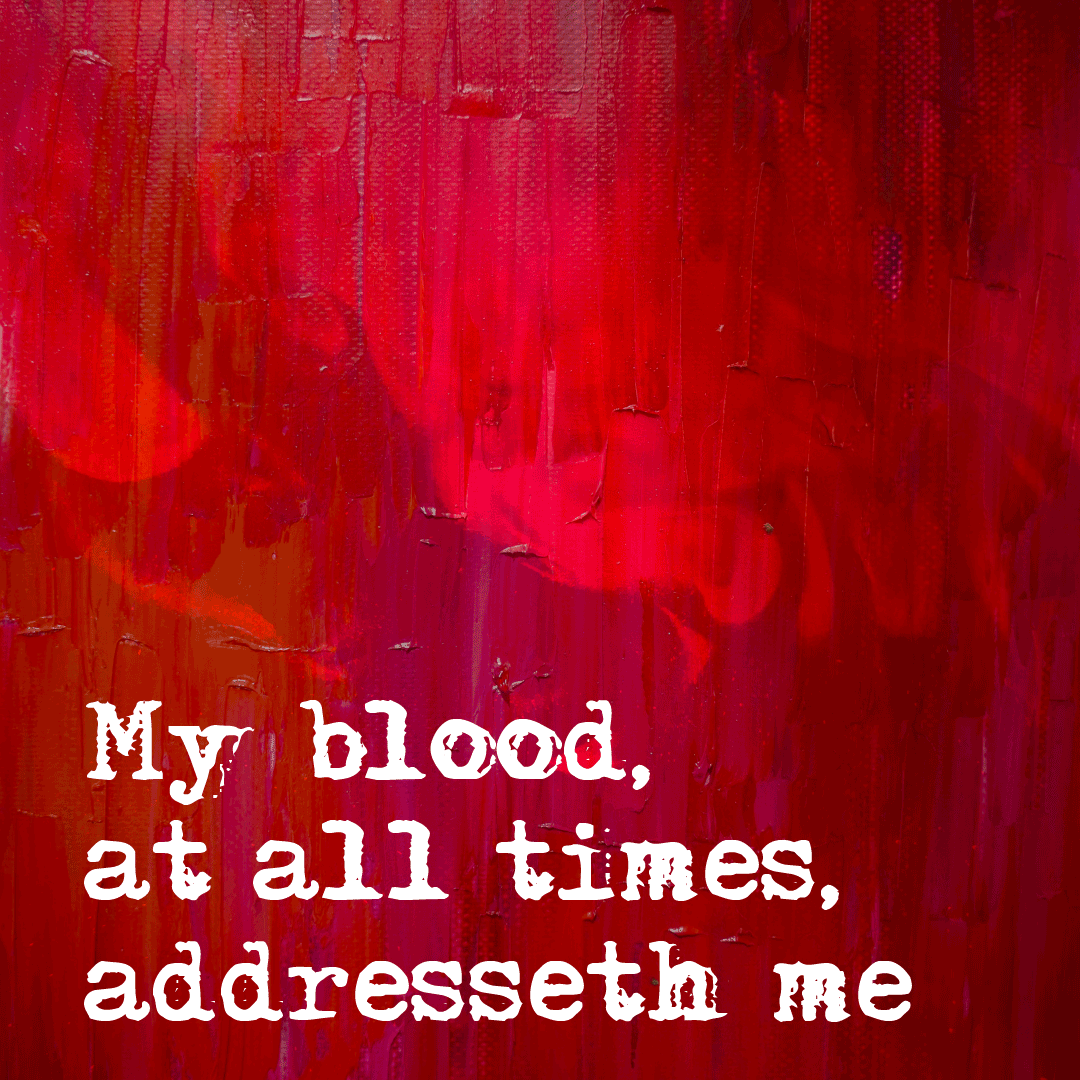
Below is a magnificent excerpt from Prayers and Meditations by Bahá'u'lláh, Selection No. VIII, which features a mystical conversation between Bahá'u'lláh and His blood on the subject of His sufferings:
Glorified be Thy name, O Lord my God! Thou beholdest my dwelling-place, and the prison into which I am cast, and the woes I suffer. By Thy might! No pen can recount them, nor can any tongue describe or number them. I know not, O my God, for what purpose Thou hast abandoned me to Thine adversaries. Thy glory beareth me witness! I sorrow not for the vexations I endure for love of Thee, nor feel perturbed by the calamities that overtake me in Thy path. My grief is rather because Thou delayest to fulfill what Thou hast determined in the Tablets of Thy Revelation, and ordained in the books of Thy decree and judgment.
My blood, at all times, addresseth me saying: “O Thou Who art the Image of the Most Merciful! How long will it be ere Thou riddest me of the captivity of this world, and deliverest me from the bondage of this life? Didst Thou not promise me that Thou shalt dye the earth with me, and sprinkle me on the faces of the inmates of Thy Paradise?” To this I make reply: “Be thou patient and quiet thyself. The things thou desirest can last but an hour. As to me, however, I quaff continually in the path of God the cup of His decree, and wish not that the ruling of His will should cease to operate, or that the woes I suffer for the sake of my Lord, the Most Exalted, the All-Glorious, should be ended. Seek thou my wish and forsake thine own. Thy bondage is not for my protection, but to enable me to sustain successive tribulations, and to prepare me for the trials that must needs repeatedly assail me. Perish that lover who discerneth between the pleasant and the poisonous in his love for his beloved! Be thou satisfied with what God hath destined for thee. He, verily, ruleth over thee as He willeth and pleaseth. No God is there but Him, the Inaccessible, the Most High.”
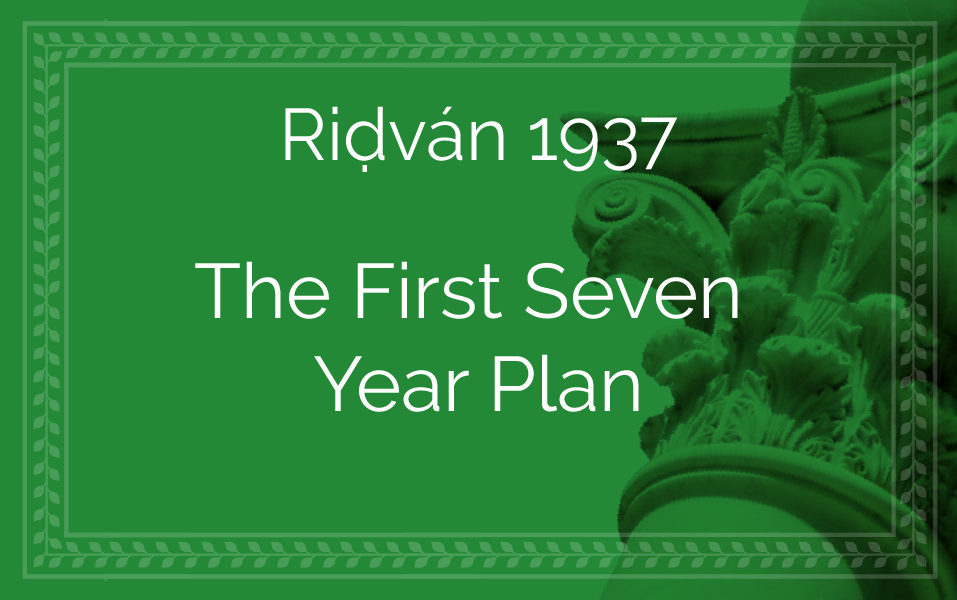
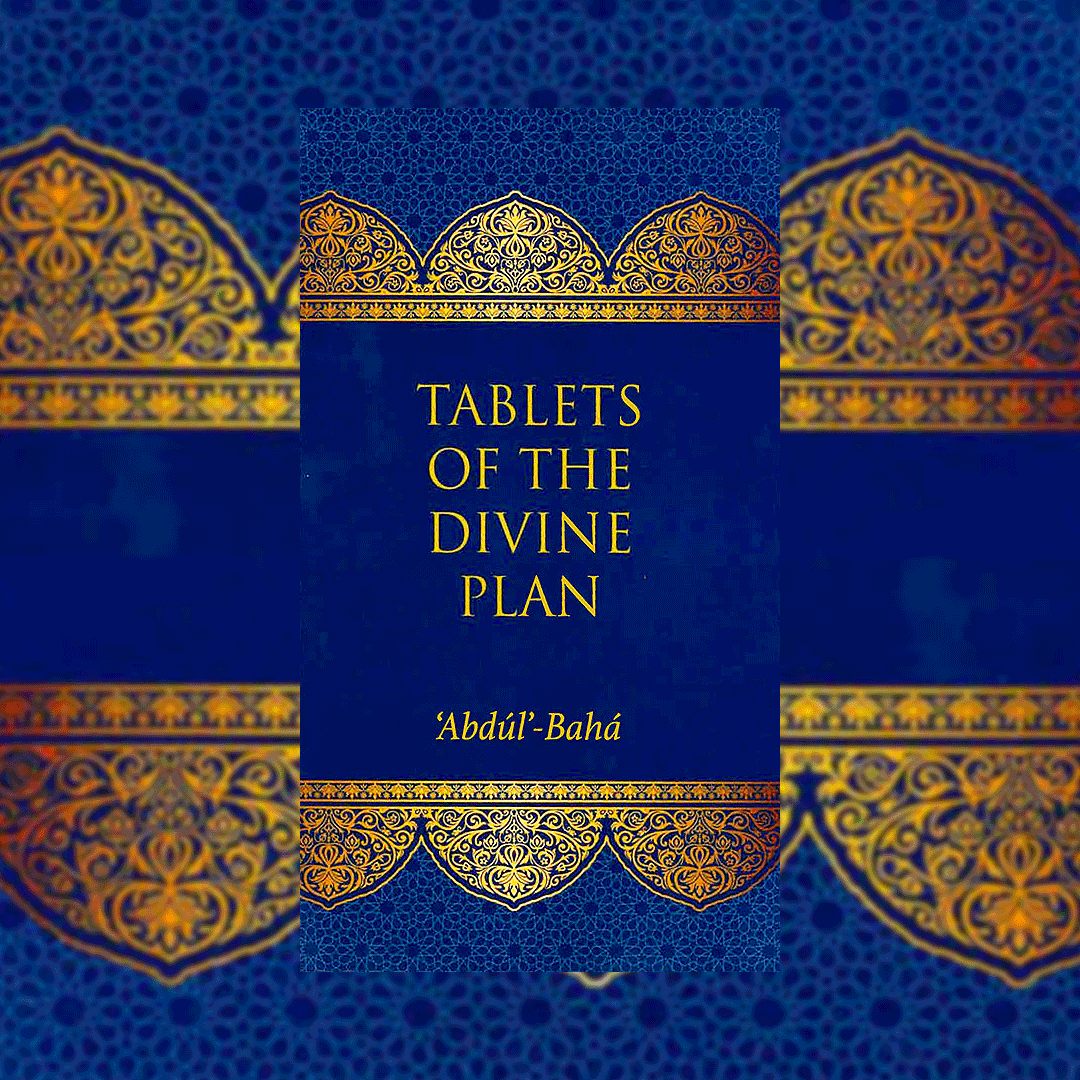
In 1937, Shoghi Effendi inaugurated the first epoch in the implementation of 'Abdu'l-Bahá’s Divine Plan, revealed in 14 Tablets addressed to the Bahá'ís of the United States and Canada in 1916 and 1917.
From the moment 'Abdu'l-Bahá passed away and he became the Guardian of the Faith, the sole aim and object of Shoghi Effendi’s life and work became to set into motion on the surface of the planet 'Abdu'l-Bahá’s grand design as outlined in the Tablets of the Divine Plan.
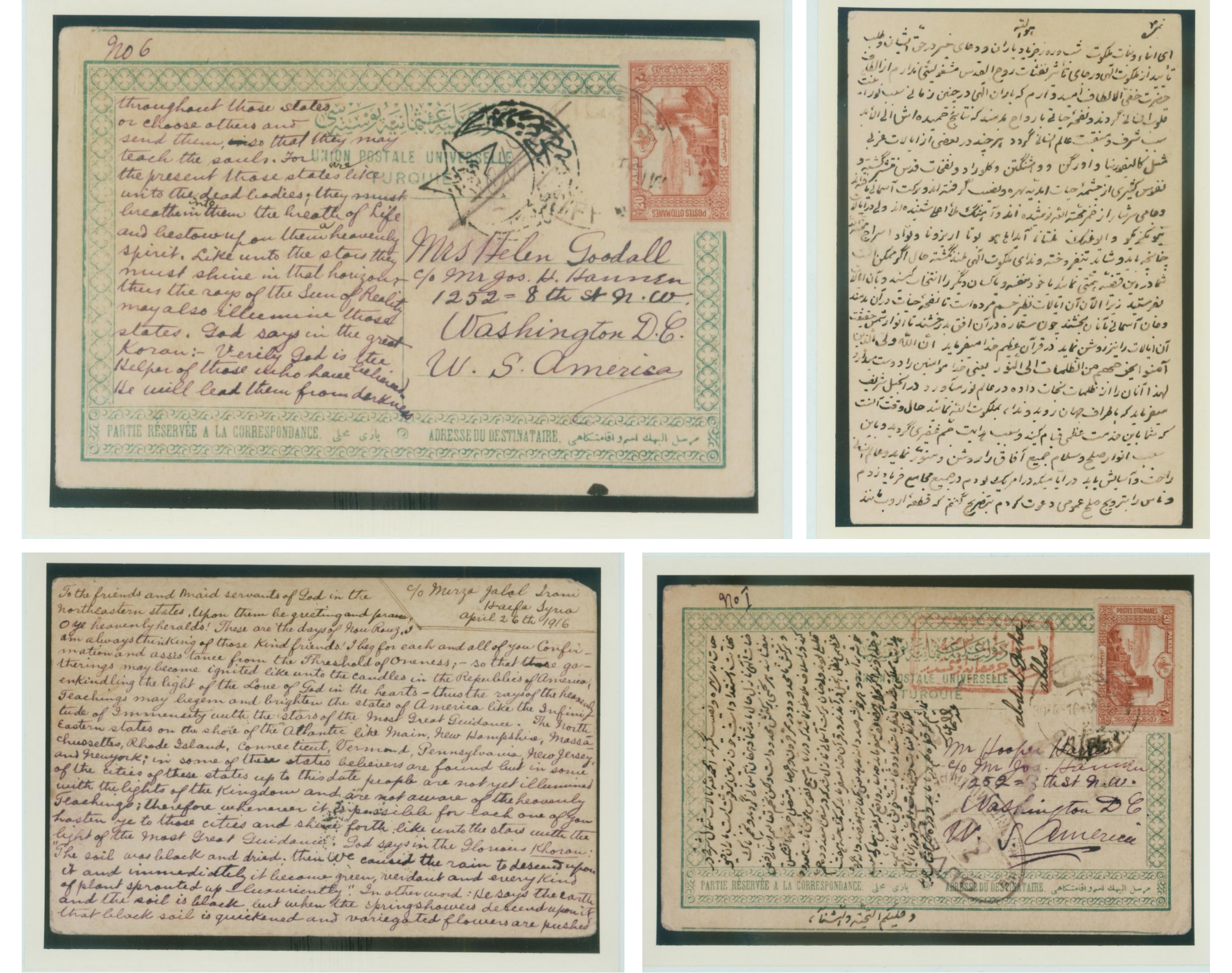
The first Tablets of the Divine Plan were sent to various individuals (Helen Goodall in the West, Joseph Hannen in the East) on series of postcards (sometimes up to eight) that contained the Persian and Arabic originals and the English translations. Top row: English front postcard and Persian back postcard for the first (1916) Tablet to the Western States. Bottom row: English back postcard and Persian front postcard for the first (1916) Tablet to the Northeastern States. National Bahá'í Archives of the United States. Source: Brent Poirier's website: Tablets of the Divine Plan.
The Tablets of the Divine Plan were a watershed moment: they were the very first teaching plan in Bahá'í history. It would be the Guardian who would make all Bahá'ís understand this, calling the Tablets of the Divine Plan the Bahá'í Faith’s charter for the spread of the Bahá'í Faith in every corner of the Planet.
This is the subject of the story that follows, the Guardian’s launch of the First Seven Year Plan, the first of his three Teaching Plans to prosecute 'Abdu'l-Bahá’s Tablets of the Divine Plan.
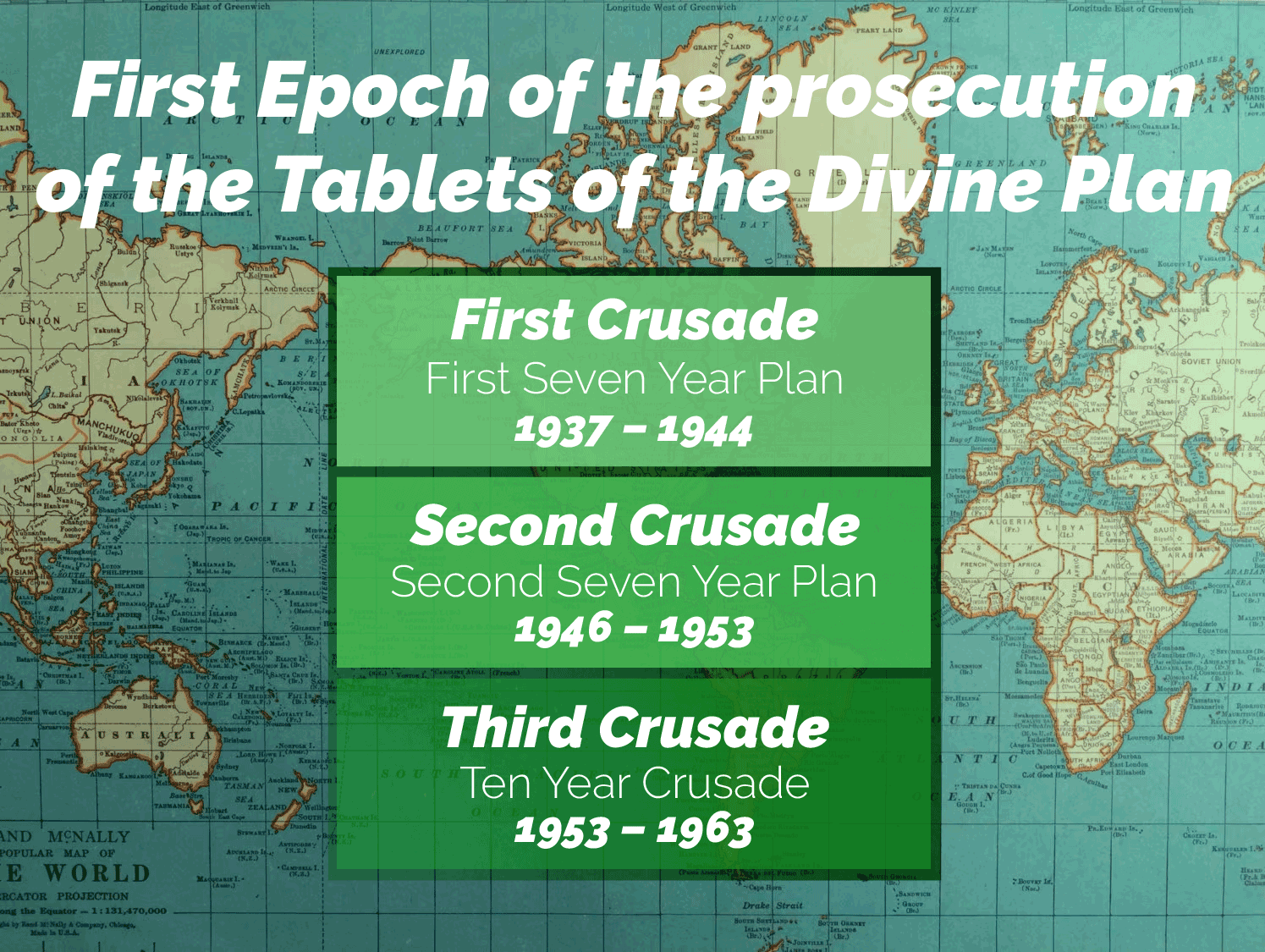
Shoghi Effendi did not just interpret translations, he interpreted Bahá'í and secular history, recasting events in the exact perfect light to allow all Bahá'ís to understand what had happened, what was currently unfolding in front of their eyes, and what would later occur.
The reason Shoghi Effendi had to wait 16 years after the start of his Guardianship before inaugurating the prosecution of 'Abdu'l-Bahá’s plan set forth in the Tablets of the Divine Plan was because the local and national institutions of the Bahá'í world were not yet mature enough.
Before spiritually conquering the planet, the Administrative Order of the Faith had to first be created, then evolved, and finally, it had to be perfected into an administrative machinery that could cohesively implement a Teaching Plan.
Only a solid Administrative Order could prosecute the Divine Plan envisioned by 'Abdu'l-Bahá and implemented by the Guardian in a systematic way and ensure ultimate victory.
It took 16 years until the Guardian was confident that the Bahá'í Administrative Order was mature enough to begin implementing the divine counsels in 'Abdu'l-Bahá’s Tablets of the Divine Plan.
At Riḍván 1937, 16 years after the Ascension of 'Abdu'l-Bahá and the start of his own ministry, the Guardian inaugurated the first of three Teaching Plans aimed at realizing 'Abdu'l-Bahá’s vision in The Dispensation of Bahá'u'lláh into reality. These three plans are the first three phases of the first epoch of the Divine Plan or the three spiritual. Crusades, as Shoghi Effendi called them:
- The First Seven Year Plan from 1937 to 1944;
- A two-year period of respite towards the end of the Second World War between 1944 and 1946;
- The Second Seven Year Plan from 1946 to 1953;
- The Ten Year Crusade beginning in 1953 and ending in 1963, itself divided into four phases and its conclusion coinciding with the Centenary of the Declaration of Bahá'u'lláh in the Garden of Riḍván in Baghdad, the Centennial of the first century of the Bahá'í Dispensation..
The Second Epoch of the Divine Plan would begin in 1963.
The last 20 years of the Guardian’s ministry, from 1937 to 1957 were focused on conquering the planet from north to south and east to west with the light of 4,200 Local Spiritual Assemblies in 251 territories, and 230 languages.
For the last 20 years of his Guardianship, Shoghi Effendi was at the head of a spiritual conquest to plant the banner of Bahá'u'lláh in every corner of the earth.
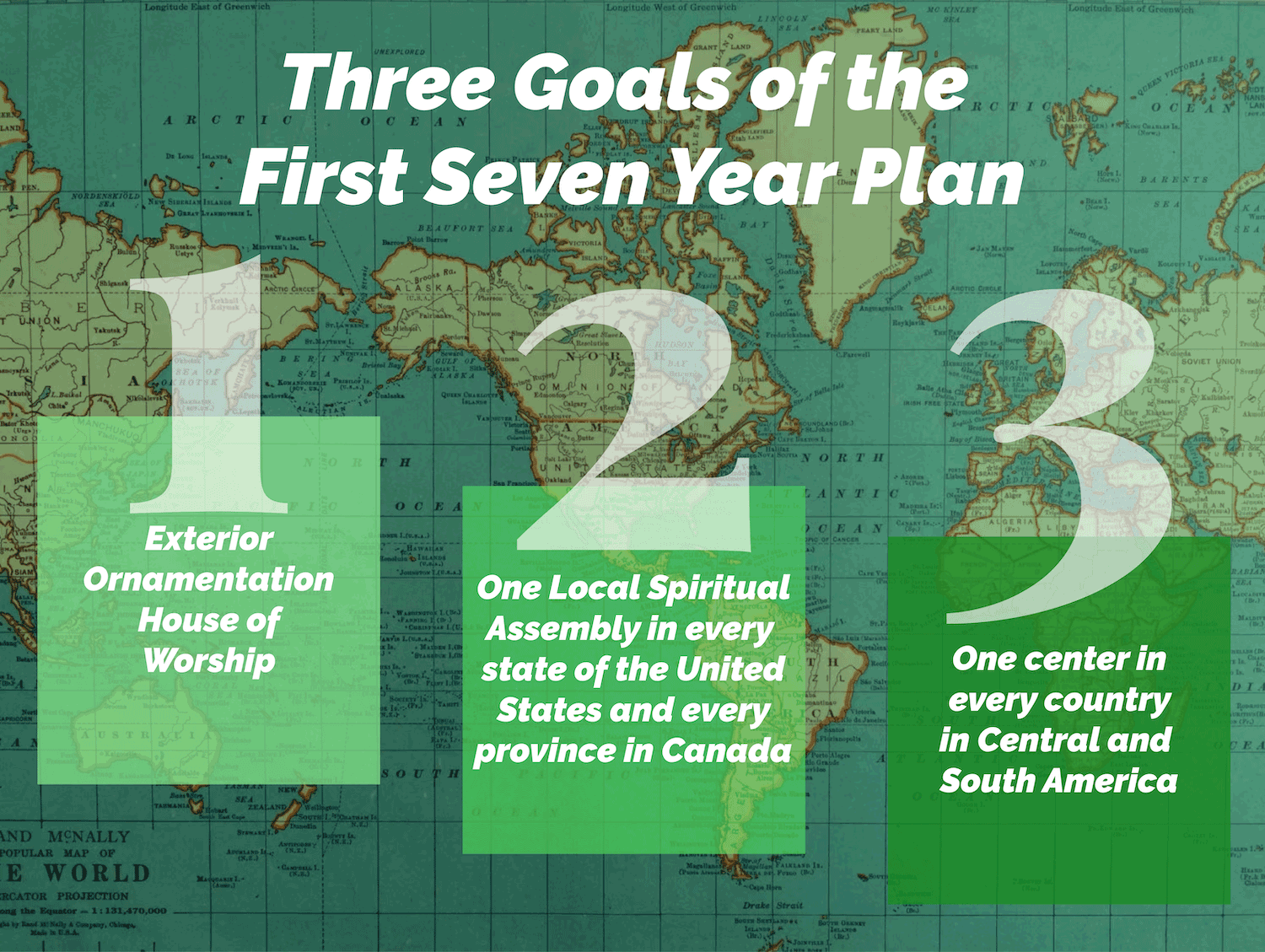 With the first Seven Year Plan beginning in 1937 when he was forty years old, the Guardian stepped out, in Rúḥíyyih Khánum’s words, “as the general leading an army - the North American Bahá'ís - and marched off to the spiritual conquest of the western Hemisphere.”
With the first Seven Year Plan beginning in 1937 when he was forty years old, the Guardian stepped out, in Rúḥíyyih Khánum’s words, “as the general leading an army - the North American Bahá'ís - and marched off to the spiritual conquest of the western Hemisphere.”
In the same analogy of the First Seven Year Plan, with the Guardian as its general, its chief of staff was the National Spiritual Assembly of the United States, and its soldiers the American Bahá'ís.
Shoghi Effendi never forgot the rank and file of believers, and in his messages to them, he was their brother, speaking so intimately and knowledgeably to them, it was as if he lived amongst them.
For four years prior to the launch of the Second Year Plan, Shoghi Effendi sent rumblings of a new era about to dawn, a new stage, and the year prior to his earth-shattering announcement, he initiated the next year’s Plan:
Would to God every state within American Republic every Republic American continent might ere termination this glorious century embrace light Faith Bahá'u'lláh establish structural basis His World Order.
The first Seven Year Plan had three major goals:
- To complete the exterior ornamentation of the first House of Worship in the western World in Wilmette, Illinois;
- To establish one local Spiritual Assembly in every state of the United States and every province in Canada;
- To create one center in every country in Central and South America.
Two years after the Plan was launched, World War II erupted, and two years after that, the entire world was embroiled in the conflict, including the United States.
Shoghi Effendi kept in close touch with Bahá'ís involved in achieving the goals of the first Seven Year Plan.
What they achieved together was nothing short of miraculous. The end of this story takes place in 1944, with the achievements of the first Seven Year Plan.
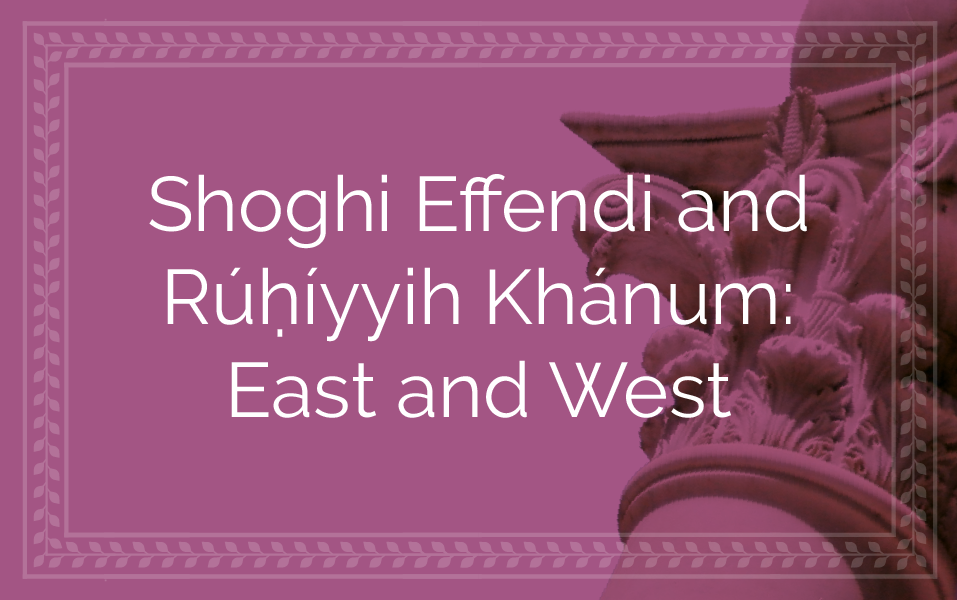
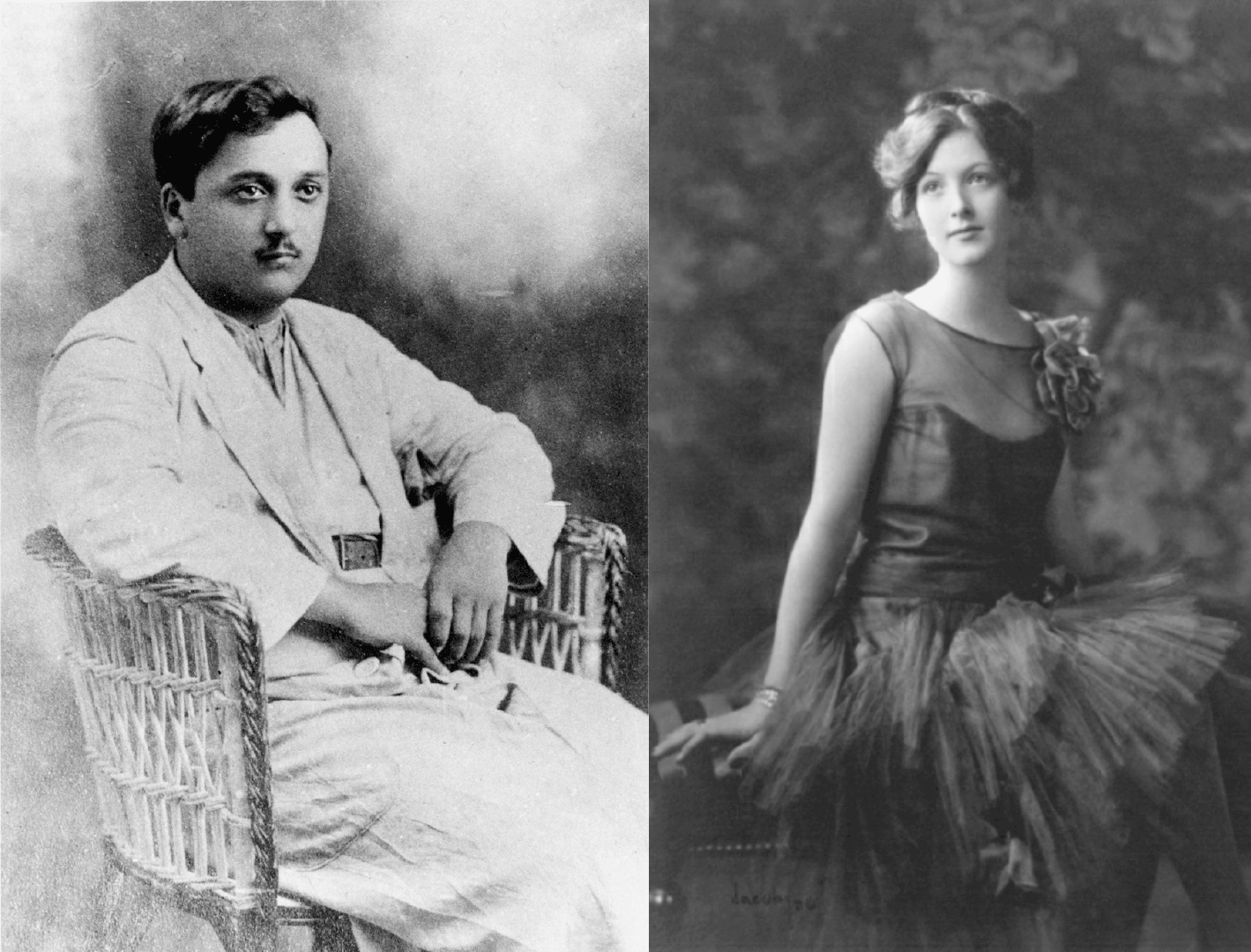
East and West. Two photographs—previously attributed in this chronology—of Shoghi Effendi—aged 22—and Mary Maxwell at the age of 16.
There are several very important points to mention regarding the Shoghi Effendi’s marriage to Mary Maxwell—now Rúḥíyyih Khánum.
First is that it was the marriage between the Guardian of the Faith and the daughter of two stalwart prominent, faithful and dedicated Bahá'ís. She herself would be elevated to the rank of Hand of the Cause, but she was also the daughter of a future Hand of the Cause—William Sutherland Maxwell—and a future Martyr—May Maxwell.
There is also a powerful connection with 'Abdu'l-Bahá in this marriage. Shoghi Effendi was the grandson of 'Abdu'l-Bahá. May Bolles Maxwell had been one of the very first handful of western Bahá'ís to ever meet the Master in 1898. It was 'Abdu'l-Bahá who had granted her wish to have a child during her 1909 pilgrimage, after she had shown Him her detachment and desire only for His good-pleasure. Mary Maxwell was born in 1910. Two years later, the Maxwell home on Pine Avenue would be the only home 'Abdu'l-Bahá would visit in Montreal. He loved and cuddled little Mary, who snuck onto the Master to sleep with Him on his chair, and she even slapped 'Abdu'l-Bahá and sent His turban flying when he wanted to plant a kiss on her cheek. To her traumatized parents who wanted to punish her, He said: “Leave her alone, she is the essence of sweetness.”
But the most important point that must be forever associated with the Guardian’s marriage to Rúḥíyyih Khánum is that it had united, at the Center of the Cause, East and West.
The union of the people of East and West was deeply cherished by Bahá'u'lláh who revealed it in one of his most celebrated verses in the Lawḥ-i-Maqṣúd (Tablet of Maqṣúd):
It is not for him to pride himself who loveth his own country, but rather for him who loveth the whole world. The earth is but one country, and mankind its citizens.
'Abdu'l-Bahá spoke openly and frequently on the union between East and West, even giving a talk on the subject in Paris, where He stated:
The East and the West must unite to give to each other what is lacking. This union will bring about a true civilization, where the spiritual is expressed and carried out in the material.
The Guardian, as with the most important statements and actions of 'Abdu'l-Bahá during His ministry, brought about the realization of his beloved Grandfather’s dearest wishes.
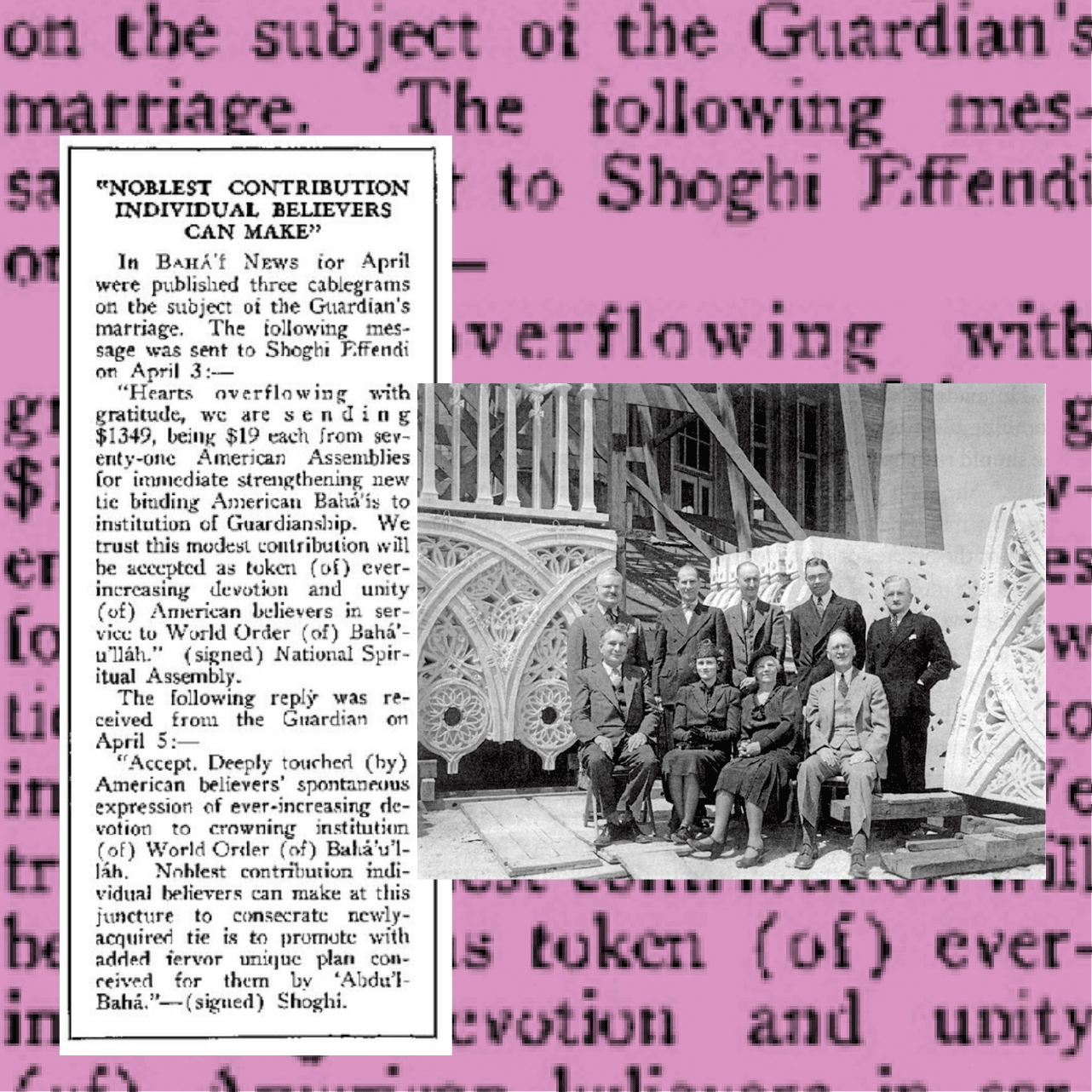
Publication of the contribution of $19 per Local Spiritual Assembly and the Guardian’s response in Bahá'í News Number 108 (June 1937). Photograph of the National Spiritual Assembly of the United States and Canada from 1938 (no photograph of the National Spiritual Assembly from 1937 was found). Source: Bahaimedia.
The Guardian’s emphasis on the honor bestowed on North America in his marriage to Rúḥíyyih Khánum and the union of East and West it represented so enthused the Bahá'ís in America that their National Spiritual Assembly informed the Guardian on 3 April 1937 that they were sending $19 from each of their 71 Local Spiritual Assemblies:
Hearts overflowing with gratitude we are sending $1349 being $19 each from seventy-one American Assemblies for immediate strengthening new tie binding American Bahá’ís to institution Guardianship. Trust this modest contribution will be accepted as token ever-increasing devotion and unity American believers in service to World Order Bahá’u’lláh.
This gesture was incredibly beautiful—and incredibly generous. $1,349 in 1937, calculated with inflation is $28,822.79 today, and $19 for each Local Spiritual Assembly today is worth $ 405.95.
Two days later, on 5 April 1937, the Guardian responded to this wonderfully touching gift, with an equally deeply sensitive message:
Accept deeply touched American believers spontaneous expression of ever-increasing devotion to crowning institution World Order Bahá’u’lláh. Noblest contribution individual believers can make at this juncture to consecrate newly-acquired tie is to promote with added fervor unique plan conceived for them by ‘Abdu’l-Bahá.
Shortly after his marriage, the National Spiritual Assembly of the United States and Canada wrote to the Guardian asking about the policy regarding making a public announcement of his nuptials. The Guardian responded:
Approve public announcement emphasize significance institution Guardianship union East West and linking destinies Persia America allude honour conferred British peoples.
By “honor conferred British peoples,” the Guardian was specifically referring to Rúḥíyyih Khánum’s father, William Sutherland Maxwell’s Scottish ancestry.
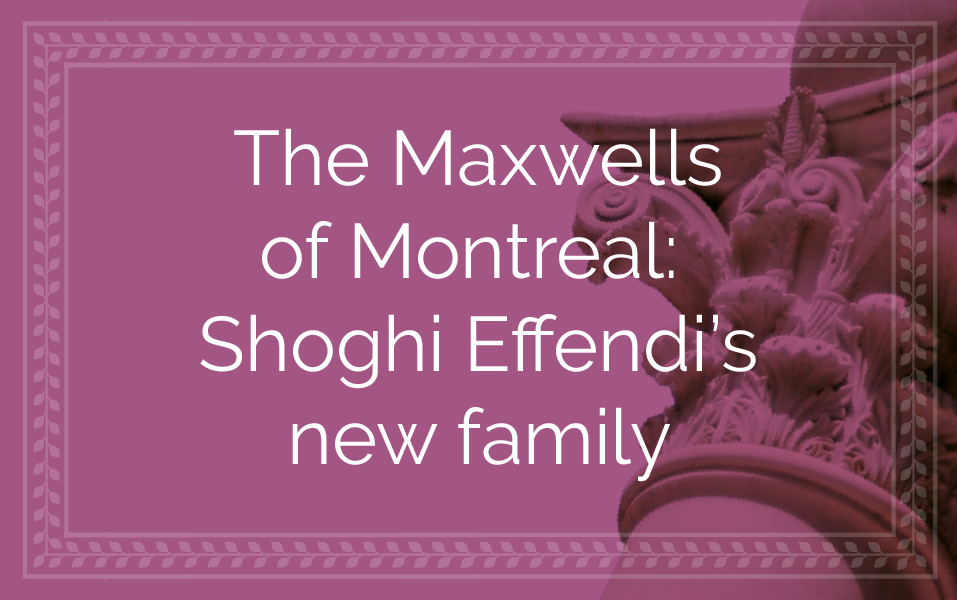
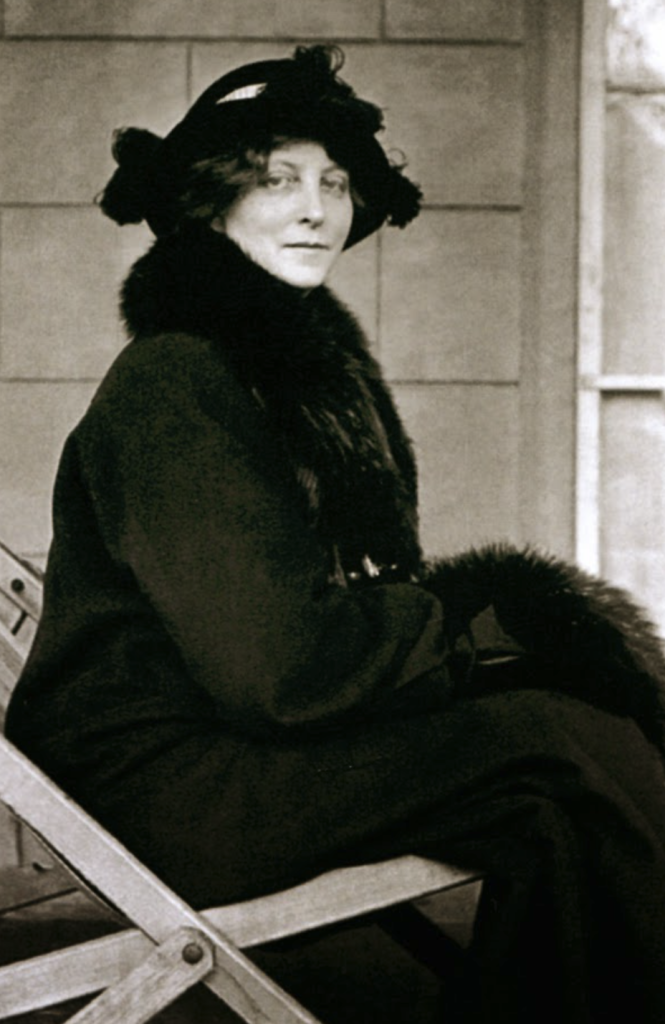
A portrait of May Maxwell, seated. Source: We are Bahá’ís.
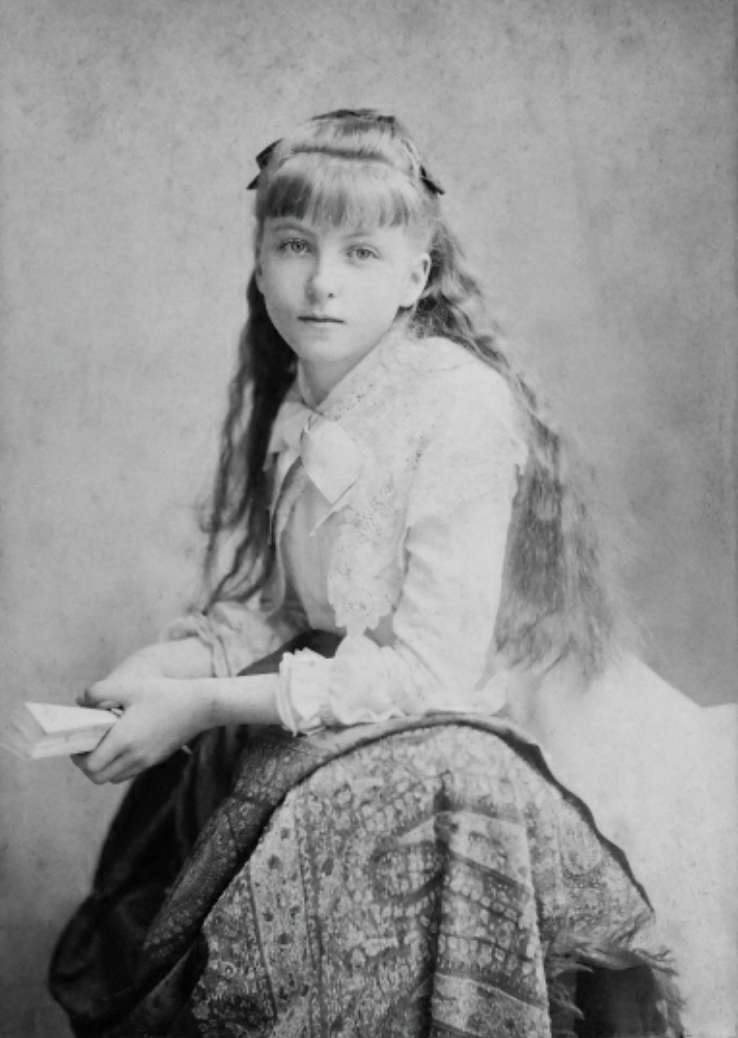
May Ellis Bolles at the age of 14. Source: The Maxwells of Montreal: Early Years (1870 – 1922), Violette Nakhjavani, Kindle Edition, Location 974.
In marrying Rúḥíyyih Khánum, Shoghi Effendi had gained a faithful Bahá'í family, one that would comfort him for decades while his own flesh and blood broke the Covenant again and again.
First, who was May Bolles Maxwell, and why would Shoghi Effendi had told her that she was one of the reasons he had consented to marrying her daughter, Rúḥíyyih Khánum?
May Maxwell was American. She was born May Ellis Bolles in Englewood, New Jersey, on 14 January 1870, the daughter of John B. Bolles and Mary Martin Bolles. Even as a young child she was possessed of those same rare, lifelong qualities that set her so far above other people: she was deeply affectionate and had the ability to forge enduring bonds of friendship, she was eager for the truth and would follow it wherever it lead, she was devastatingly frank—a trait her daughter most definitely inherited—she had an oceanic empathy, she was utterly detached, her feelings would never get hurt, and she was immensely generous, extremely original and profoundly spiritual. One of her favorite sayings was:
By the time you finish talking about it you could have it done!
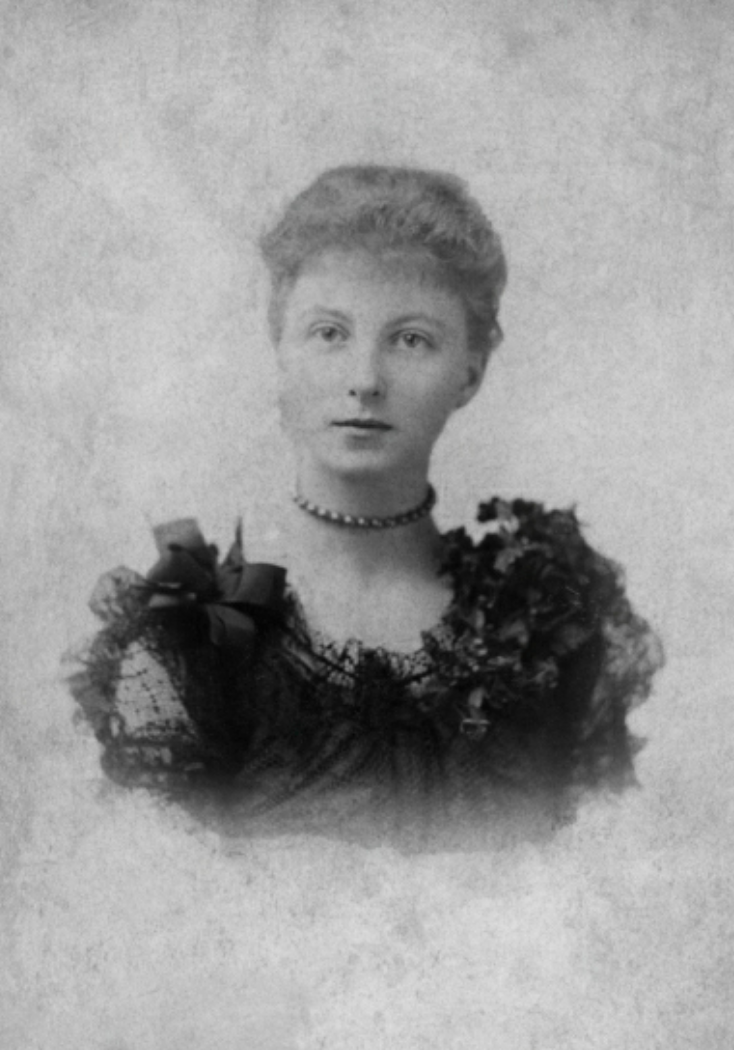
May Ellis Bolles (Photographer: Hargrave & Gubelman, West 23rd Street, New York). Source: The Maxwells of Montreal: Early Years (1870 – 1922), Violette Nakhjavani, Kindle Edition, Location 1201.
An important aspect to remember when marvelling at the life of May Maxwell, is that, from the age of 21 in 1891 until the day she died on 1 March 1940, at the age of 70, May Maxwell, in her daughter Rúḥíyyih Khánum’s own words, was, for “the large proportion of her life an invalid.” The great tragedy of May Maxwell’s life was her health.
Rúḥíyyih Khánum was never able to walk with her mother more than 100 meters.
May Maxwell’s life—in every single other respect—was blessed and happy, but she was born with a mysterious illness that was never diagnosed. 'Abdu'l-Bahá would later confirm this to her.
May Bolles was a burst of pure energy until she became ill for the first time in her life, in 1891, at the age of 21. She later told her daughter that before that illness, she could swim in the morning, play three sets of tennis in the afternoon and dance until midnight.
If she was inside the house, May Maxwell could walk around between rooms, but outside, her back and legs would become so exhausted that she could never walk more than a short distance.
Her illness was never definitively diagnosed, and caused her lifelong pain. Although she could not go on long walks with friends and was confided to sitting on a bench while they strolled around, this did allow her to meet hundreds of people throughout her life!
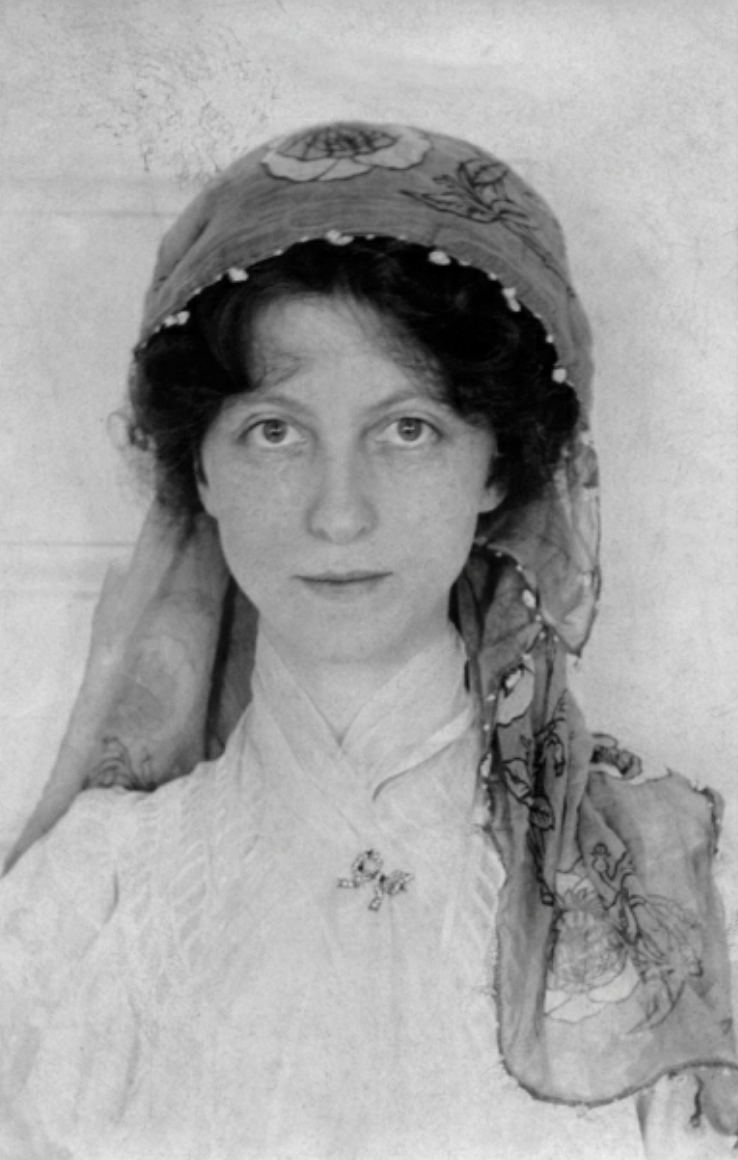
May Bolles after her first pilgrimage, circa 1899. Source: The Maxwells of Montreal: Early Years (1870 – 1922), Violette Nakhjavani, Kindle Edition, Location 1867.
In 1898, May Bolles was living in Paris with her mother and brother, who was studying at the Beaux-Arts. She became a Bahá'í in 1898 when she met Lua Getsinger, and joined the group of pilgrims, organized by Phoebe Hearst who were traveling through Paris on their way to 'Akká to meet 'Abdu'l-Bahá, the first westerners to ever go on pilgrimage. May Bolles was among a very small handful of westerners to meet Shoghi Effendi as a baby.
May Bolles first met 'Abdu'l-Bahá on 17 February 1899 and with her great talent for writing, she left behind an unforgettable account of this life-altering meeting:
Of that first meeting I can remember neither joy nor pain nor anything that I can name. I had been carried suddenly to too great a height; my soul had come in contact with the Divine Spirit; and this force so pure, so holy, so mighty had overwhelmed me…And when He arose and suddenly left us we came back with a start to life: but never again, oh! never again, thank God, to the same life on this earth!
'Abdu'l-Bahá would say of May Bolles:
Her company uplifts and develops the soul.
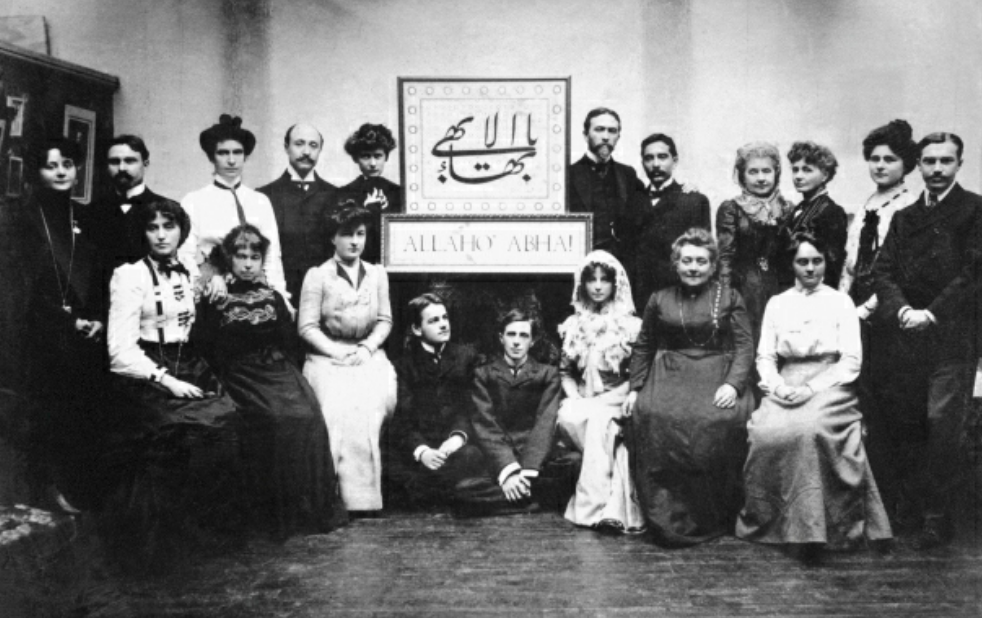
Early Bahá'í group of Paris, 1901 or 1902: standing, left to right, Miss Elsa Bignardi, Mr Herbert W. Hopper, Miss Florence Robinson, Mr Hippolyte Dreyfus, Miss Berthalin Lexow , Mr Charles Mason Remey, unknown, Mrs Marie-Louise MacKay, Mrs Margarite Bignardi, Miss Stephanie Hanvais, Mr Sydney Sprague; seated, left to right, Miss Edith MacKay, Miss Holzbecker, Miss Edith Sanderson, Mr Sigurd Russell, Mr Thomas Breakwell, Miss May Ellis Bolles, Mrs Hanet, Miss Marie Watson. Source: The Maxwells of Montreal: Early Years (1870 – 1922), Violette Nakhjavani, Kindle Edition, Location 3196.
She returned to Paris and between 1899 and 1902 alone, she was responsible for bringing into the Faith the following people:
Edith MacKaye, Charles Mason Remey, Herbert Hopper, Marie Squires (Hopper), Helen Ellis Cole, Laura Barney, Mme. Jackson, Agnes Alexander, Thomas Breakwell, Edith Sanderson, Hippolyte Dreyfus—the first French Bahá’í—Emogene Hoagg, Mrs. Conner, Sigurd Russell, Juliet Thompson, Lillian James.
May and William Sutherland Maxwell were married in London on 8 May 1902, and May returned to North America, the place of her birth, at the age of 32. It was a marriage of mutual love and devotion. May continued teaching intensely in Montreal, and William Sutherland Maxwell became the first Canadian Bahá'í in 1903.
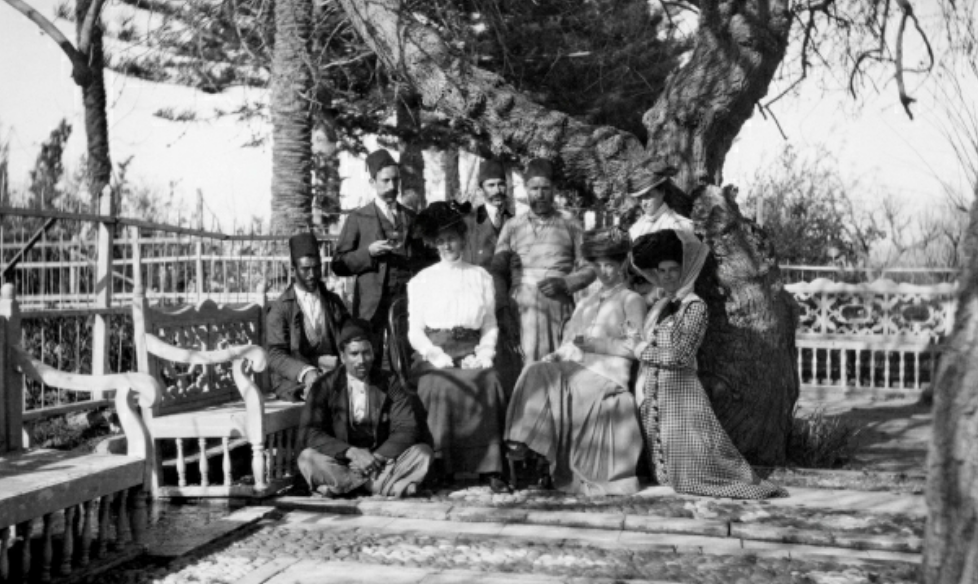
May Maxwell is seated in the middle in the front row in the Garden of Riḍván. To her left is Louise Bosch. Photograph by William Sutherland Maxwell during their pilgrimage to the presence of 'Abdu'l-Bahá in 1909. Source: The Maxwells of Montreal: Early Years (1870 – 1922), Violette Nakhjavani, Kindle Edition, Location 5382.
Ten years after the first time she met 'Abdu'l-Bahá in person, in 1909, she and William Sutherland Maxwell travelled to the Holy Land for a six-day pilgrimage.
It was during this pilgrimage that 'Abdu'l-Bahá told her that, at 39, she was not too old to have a child and that he would pray for her. Mary Maxwell was born a year and a half later, on 8 August 1910.
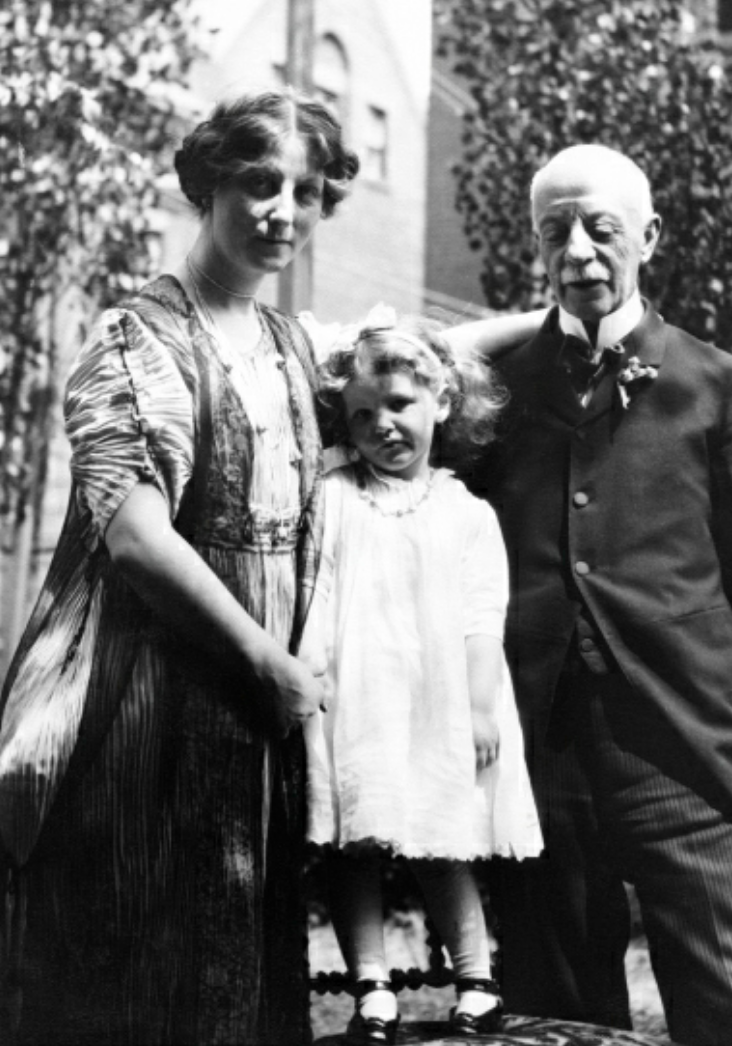
May Maxwell, and a very young Mary Maxwell with John Harris Bolles, May’s father and Mary’s grandfather. Mary is wearing a string of beads given to her by 'Abdu'l-Bahá, Who visited her home in August-September 1912. Source: The Maxwells of Montreal: Early Years (1870 – 1922), Violette Nakhjavani, Kindle Edition, Location 6543.
When Mary Maxwell was 2 years old, 'Abdu'l-Bahá came to visit the Maxwells in Montreal and formed a bond with the spirited, delightful little girl. The Maxwell’s home was the only home visited by 'Abdu'l-Bahá, who said, when He first walked in:
This is my home, all that is in it is mine. You are mine – your husband and child. This is my home.
The Maxwell home in Montreal is now the only Shrine in North America.
On 19 August 1916, May Maxwell received, directly from 'Abdu'l-Bahá, the two Tablets of the Divine Plan He had revealed for the Dominion of Canada. These Tablets became her personal charter to travel. Mary Maxwell, then 9 years old, was one of girls chosen to unveil the Tablets of the Divine Plan at the National Convention on 26 – 30 April 1919 in New York.
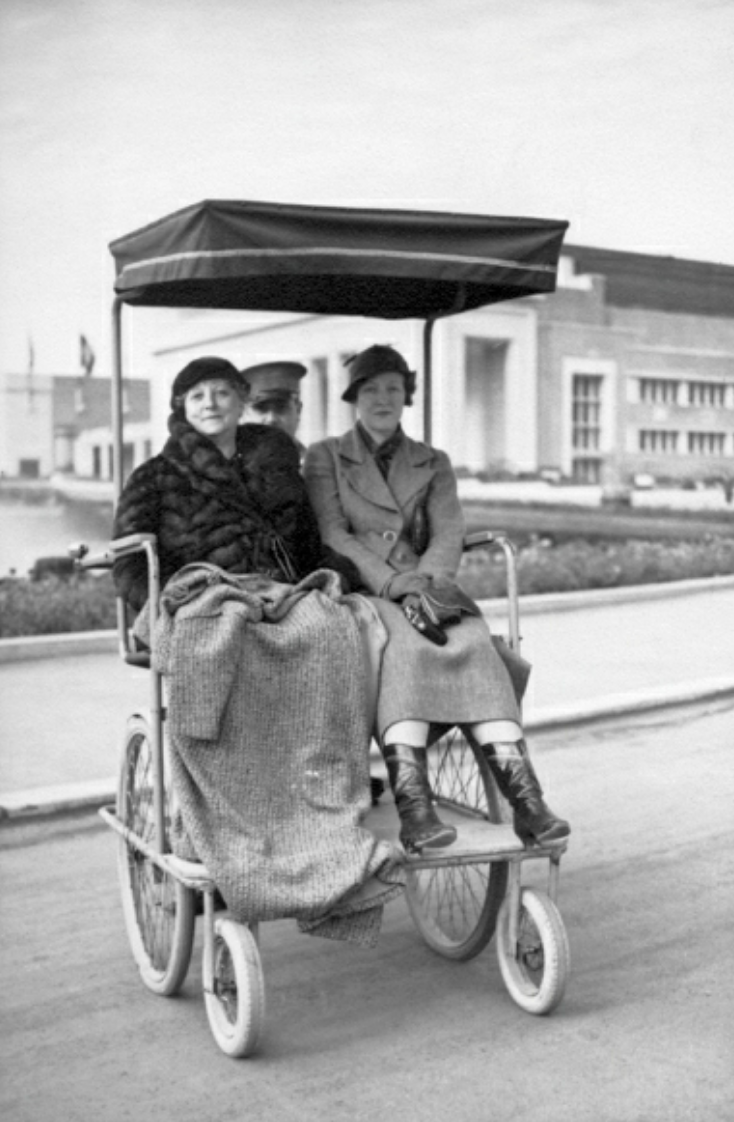
May and Mary Maxwell at the Brussels Exposition, Belgium, 1935. Photo taken by W. S. Maxwell. Source: Source: The Maxwells of Montreal: Middle Years 1923-1937 Late Years 1937-1952. Violette Nakhjavani, Kindle Edition, Location 42787.
On 29 November 1921, May Maxwell learned of the Ascension of 'Abdu'l-Bahá and it nearly killed her. It would be the most serious illness of her life. She knew the only thing that could save her life was to meet the Guardian of the Cause, His Own grandson, Shoghi Effendi, and on 7 March 1923, she and Mary sailed for Haifa for the first of their two pilgrimages. Rúḥíyyih Khánum stated, in no uncertain terms, the Guardian had saved May Maxwell’s life:
Shoghi Effendi…literally resurrected a woman who was so ill she could still not walk a step and could move about only in a wheel chair.
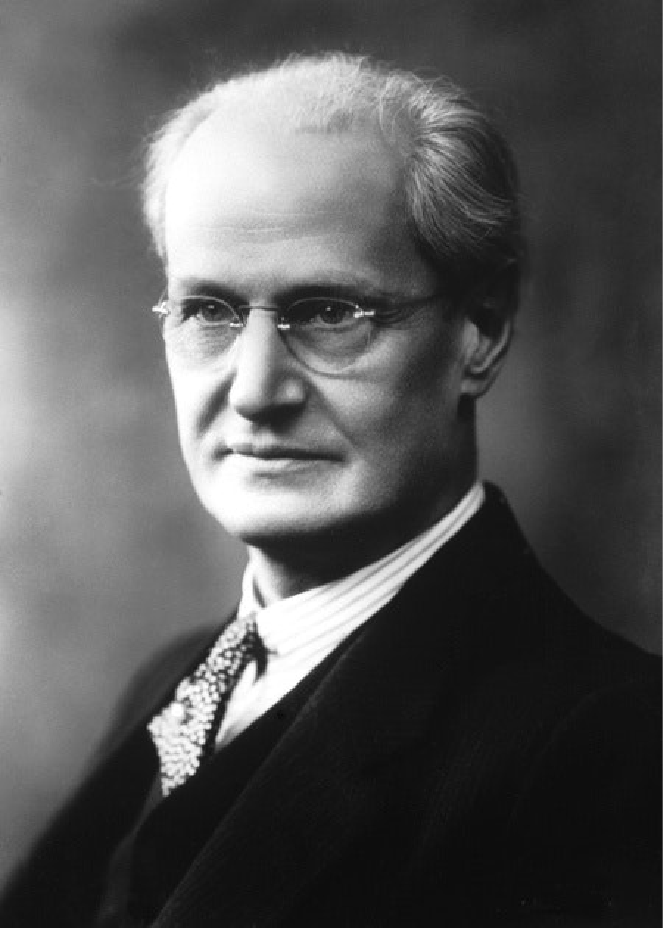
William Sutherland Maxwell. Source: Canadian Bahá’í News.
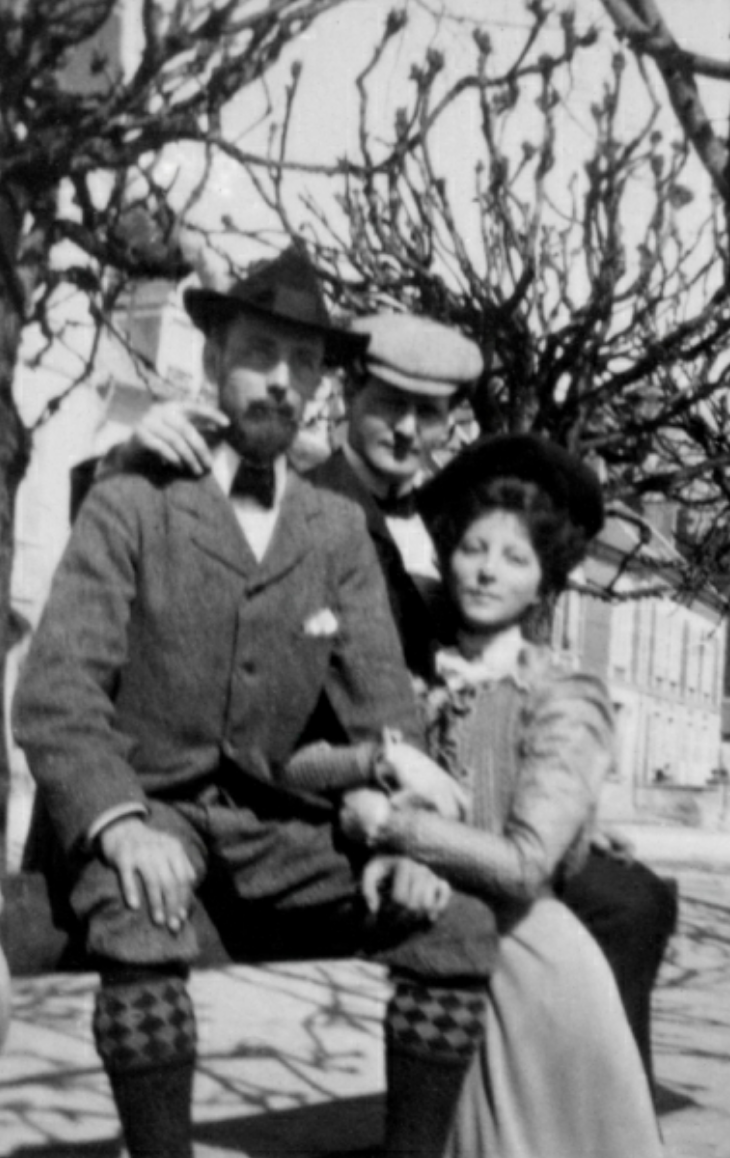
Randolph Bolles—May’s brother—William Sutherland Maxwell and May Ellis Bolles in 1900, in Pierrefonds, France. Source: The Maxwells of Montreal: Early Years (1870 – 1922), Violette Nakhjavani, Kindle Edition, Location 2493.
Who was William Sutherland Maxwell? Who was this gentle, tall, Scottish Canadian man who was the husband of the extraordinary May Maxwell, the father of Shoghi Effendi’s wife, Rúḥíyyih Khánum, and the Guardian’s “immortal architect”?
William Sutherland Maxwell was born on 14 November 14 1874 in in Montreal, Quebec, Canada to parents Edward John Maxwell and Johan MacBean. He was four years younger than his future wife, May Bolles.
On both sides of his family, William Sutherland Maxwell was originally Scottish.
Like his wife, William Sutherland Maxwell was an extraordinary human being. His daughter, Rúḥíyyih Khánum, once described him as:
…one of those souls whose nature is all goodness. This is what led the Guardian of the Bahá’í Faith to attest to his “saintly life” in his obituary cable.
William Sutherland Maxwell was upright, truthful, and never approached anyone except with courtesy, friendliness, and graciousness. Despite a very trusting nature, William Sutherland Maxwell had very sound judgement.
From a young age, William Sutherland Maxwell was interested in building, but he refused to be an engineer and moved to Boston at the age of 17, and combining his extraordinary natural ability in drawing and design, he began working for an architectural office, designing ornamental details for building. It was in Boston he discovered the Beaux-Arts architectural style, and he followed his passion to its birthplace, Paris, where he met May Bolles.
After they married in London in 1902, they returned to Montreal. May always called her husband “Sutherland,” a name no one else ever used.
William Sutherland Maxwell and his brother Edward founded an architectural firm, and soon, Edward and W. S. Maxwell became known all over Canada.
In 1907 – 1908, William Sutherland Maxwell built the Maxwell home on Pine Street in Montreal, a home that is today a Shrine.
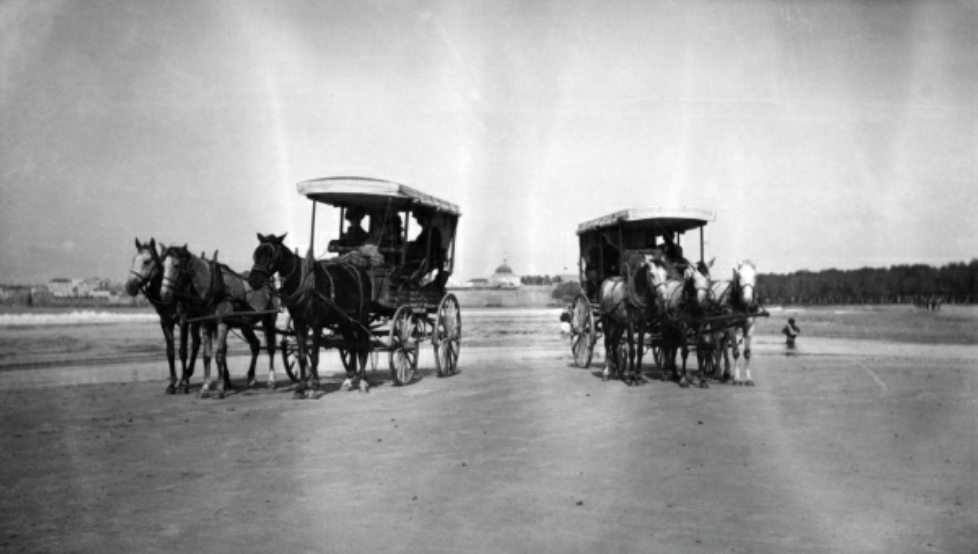
Travelling to 'Akká along the shore of the Mediterranean Sea in two horse-drawn-carriages. Photographed but not visible are May Maxwell and Louise Bosch during their pilgrimage in 1909. Also present but not pictured was William Sutherland Maxwell. Source: The Maxwells of Montreal: Early Years (1870 – 1922), Violette Nakhjavani, Kindle Edition, Location 5382.
When he accompanied his wife May on pilgrimage in 1909, William Sutherland Maxwell told 'Abdu'l-Bahá at the dinner table one day:
The Christians worship God through Christ; my wife worships God through You; but I worship Him direct.
‘Abdu’l-Bahá smiled and said:
Where is He?
William Sutherland Maxwell replied:
Why, God is everywhere.
'Abdu'l-Bahá said:
Everywhere is nowhere.
Then, the master
'Abdu'l-Bahá explained to William Sutherland Maxwell the role of Manifestations of God, and with this explanation, He planted the seed of faith in William Sutherland Maxwell’s heart, a seed that would bloom into a mighty tree: he left the Holy Land a Bahá'í.
In 1912, when 'Abdu'l-Bahá arrived in Montreal, it was William Sutherland Maxwell who picked Him up from the train station. 'Abdu'l-Bahá told him He had been attracted to Montreal by the devotion of his wife, May Maxwell. During His stay, 'Abdu'l-Bahá told May Maxwell that her husband was “a very good man.”
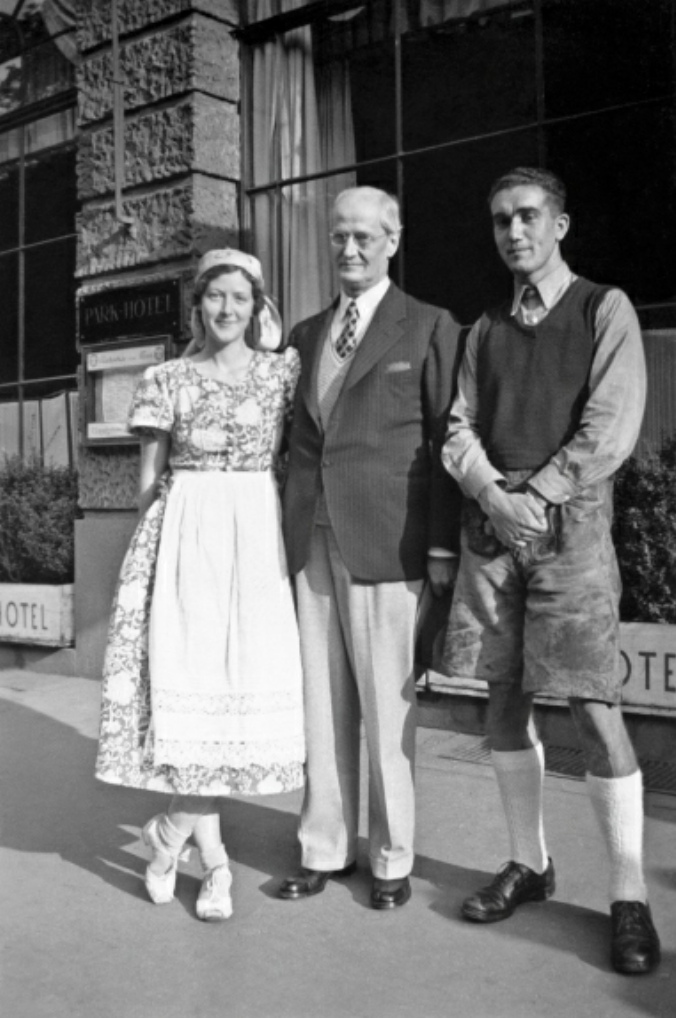
Mary and William Sutherland Maxwell with Alfons Grassle in Munich, Germany, 1935. Source: The Maxwells of Montreal: Middle Years 1923-1937 Late Years 1937-1952. Violette Nakhjavani, Kindle Edition, Location 4592.
William Sutherland Maxwell served on the Montreal Local Spiritual Assembly for decades, mostly as Chairman of the Assembly.
William Sutherland Maxwell was an artist.
His innate goodness and his art were inseparable sides of who he truly was.
In one of her letters to him, May Maxwell said to her husband:
You have the charm of originality.
William Sutherland Maxwell was a living, breathing art encyclopedia, which combined with his boundless creativity to bring original new designs into the world. His masterpiece were his two expansions on a famous Montreal hotel, the Château Frontenac, which he completed in 1908–09, and 1920–24.
He designed the lines of the 20-story hotel, and every detail of the interior: wrought-iron railings, furniture, grills, lamps, ceilings, and elevator interiors. William Sutherland Maxwell was so dedicated to his work that he would take the chisel from the stonemason, the gouge from the wood-carver, and, as he said it himself, he would “sweeten the lines.” The workers working under him idolized him.
Eventually, William Sutherland Maxwell was made a Fellow of the Royal Institute of British Architects, a Fellow and past president of the Royal Architectural Institute of Canada, an Academician of the Royal Canadian Academy and its vice-president, a member and past president of the Province of Quebec Association of Architects; a founding member of both the Pen and Pencil Club and the Arts Club in Montreal. He received countless medals and honor which testified to his abilities as an architect and to his character.
William Sutherland Maxwell was a talented painter and his watercolors were often showed. and his water colors often hung in Academy shows.
On 27 February 1937, William Sutherland Maxwell received, out of the blue, a cable urging him to leave Montreal at once in order to be present for his daughter’s marriage to…Shoghi Effendi!
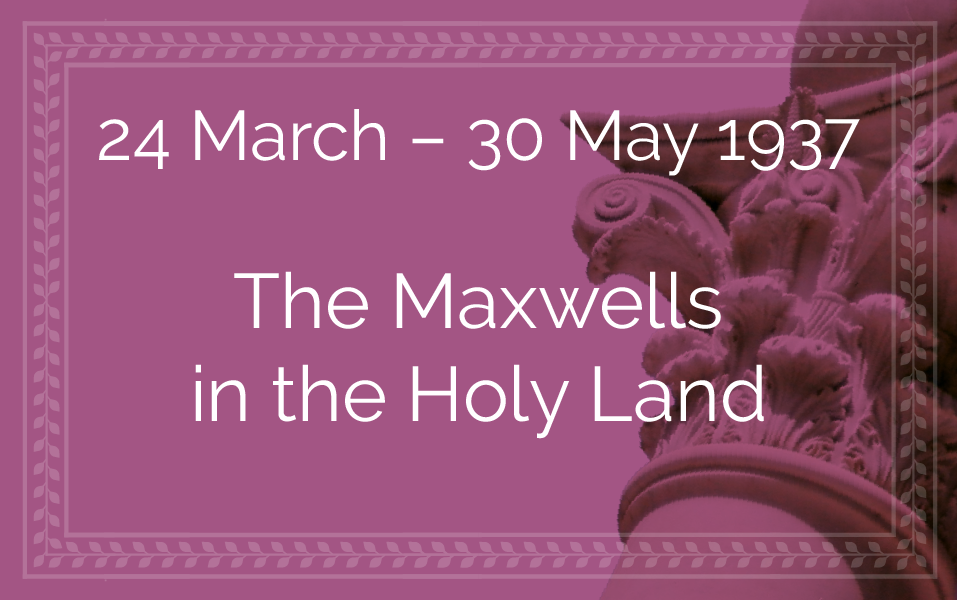
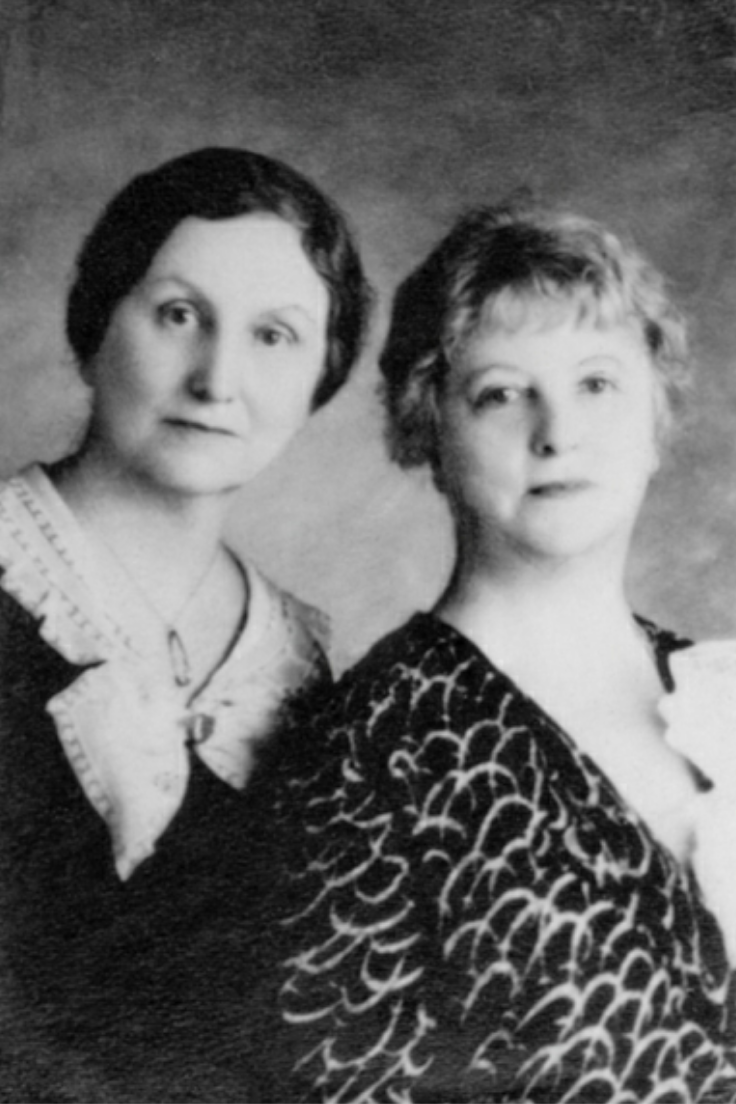
Agnes B. Alexander and May Maxwell, in Portland, Oregon, 3 July 1934, three years before they meet again in Haifa. Source: The Maxwells of Montreal: Early Years (1870 – 1922), Violette Nakhjavani, Kindle Edition, Location 4165.
William Sutherland and May Maxwell stayed in the Holy Land for two months after Rúḥíyyih Khánum’s wedding. And the Guardian met them almost every night for dinner, though there was no time for any deep personal intimacy to develop, as Rúḥíyyih Khánum stated.
During this time, William Sutherland Maxwell took many photographs of the members of the Holy Family, which he used to illustrate an article titled Recollections of Munírih Khánum.
Agnes Alexander arrived on 20 April 1937, and was ecstatic at the news, saying:
How marvelous are the ways of the beloved Guardian!
May Maxwell was ill for most of the time between March and May with fevers, William Sutherland Maxwell at her side, as she was in a state of emotional upheaval. She was at the same time ecstatic at the marriage of her beloved daughter and filled with sorrow at the idea of being separated from her when she left. From Nazareth, she wrote Shoghi Effendi, now her son-in-law as well as her Guardian:
I long so to see you! But the doctor said that only when I have no temperature could I get up, but you must feel the longing in my heart.
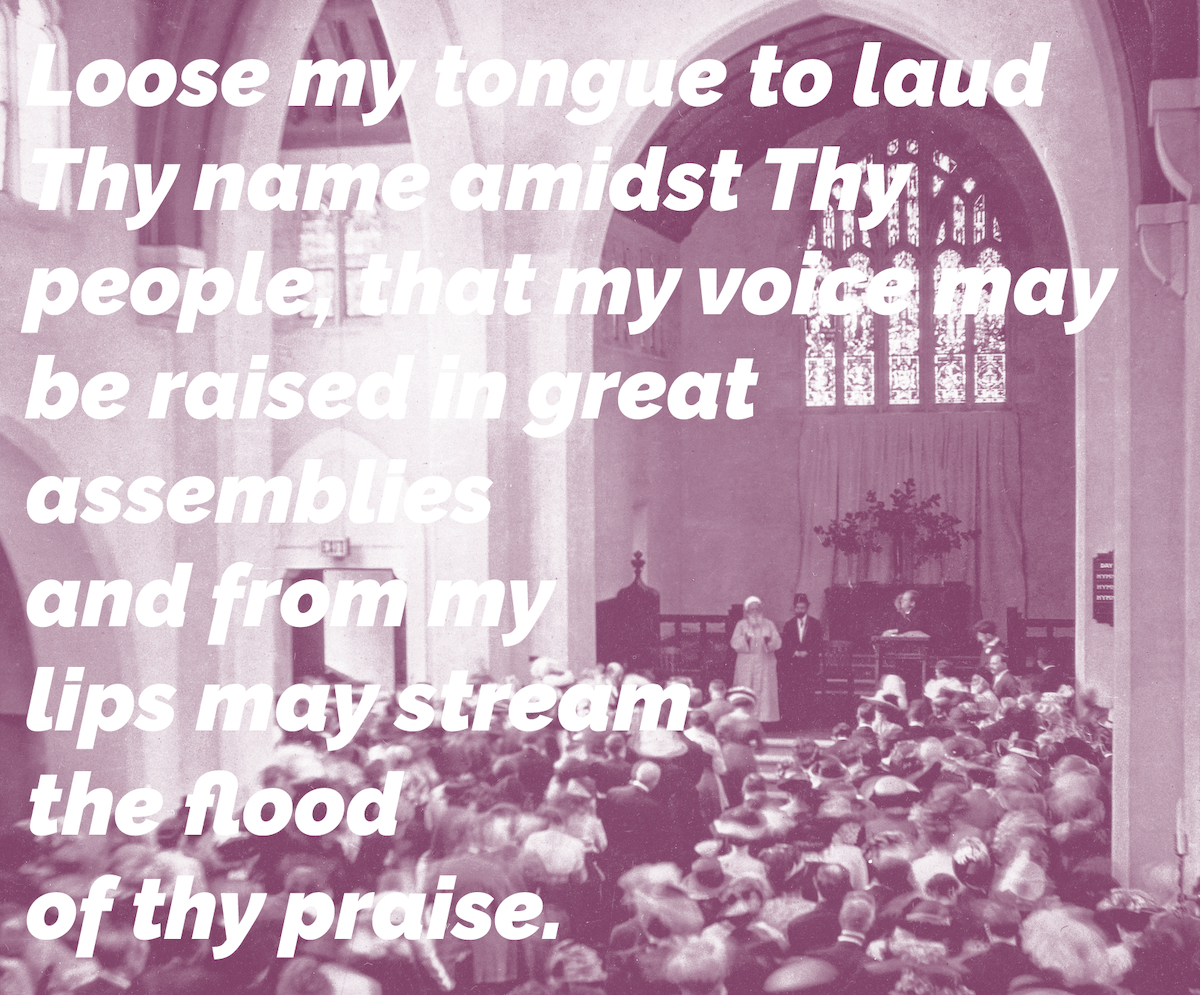
Photograph of 'Abdu'l-Bahá addressing a large gathering at the Plymouth Congregational Church, Chicago, Illinois, 5 May 1912. Source: Bahá'í Media Bank, © Bahá'í International Community 2023.
At the beginning of their marriage, Shoghi Effendi recommended to Rúḥíyyih Khánum that she memorize the prayer revealed by 'Abdu'l-Bahá which begins “O Lord, my God and my Haven in my distress! My shield and my Shelter in my woes! …” and which concludes with the poignant sentence: “Loose my tongue to laud Thy name amidst Thy people, that my voice may be raised in great assemblies and from my lips may stream the flood of thy praise.”
For the rest of her life, Rúḥíyyih Khánum, would attribute her legendary power of public speaking to Shoghi Effendi’s advice to memorize the prayer of 'Abdu'l-Bahá at the start of their marriage.
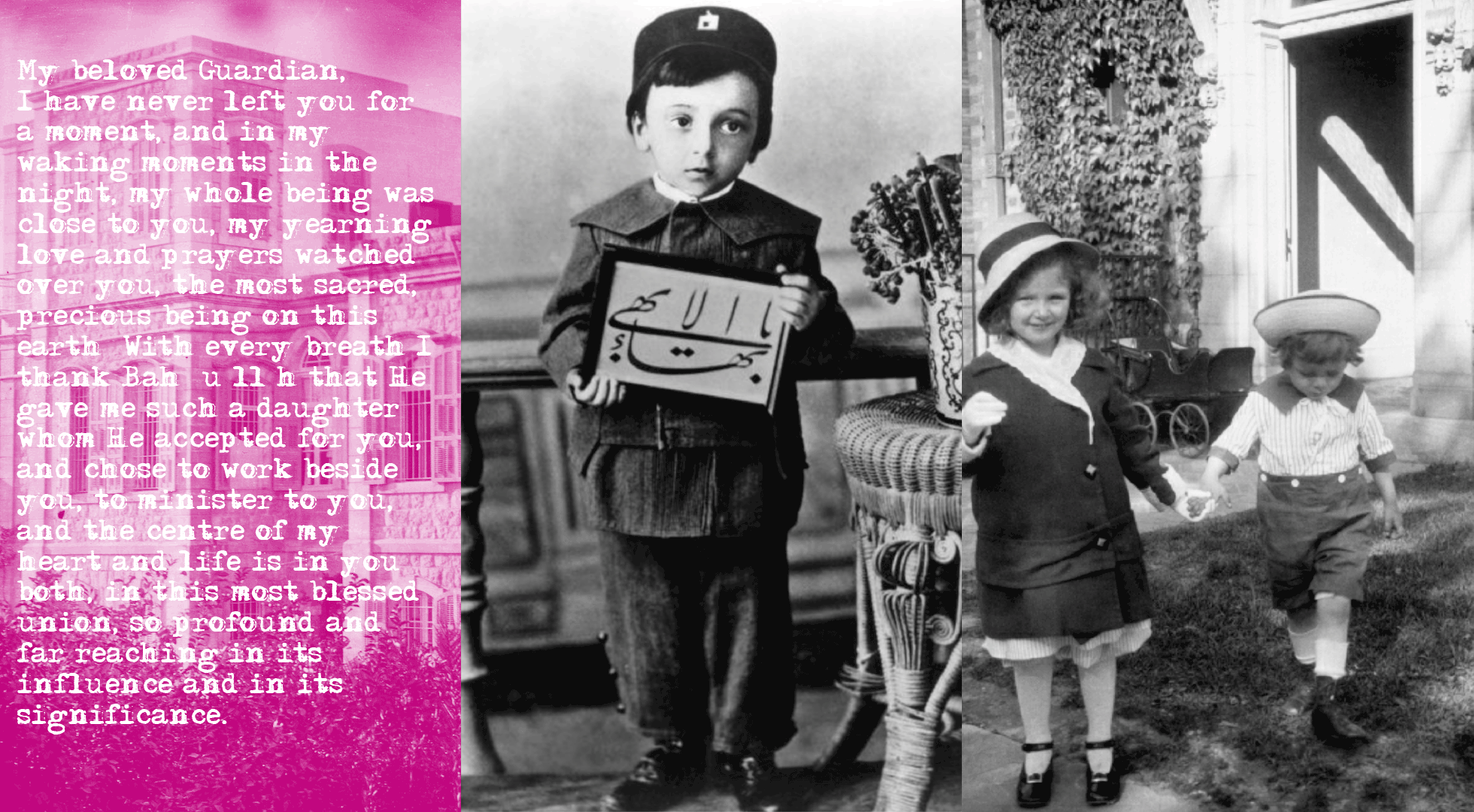
May Maxwell’s farewell letter to the Guardian. Photograph of Shoghi Effendi as a young child previously attributed in the chronology. Photograph of May Maxwell as a young child with her cousin Randolph Bolles, Jr., in front of the Maxwell home at 1548 Pine Avenue, Montreal. Source: The Maxwells of Montreal: Early Years (1870 – 1922), Violette Nakhjavani, Kindle Edition, Location 6453.
At midnight the night before she and Sutherland Maxwell left Haifa, May Maxwell had written an extremely moving letter to the Guardian, which can be found in Violette Nakhjávání’s extraordinary memoir, The Maxwells of Montreal, in full. It reads, in part:
My beloved Guardian,
I have never left you for a moment, and in my waking moments in the night, my whole being was close to you, my yearning love and prayers watched over you, the most sacred, precious being on this earth! With every breath I thank Bahá’u’lláh that He gave me such a daughter whom He accepted for you, and chose to work beside you, to minister to you, and the centre of my heart and life is in you both, in this most blessed union, so profound and far reaching in its influence and in its significance.
At the end of the letter, May Maxwell wrote a short note, in the form of a letter, informing the Guardian that she and her husband would soon be able to send him $500 for him to use as he saw fit, and she closed this second letter with a sweet note:
Please forgive this very messy letter.
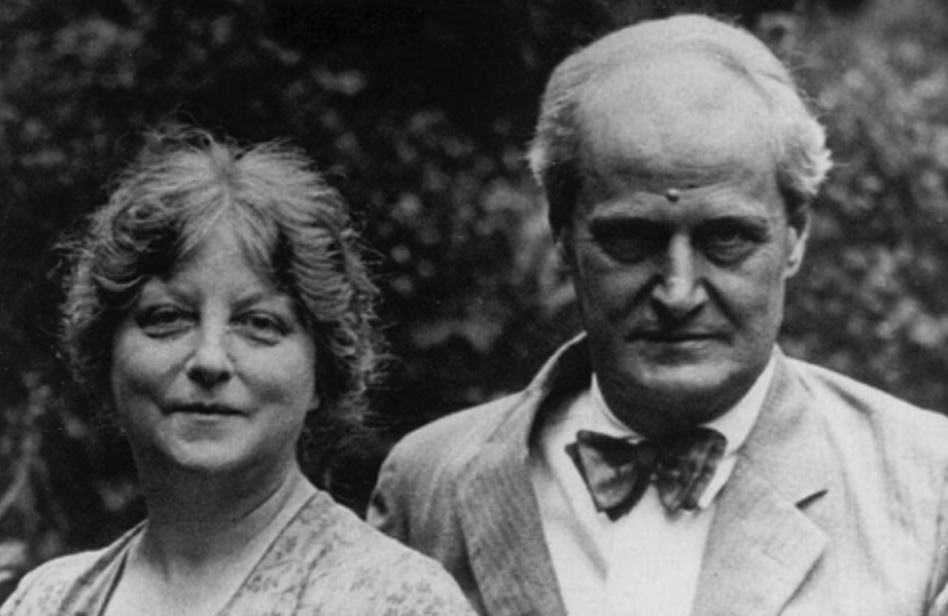
May and William Sutherland Maxwell. Source: The Bahá'í community of Ottawa.
The Maxwells left Haifa on 30 May 1937.
On the day of her departure, May Maxwell said to her daughter, Rúḥíyyih Khánum:
Mary, do you think the Guardian will kiss me good-bye?
Rúḥíyyih Khánum had never given that eventuality a thought, and she casually mentioned it to Shoghi Effendi, of course, not asking him to do anything about it.
The Maxwells were leaving in the afternoon, and after lunch, the Guardian went to see May Maxwell in her room in the Pilgrim House. After he had left, Rúḥíyyih Khánum went to her mother, who beamed, her eyes, as her daughter said, “shining like two stars,” and she told her:
He kissed me.
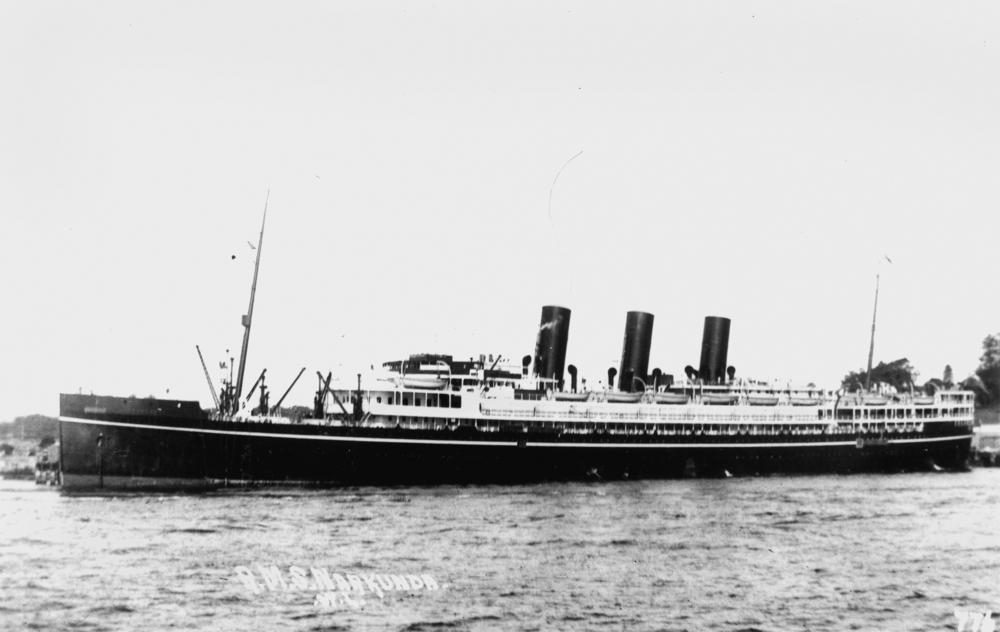
The S.S. Narkunda, the ship on which William Sutherland and May Maxwell sailed on, and to which the Guardian sent his cable. Source: Wikimedia Commons.
The next day, 31 May 1937, Shoghi Effendi sent the following cable to the Maxwells, addressed to the Captain of the S.S. Narkunda:
With you both always Shoghi.
Rúḥíyyih Khánum sent her parents a cable on the next day, 1 June 1937:
Loving you both tenderly very happy our great blessings Rúhíyyih.
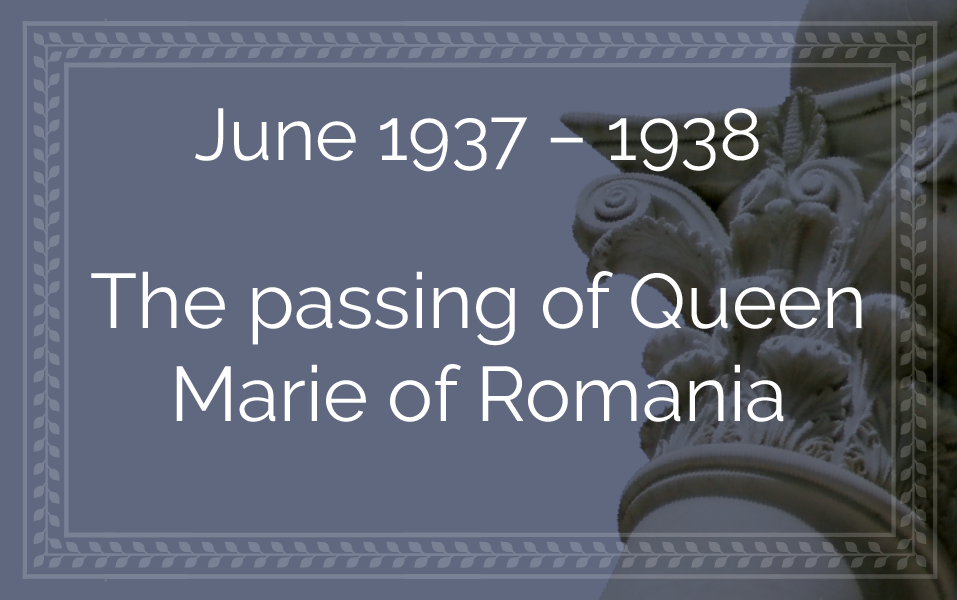

“On top of the world”: Shoghi Effendi’s bicycle—the poor man’s car—became a favorite of Shoghi Effendi. He sometimes climbed the heist passes in Switzerland, pushing it up and riding it down. Source: The Priceless Pearl.
When Shoghi Effendi took Rúḥíyyih Khánum to Interlaken, Switzerland for the first time, in the summer of 1937, he was greatly looking forward to introducing his new wife to Mr. Hauser, his beloved Swiss mountain guide, in whose cabin he stayed in every summer since his first as Guardian in 1922.
Shoghi Effendi had become deeply attached to Mr. Hauser, and they were close friends, often writing to each other when Shoghi Effendi was in Haifa. Mr. Hauser was a good friend, and he always listened with great interest to Shoghi Effendi’s account of his day’s hike or climb, constantly marveling at Shoghi Effendi’s endless energy and determination.
When they arrived, Shoghi Effendi learned that Mr. Hauser had passed away, and he took Rúḥíyyih Khánum with him to the peaceful mountain cemetery, so he could pay his respects to his dear friend of 15 years.

A gorgeous photograph of the area around Zermatt, showing both the famed Matterhorn mountain and the train line. Photo by Ryan Klaus on Unsplash.
The Guardian loved Switzerland with all his heart.
In all the years that Rúḥíyyih Khánum traveled with Shoghi Effendi, she noticed he never formed personal relationship during their trips, and rarely spoke to strangers. Rúḥíyyih Khánum was very sociable, and would often leave their compartment and have exciting conversations with passengers on the train.
Except for this one, memorable incident.
Once, Rúḥíyyih Khánum and Shoghi Effendi were on a train, leaving Zermatt, a Swiss town about 72 kilometers south of Interlaken.
They were seated on hard wooden seats in the third-class compartment, and a lovely youth, a descendant of Russian emigrants in the United States, was sitting facing the Guardian and Rúḥíyyih Khánum.
It was the young man’s first trip to Switzerland, and Shoghi Effendi began speaking with him enthusiastically, giving him travel advice on which places he should not miss seeing in the time he had.
Shoghi Effendi pulled out the guide to Swiss railways, showing him which trains to take, where to go, when to go there.
Rúḥíyyih Khánum sat back and watched her Guardian, speaking to this young Russian-American, and saw how the youth was so pleased with the attention. How the Guardian loved Switzerland. It had the power to bring him back to life in so many ways, and even speaking about the place he loved to a stranger he would never see again, was a joy for him.
On 20 December 1937, Mírzá Muḥammad-'Alí, the Arch-Breaker of the Covenant of Bahá'u'lláh, and 'Abdu'l-Bahá’s half-brother died and Shoghi Effendi sent the following cable to Bahá'í world after his death:
The Hand of Omnipotence has removed the Archbreaker of Bahá'u'lláh's Covenant, his hopes shattered, his plottings frustrated, the society of his fellow-conspirators extinguished. God's triumphant Faith forges on, its unity unimpaired, its purpose unsullied, its stability unshaken. Such a death calls for neither exultation nor recrimination, but evokes overwhelming pity at so tragic a downfall unparalleled in religious history.
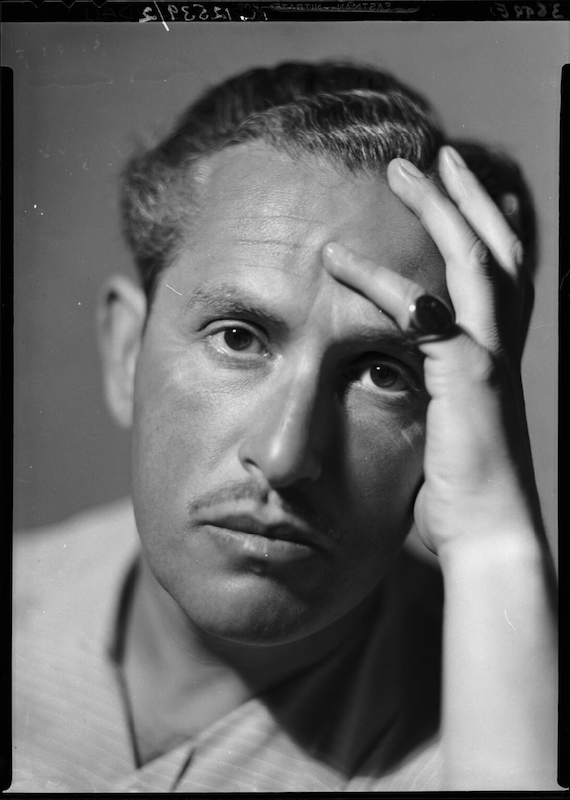
Rom Landau by Howard Coster half-plate film negative, 1937. Source: National Portrait Gallery, used according to Creative Commons License for educational non-profit purposes.
Romauld “Rom” Landau was born in Poland and studied philosophy, art, and religion at various European schools and universities notably in Germany, and spent his early years travelling and working as a sculptor. He earned a minor reputation in Europe as a writer on history, Polish biographies, and comparative religion, at the time he met the Guardian, his most well-known book was God is My Adventure, published in 1935.
In 1937 Rom Landau visited King Ibn Saud of Saudi Arabia, King Abdullah I of Jordan, and other secular and religious leaders of the Middle East, and published a book, Arm the Apostles in 1938, about his trip in which he advocated arming the Arabs so that they might aid the British and French in the coming war with Nazi Germany.
In 1938, Rom Landau visited the Middle East, and arrived in Haifa, where he met Shoghi Effendi, whom he had arranged to visit even before leaving England. Rom Landau was deeply anxious to meet Shoghi Effendi, because he considered the Bahá'u'lláh Fait to be, in his words:
It is one of the most important and most cosmopolitan of the various revivals which have emerged within the last hundred years from the womb of Islam. It is the least orthodox and most independent of them all.
His reason for being so eager to meet Shoghi Effendi was that he was eager to hear his views on religion:
…I was anxious to ascertain Shoghi Effendi's views on several subjects and to meet the Guardian of a faith which, in its Christian tolerance and its supernational and super-denominational appeal, contains some very attractive features.
Rom Landau was in shock when he first met Shoghi Effendi. He had built up Shoghi Effendi in his mind as a very impressive, formal man, and he met our sweet, friendly, loving Guardian:
Rarely has my imagination deceived me more blatantly than it did in the case of Shoghi Effendi. I imagined him a rather impressive-looking man, attractive by reason of some quality of gentleness or of a mixture of humanity and force. I expected dignity and should not have been surprised if I had met with unctuousness.
Rom Landau describes seeing Shoghi Effendi walk towards him with his distinctive, irrepressible energy:
When Shoghi Effendi entered the room with a buoyant step I could hardly believe that the dapper little man, so sprightly and neat in his European clothes with a black tarboosh, was connected with a movement of the spiritual significance of the Baha'is. He greeted me with a very charming smile, repeating several times: 'You are welcome, you are welcome, I am so glad you came.' His eyes and mouth did not cease smiling.
Rom Landau was charmed with Shoghi Effendi. His answers to his many questions were brisk and confident, Shoghi Effendi spoke quickly but calmly, and he was very confident and self-assured, but with a youthful energy, and described the Guardian’s English as excellent, visibly impressed that Shoghi Effendi had attended Oxford.
Rom Landau was very anxious about the future of the world and the rise of Naziism, and when he asked Shoghi Effendi about the future, the Guardian answered with a torrent of certainty:
There is a wonderfully bright future in store for humanity, but before it can come about terrible suffering will be inflicted by a world war. It will be far worse than the last war. Only through war and suffering can humanity learn the bitter lessons without which the new revival is impossible.
Then Rom Landau asked Shoghi Effendi which personalities in the Middle East he considered to be of spiritual significance, and Shoghi Effendi answered with his characteristic directness and honesty:
Such men do not exist. Most of the Near East and particularly Palestine are given up completely to politics. Islam, which in earlier days had the power to spiritualize its followers, is crumbling just as much as institutional Christianity. Do not expect to find here meditation or other forms of spiritual activity. Even Near-eastern Nationalism usually has to serve as cloak for the personal ambitions of those who call themselves patriots.
At the end of their conversation, Shoghi Effendi offered Rom Landau several Bahá'í books, and the gift emboldened Landau to ask Shoghi Effendi if he could take his picture, to which the Guardian answered:
No, all the Baha'is would like my photograph, but I don't believe in the worship of personalities. It can easily overshadow the essential adherence to a principle.
Far from being offended by Shoghi Effendi’s refusal to give let him take a picture of him, Rom Landau was thoroughly impressed and stated:
His refusal was the most personal and attractive statement of the afternoon, and I was glad that he would not let me photograph him.
YouTube video: The Funeral of. Queen Marie of Romania in Bucharest (1938). A Gaumont British Newsreel (Reuters).
Among the treasures in the International Bahá'í Archives in Haifa lies an exquisite and precious brooch belonging to the first queen to ever recognize and acknowledge the Revelation of Bahá'u'lláh, Her Majesty Queen Marie of Romania.
Queen Marie never hesitated in her belief in Bahá'u'lláh, and she never wavered. She instantly perceived the tenderness, the sweetness, the usefulness, and the comfort that the Bahá'í teachings offered her, and she drew strength from them for the rest of her life, which was filled with sorrow, difficulty, and family tensions.
After she became a Bahá'í, she widely publicized her beliefs.
Her husband, King Ferdinand I of Romania, died on 20 July 1927 in Queen Marie’s arms. His last words were “I am so tired.” Queen Marie’s grandson, King Michael I, ascended to the throne and three years later, his father Carol—Queen Marie’s son—usurped his throne. Queen Marie’s final public appearance was at the 9 May 1934 Independence Day parade, after which her son, King Carol II set out to destroy her reputation and push her out of the country.
Queen Marie refused to leave her country and stayed either at Bran Castle, near Brașov in southern Transylvania, or Balchik Palace, a residence she had built, where she could tend to her garden. Queen Marie also visited her children in Austria and Serbia.
Martha Root had her sixth and final interview with Queen Marie in February 1936 in the Controceni Palace. During this interview, Queen Marie spoke at length about the wonderful radiant force of the Guardian’s translations into English of Bahá'u'lláh’s Holy Writings—Gleanings from the Writings of Bahá'u'lláh—saying:
Even doubters would find a powerful strength in it if they could read it alone and would give their souls time to expand.
Four days later, Queen Marie sent her last public tribute to the Bahá'í Faith to be published by The Bahá'í World:
More than ever today when the world is facing such a crisis of bewilderment and unrest, must we stand firm in Faith seeking that which binds together instead of tearing asunder. To those searching for light, the Bahá’í Teachings offer a star which will lead them to deeper understanding, to assurance, peace and goodwill with all men.
MARIE, 1936.
Queen Marie died on 18 July 1938 at 5:38 PM from complications due to pancreatic cancer. She was buried on 23 July in Curtea de Argeș Monastery, a Romanian Orthodox cathedral in Argeș.
Queen Marie was a prolific author. She published 34 books. Her first was The Lily of Life, but she also published a critically-acclaimed autobiography, The Story of My Life, in which she has a beautiful line:
Words are dangerous things, let us remember. A republic might be brought into being by a poem.
She was a descendent of Queen Victoria, one of the only monarch whom Bahá'u'lláh addressed who had not rejected him impudently and out of hand. Queen Marie would live down in history as the first royal to embrace the Faith of Bahá'u'lláh.
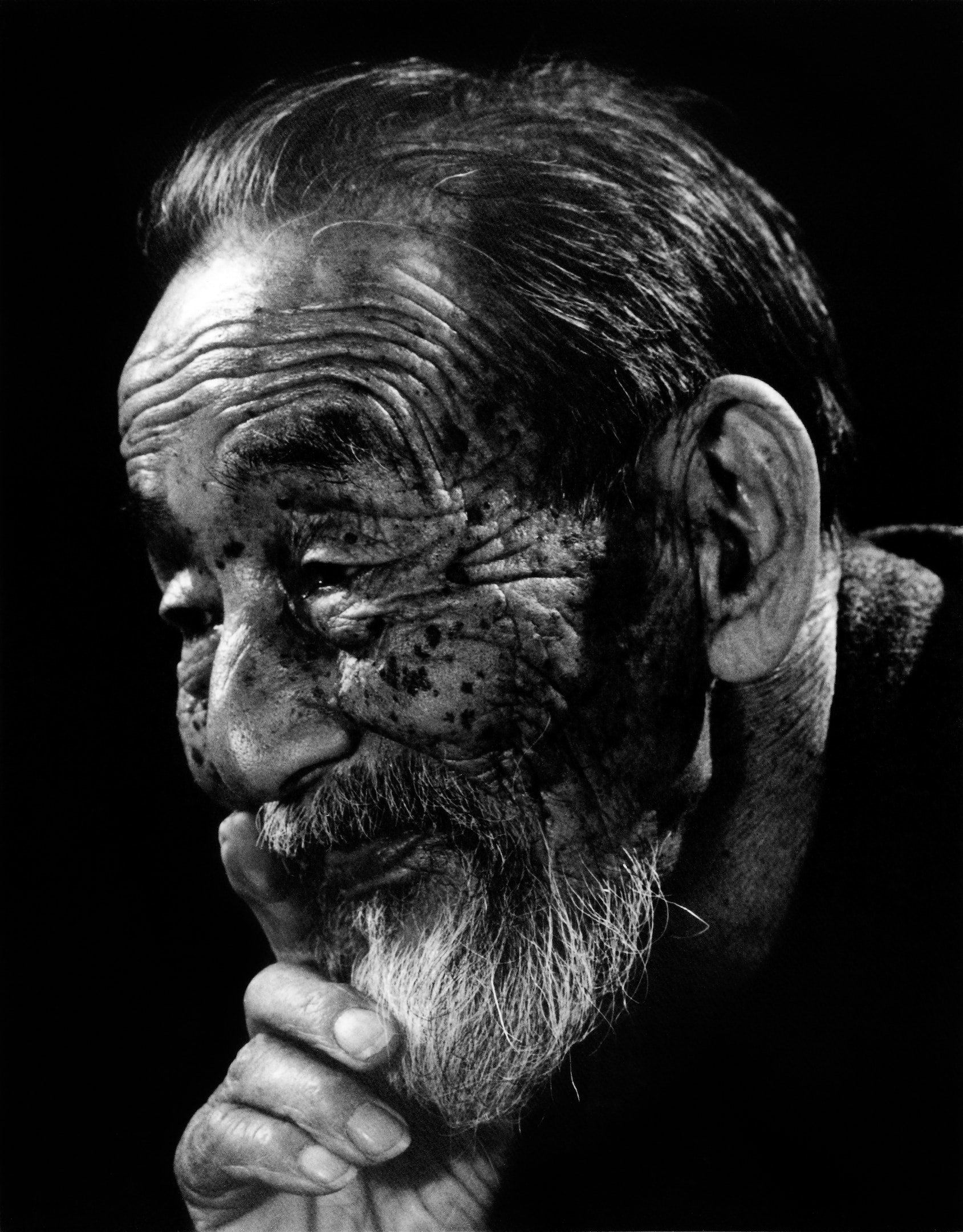
Saichiro Fujita, one of the earliest Bahá'ís, in his old age. Source: Bahá'í Media Bank, © Bahá'í International Community 2023.
Saichiro Fujita was born in Yamaguchi Prefecture, in 1886 and was the second Japanese Bahá'í when he declared in Oakland, California in 1904/1905. Saichiro Fujita first met 'Abdu'l-Bahá in Chicago in the home of Corinne True and traveled west with the Master when He visited California. In May 1913, Saichiro Fujita received a Tablet from ‘Abdu’l-Bahá advising him to prepare for service in the Holy Land by perfecting his profession— and six years later, 'Abdu'l-Bahá invited Saichiro Fujita to come and serve in the Holy Land.
Saichiro Fujita arrived in January 1920, accompanying 'Abdu'l-Bahá's hand-built seven-seater Cunningham automobile—a gift from Ella Goodall Cooper. When he arrived in Haifa, Shoghi Effendi was serving as 'Abdu'l-Bahá’s English secretary. Saichiro Fujita was the first Japanese Bahá'í to meet Shoghi Effendi.
After arriving in the Holy Land, Saichiro Fujita assisted Curtis Kelsey in installing electricity in various Bahá’í properties, helped design and develop the gardens around the Holy Places, served as 'Abdu'l-Bahá’s chauffer and as the Cunningham automobile’s mechanic, translated Japanese letters and messages.
In 1921, Siegfried Schopflocher, the future Hand of the Cause, became a Bahá'í after having a conversation with Saichiro Fujita. After 'Abdu'l-Bahá’s Ascension, Saichiro Fujita continued to serve Shoghi Effendi for many years.
Saichiro Fujita returned to Japan for a three-month vacation in 1936, and returned to the Holy Land for two years. In 1938, with the fast approach of World War II, Shoghi Effendi—concerned for Saichiro Fujita’s safety and mounting prejudice against the Japanese—directed him to return to Japan. In an interview, Saichiro Fujita said that Shoghi Effendi told him:
Go back to Japan. War is coming.
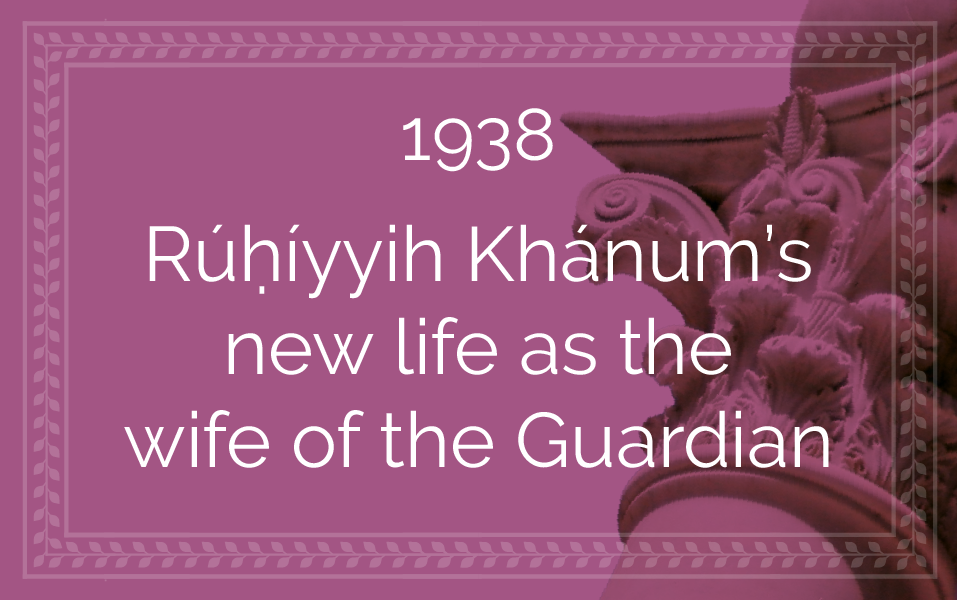
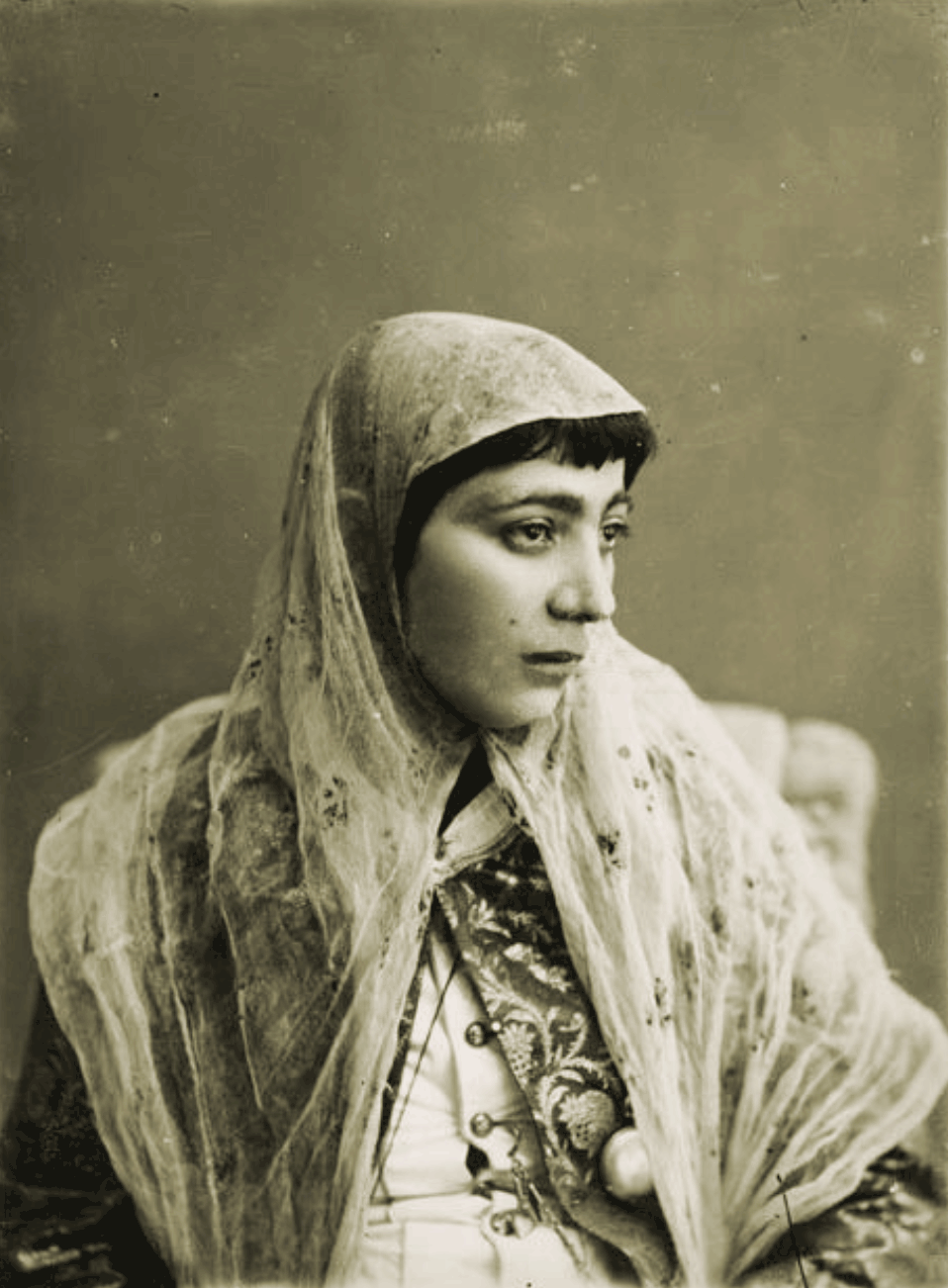
Portrait of a young Persian woman—about the age of Rúḥíyyih Khánum when she married—taken in the early 20th century by Antoin Sevrugin. Source: Wikimedia Commons.
When Rúḥíyyih Khánum married the Guardian, the headstrong young woman lived through a difficult period of adjustment and training that could not have been easy for her. She was parted forever from her beloved parents, from any semblance of familiar culture, her former home thousands of kilometers away across a sea and an ocean, and living with all her in-laws, their children, aunts, uncles, and cousins under the same roof. The Guardian had married a Canadian wife and Rúḥíyyih Khánum had entered a Persian household.
Patiently, lovingly, with immense kindness, Shoghi Effendi helped her navigate the cultural divide, teach her Persian, and help her get acquainted with the ways of a Persian household. The greatest obstacle was, of course, the language. The family of Shoghi Effendi all spoke English but they communicated in Persian, and jokes would fly over Rúḥíyyih Khánum’s head, which no doubt must have left her feeling left out.
But Rúḥíyyih Khánum had married her Beloved and she threw herself, heart and soul, into both her new life and her destiny, and it was a task that required rigorous discipline. Shoghi Effendi was her main teacher, and this was also an adjustment. As Mary Maxwell, she had always learnt best alone, she was self-taught in what she excelled at, but for this, she needed a guide, and Shoghi Effendi was her principal teacher.
Rúḥíyyih Khánum was a phenomenal student, very conscientious, had thrown herself with heart and soul into her destiny, and her task required a rigorous discipline. Under Shoghi Effendi’s strict tutelage she applied herself to conscientious study. Although she was an autodidact by nature and preferred to teach herself, rather than receive instruction—a habit she applied to many subjects in later life—he was, in effect, her principal teacher.
Over time, Rúḥíyyih Khánum learned Persian and she spoke it fluently.
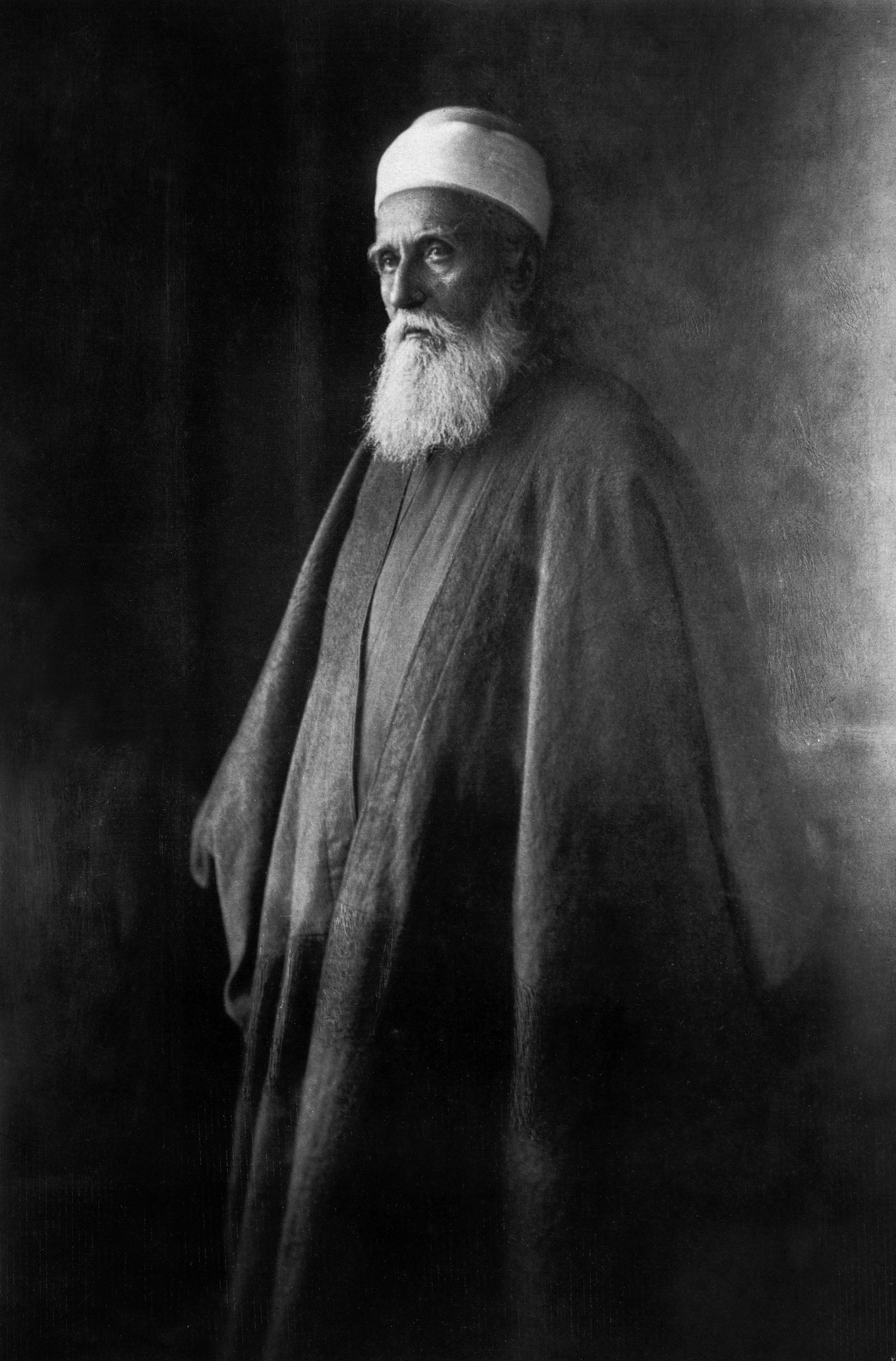
A portrait of 'Abdu'l-Bahá in Paris, France in 1911. Source: Bahá'í Media Bank, © Bahá'í International Community 2023.
Rúḥíyyih Khánum tells a perfect illustration of how reverence manifests itself in every small detail of everyday life when it permeates a person’s entire soul and consciousness, as it did with the Guardian. Reverence was part of the Guardian’s identity. He had utterly absorbed it, growing up in the Holy Family and kneeling at his adored Grandfather’s feet as a young child. He had inhaled it from the living example of 'Abdu'l-Bahá.
After her parents returned to Canada, they sent their beloved daughter her books, bookcase, and a framed portrait of 'Abdu'l-Bahá.
Rúḥíyyih Khánum carefully arranged all her belongings exactly as they had been in her room in Canada: she placed the bookshelf, with the books, and the portrait of 'Abdu'l-Bahá, at the feet of her bed.
When Shoghi Effendi noticed this, he exclaimed:
You put the Master at your feet!
Rúḥíyyih Khánum was startled by the intensity of Shoghi Effendi’s reaction. She explained that she always put 'Abdu'l-Bahá’s photo there so she could see His face as soon as she woke up in the morning.
Shoghi Effendi explained to Rúḥíyyih Khánum that this was not proper, it was not reverent.
The portrait of 'Abdu'l-Bahá should always be above her head, out of respect. The Master could never be placed facing the believers’ feet.
Rúḥíyyih Khánum realized with a shock that the Guardian had just taught her something that had never occurred to her: reverence gave geography to the room. Hanging sacred things like the photograph of 'Abdu'l-Bahá or the Greatest Name low was disrespectful, while hanging them higher was reverent.
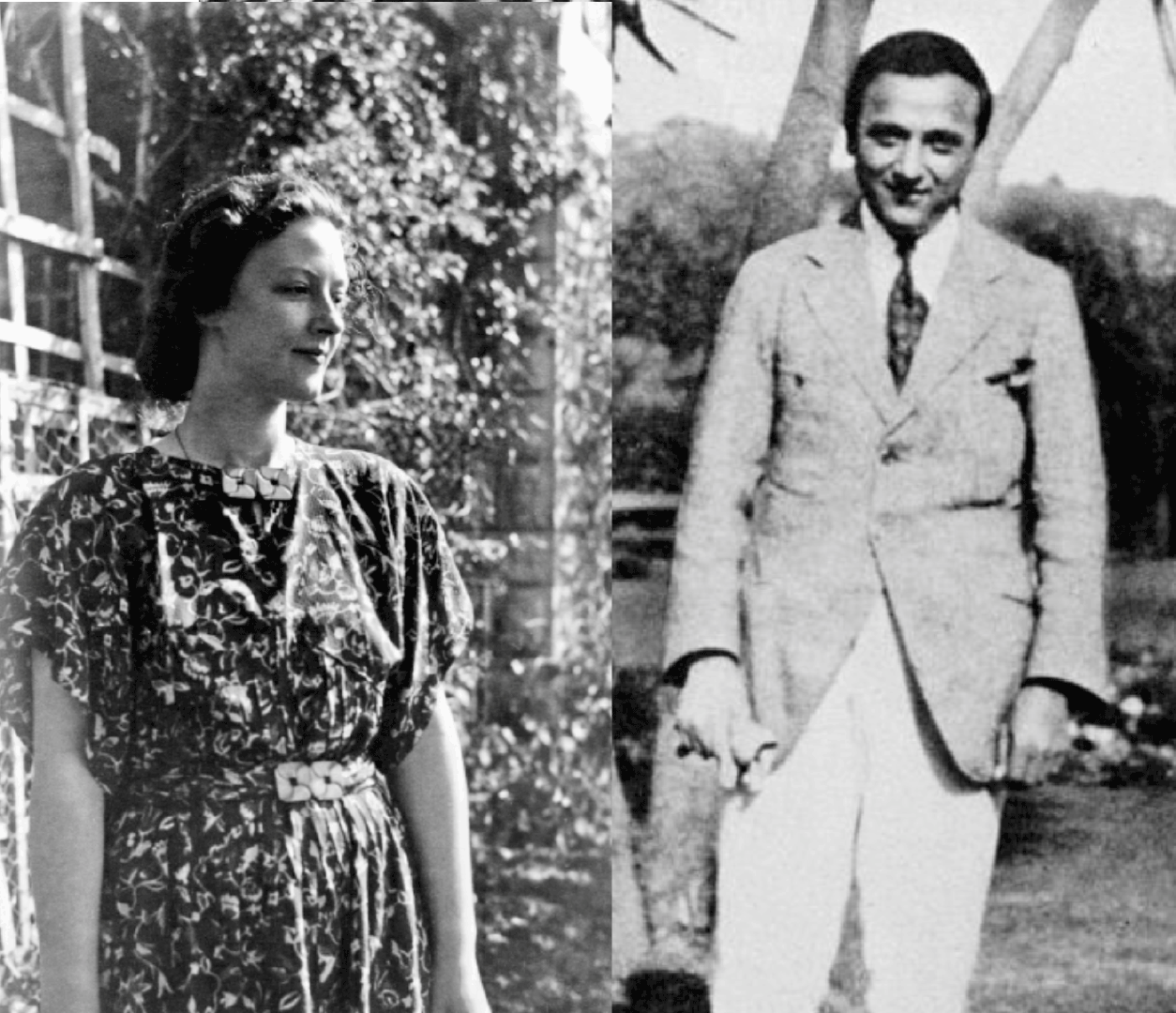
Both photographs of a young Mary Maxwell and Shoghi Effendi previously attributed in this chronology.
Rúḥíyyih Khánum was blissfully happy, married to her beloved, and serving him in any way she could. Just a year after her marriage, in 1938, you can feel the adoration she has for the Guardian in the sweet words she wrote to her mother in a letter:
If anyone asked me what my theme was in life I should say, “Shoghi Effendi.”
But Rúḥíyyih Khánum’s bond with her parents, May Maxwell William Sutherland Maxwell was still just as strong as it was in her youth. May, Sutherland, and Mary shared one passion: service to the Faith and their destinies were still tightly interwoven.
Rúḥíyyih Khánum believed that any service to the Cause performed by one of them was a shared blessing for all of them, a theme she echoed in a beautiful letter that her mother May Maxwell wrote her in December 1939:
It is not only thru my passionate love for this great Bahá’í Faith, but thru my love for her, and yearning to be more worthy of her, that I have considered going to South America to teach.
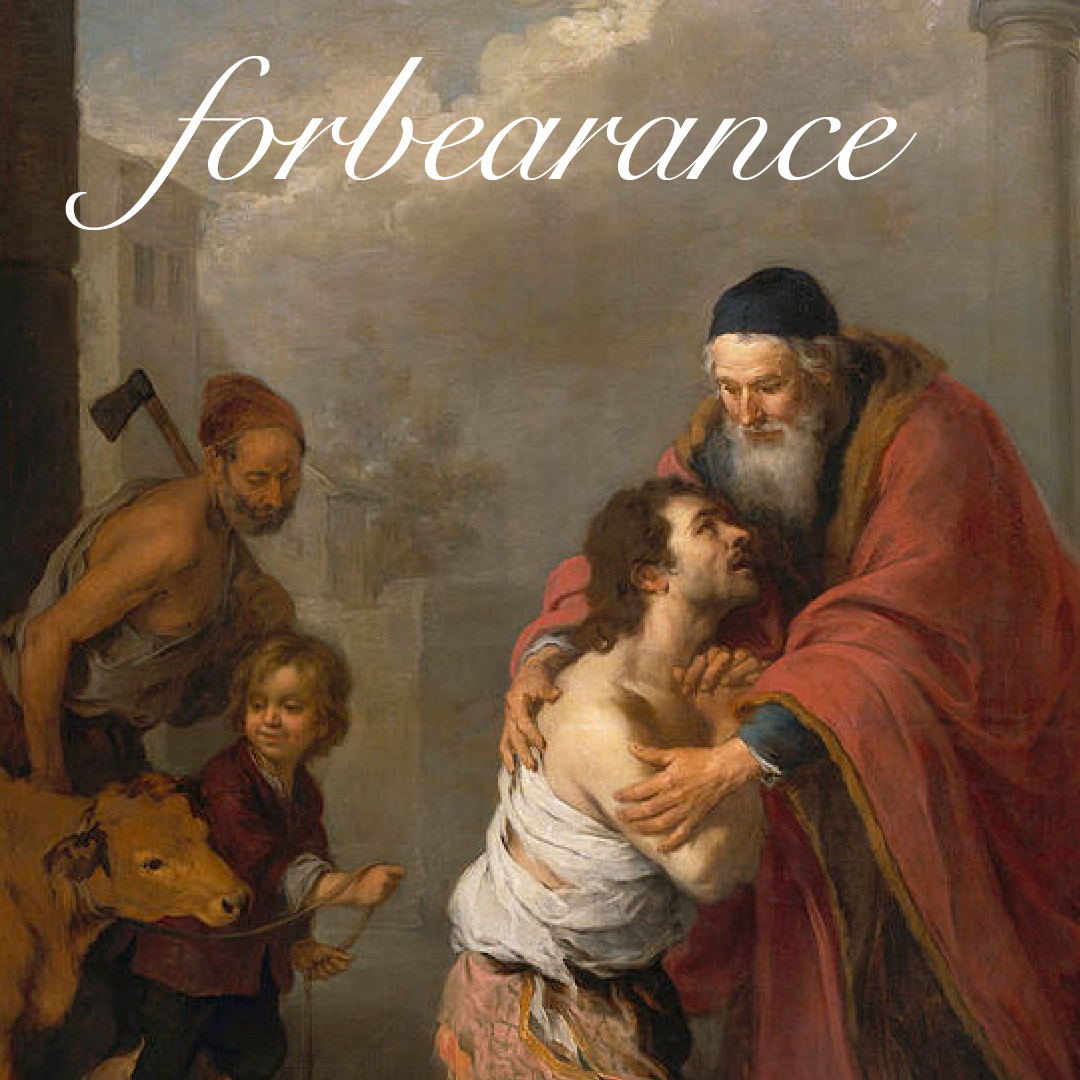
The Return of the Prodigal Son, 1670 a painting by Bartolomé Esteban Murillo, Gift of the Avalon Foundation, a powerful symbol of empathy, forgiveness and forbearance. Source: National Gallery of Art.
Shoghi Effendi was an immaculately tidy person.
And Rúḥíyyih Khánum was, in her own words:
I am, without any doubt, one of the untidiest people I have ever met.
But Shoghi Effendi, in 20 years of marriage, never, ever criticized his wife for this. This is what Rúḥíyyih Khánum had to say about it, and it is probably one of the most intimate vignettes she ever agreed to share about her marriage to the Guardian of the Cause. The only reason she shared it, was to glory Shoghi Effendi’s character:
Shoghi Effendi, I always considered one of these signs, in a small scale, of the greatness of his character was that he never reproached me for being untidy… And I always thought, and I appreciated it very, very deeply that he never once in 20 years, rebuked me for being untidy or asked me to become tidy.
This story is the epitome of the Guardian’s loving-kindness, compassion, empathy, and forbearance. And also a testament to how much he loved and respected his wife, not to let an unimportant difference in lifestyles even be mentioned between them.
Rúḥíyyih Khánum once said that one of the differences between her in Shoghi Effendi in terms of their style of living was:
As great as his genius is for getting things tidy, mine is for getting my room untidy.
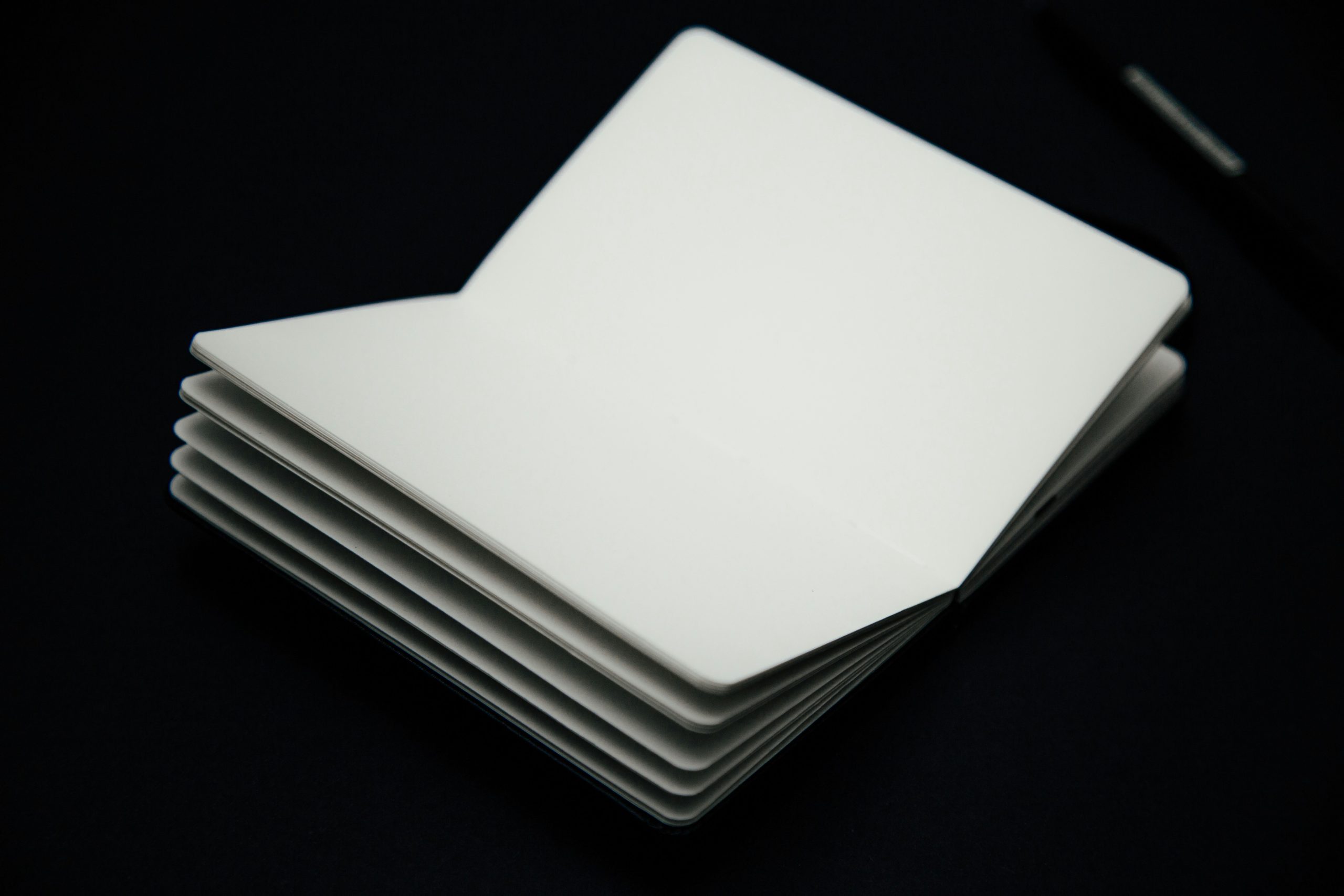
Little black notebook. Photo by charlesdeluvio on Unsplash.
Shoghi Effendi loved little things.
He had very nice, old-fashioned little business cards with his name engraved, and he only used them when he was mailing a book like God Passes By, Gleanings from the Writings of Bahá'u'lláh, or The Bahá'í World to someone. The rest of the time, Shoghi Effendi loved to keep notes on them.
When he wasn’t jotting down notes on his business cards, Shoghi Effendi wrote absolutely everything in small, lined notebooks 8 centimeters wide by 13 centimeters long. Shoghi Effendi wrote his notes in a very compact, methodical way.
Shoghi Effendi kept many, many, lists in his small lined notebooks, such as, for one example, lists of the days when his newspapers had been delivered, places and people he wrote to—132 places from 16 December 1922 to 23 February 1923, for example—vocabulary words, and typical English phrases.
Shoghi Effendi never trusted calendars. He trusted his little lined notebooks, where he manually created his own calendar.
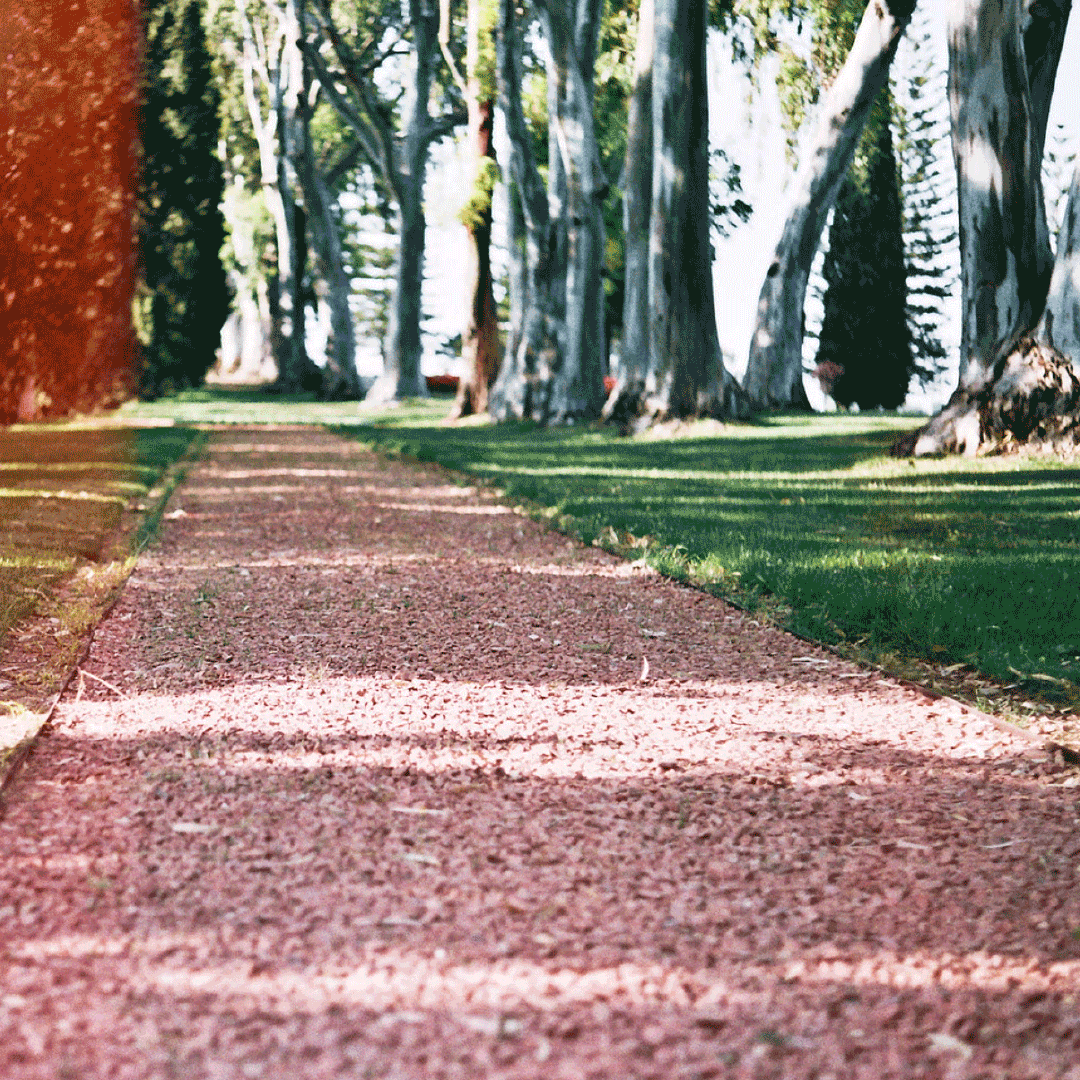
A red crushed-tile path at Bahjí with green lawns, two of Shoghi Effendi’s favorite things. Source: Chad Mauger’s Flickr page, © Chad Mauger, used with permission.
The Guardian did not like many things. But the things he did—and it was a small range of very specific things—he loved with passion, one would almost say with loyalty throughout his entire life.
Rúḥíyyih Khánum describes the Guardian particularly specific tastes, his unswerving love for a small but deeply satisfying range of beloved things in design, food, clothes, and colors:
He likes green lawns, red paths and white paths, red geraniums, cypress trees, and of course, a few other things - but I mean he does not like or want every tree and every flower. No, only just those few and in just such a place. The same is true of foods, the same of colours, of clothes - just a few things, he likes them passionately, he does not want anything else, he never tires of them! It is this almost narrow insistence on one or two themes that has enabled him to build in twenty years such a foundation in the Cause. A man of more catholic tastes and temperament could "never have done it!”
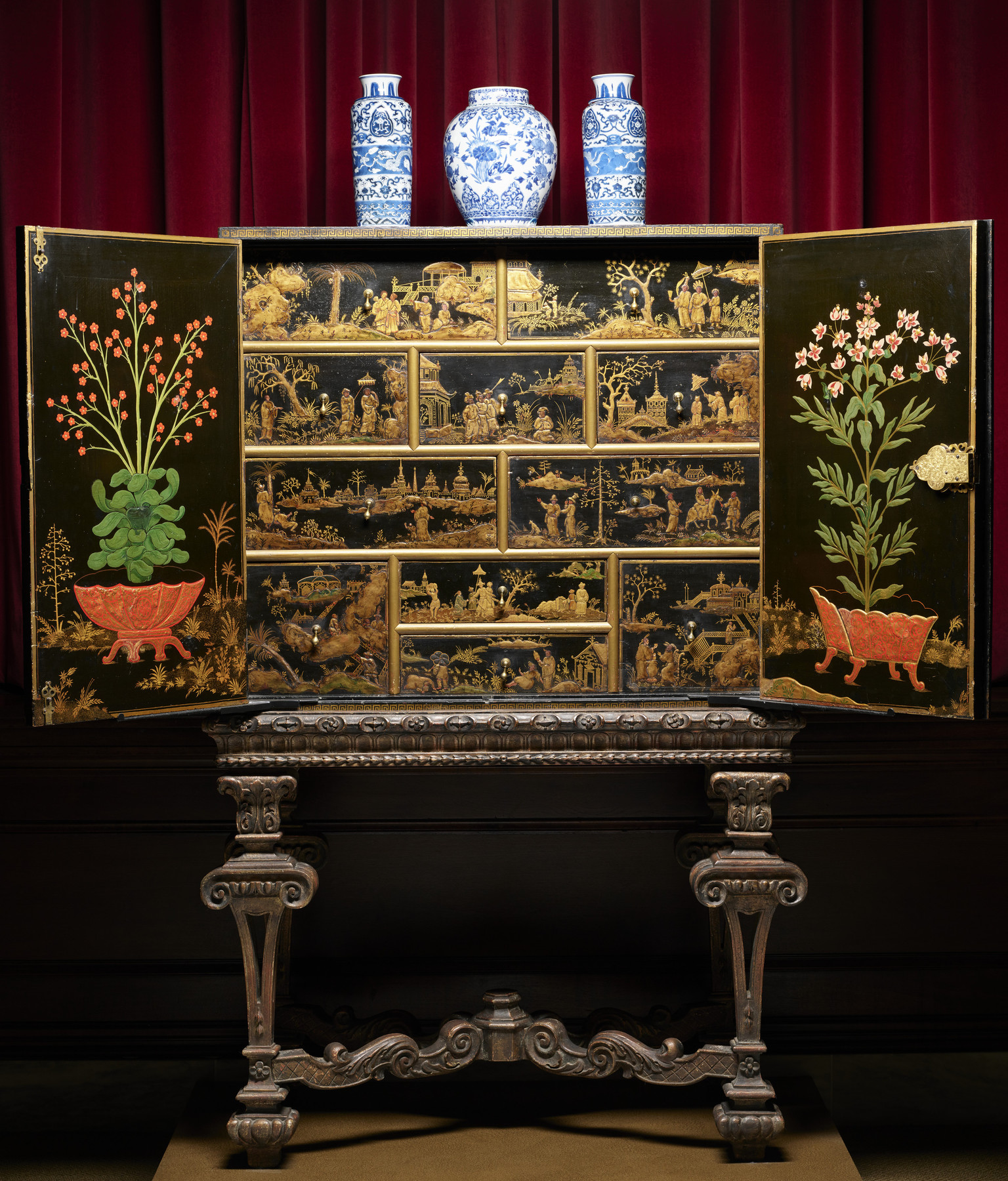
A Japanese lacquer cabinet of the type Shoghi Effendi dearly loved, and which he purchased in large quantities to furnish the interior of the International Bahá'í Archives. Source: The Walters Art Museum, under Creative Commons License.
Although the Guardian had a deep love for a small number of very specific things, he was not intractable, and he sometimes had wonderful reactions to new things he discovered or came across. This is the story of how the Guardian fell in love with Japanese and Chinese art.
The Guardian grew up in a house without art, and in 1937, he married Rúḥíyyih Khánum and entered into a family that had been steeped in a deep artistic culture. William Sutherland Maxwell was a consummate artist, a lover of art since his early childhood. Art was his work, and art was his life. The Guardian’s wife, Rúḥíyyih Khánum had grown up in a house suffused with art.
When Rúḥíyyih Khánum was married, William Sutherland Maxwell sent her Japanese kakemonos to decorate her home. Kakemonos—better known as kakejikus (hung scroll) are Japanese hanging scrolls of paintings and calligraphy mounted on silk fabric.
Before his marriage, Shoghi Effendi only had a two-room apartment on the roof of the house of 'Abdu'l-Bahá, the two rooms the Greatest Holy Leaf had built for him. After he was married, Shoghi Effendi built three more rooms, so that he and Rúḥíyyih Khánum would have enough space. When Rúḥíyyih Khánum received the kakemonos, she hung three of them in their sitting room, with Shoghi Effendi’s permission.
Sometimes, Shoghi Effendi would go into the sitting room and look at the kakemonos. One day, he told Rúḥíyyih Khánum:
You know, the more I look at these, the more I think they are beautiful.
Something about the kakemonos awakened a deep love in the Guardian’s heart for the wonderful beauty and delicacy of Japanese—and later Chinese—art. The Guardian was a deeply receptive person and, in Rúḥíyyih Khánum’s words, “he just drank it in.” According to Rúḥíyyih Khánum, it was that contact with Japanese art that prompted him to furnish the International Bahá'í Archives with Chinese and Japanese objects and furnishings and lacquer cabinets.
The Guardian’s dedication and love to a small range of architectural styles never meant that he did not develop these same passionate loves for new styles in later life. As Rúḥíyyih Khánum says:
So you see how with what alacrity, with what life and enthusiasm he responded to anything new that came in his path.
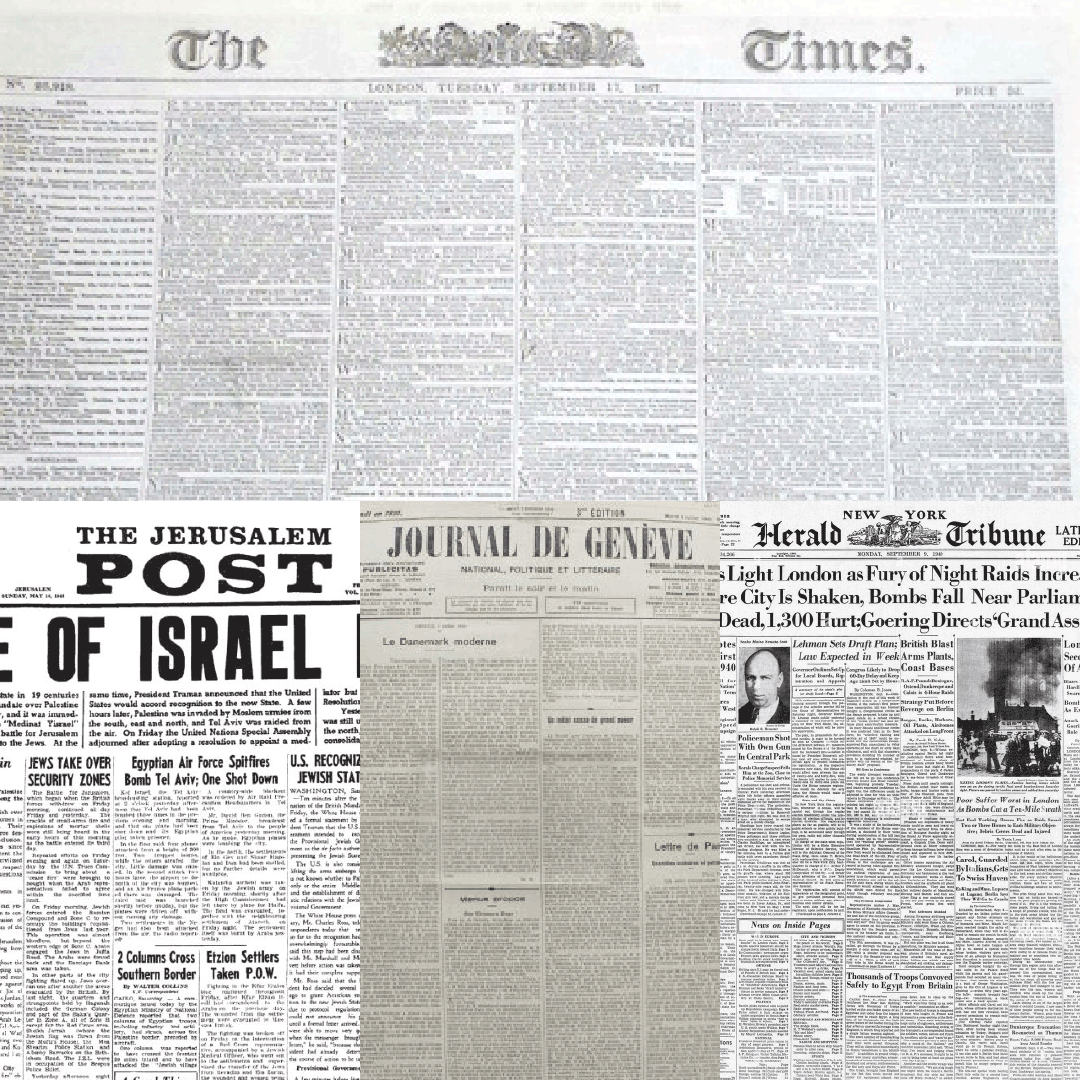
Front pages of Shoghi Effendi’s four favourite newspapers, all from the 1940s: The Times of London, The Jerusalem Post, Le Journal de Genève, and The New York Herald Tribune.
One of Shoghi Effendi’s great loves was newspapers. He had been fascinated with what was going on in the world since he was a teenager, and he carried into adulthood until the day he died that passion for following the news with great interest. Shoghi Effendi read the newspaper to be up-to-date on what was happening in the world, but he loved to read editorials by prominent personalities, thinkers, philosophers, politicians providing their commentary on current events.
He read The Times of London, The Jerusalem Post when he was in Israel, and Le Journal de Genève when he was in Europe. When he left Haifa for his yearly stay in Switzerland, the Guardian had The Jerusalem Post forwarded to him. He also sometimes read the Paris edition of the New York Herald Tribune.
Shoghi Effendi did not read the newspaper like other people, and definitely not cover to cover. Because of the inhuman constraints on his time, he would take a newspaper, and eliminate all the non-essential articles, the fluff pieces, and focused only on the pages of the Times he was concerned with. He carefully tore out editorials, world news, articles about world leaders, and threw the rest of the newspaper away.
Rúḥíyyih Khánum remembered affectionately that she almost never got the chance to see a complete newspaper. Shoghi Effendi would hand her clipping after clipping, telling her “read this, it's interesting," and she would take the clippings and stuff them in her purse or in her pocket until she could read them, and discover a wide variety of articles on a debate in the House of Commons, an intelligent commentary on some political situation, a summary of the current social or economic trends, or religious issues.
Shoghi Effendi had trimmed the fat from the newspaper and kept only the substance. This was not only an efficient way to get the most out of the news, it was also the sign of a man who was so weighed down with a herculean amount of work that even reading the paper was a burden if he didn’t edit it.

Beautiful ornamental stone basin fountain at the Riḍván Garden. Source: Bahá'í Media Bank, © Bahá'í International Community 2023.
Shoghi Effendi loved to bargain.
He bargained for everything he bought for the Holy Places and the Archives. And he didn’t buy them from discount back-alley stores. He bought them from very, very famous, reputable, and internationally-known firms.
The Guardian was deeply protective of the funds of the Faith. They came, after all, from sacrificing Bahá'ís.
When he bargained for an ornament, for example, he would tell the salesman:
I can't pay that much.
Then, he would begin bargaining, and almost invariably, he purchased the ornament for less than the initial price.
One day, in a store, Shoghi Effendi spotted a very unique, very beautiful marble basin that would have looked wonderful in the gardens. But the price was too high. Rúḥíyyih Khánum begged him to buy it anyway, but the Guardian said:
No, it's too expensive.
The salesman said:
You know Mr. Rabbání, I'd be glad to bring down the price, but I paid an awful lot for it, and I really can't make it any cheaper than that, even for you.
Shoghi Effendi didn’t buy the ornament he loved so much.
Rúḥíyyih Khánum said:
Shoghi Effendi, you have the money. You can buy it.
But the Guardian repeated:
No, it's too much.
In the end, the Guardian’s conscience simply would not allow him to spend money on an ornament he sincerely believed was too expensive. He just would not go that far.
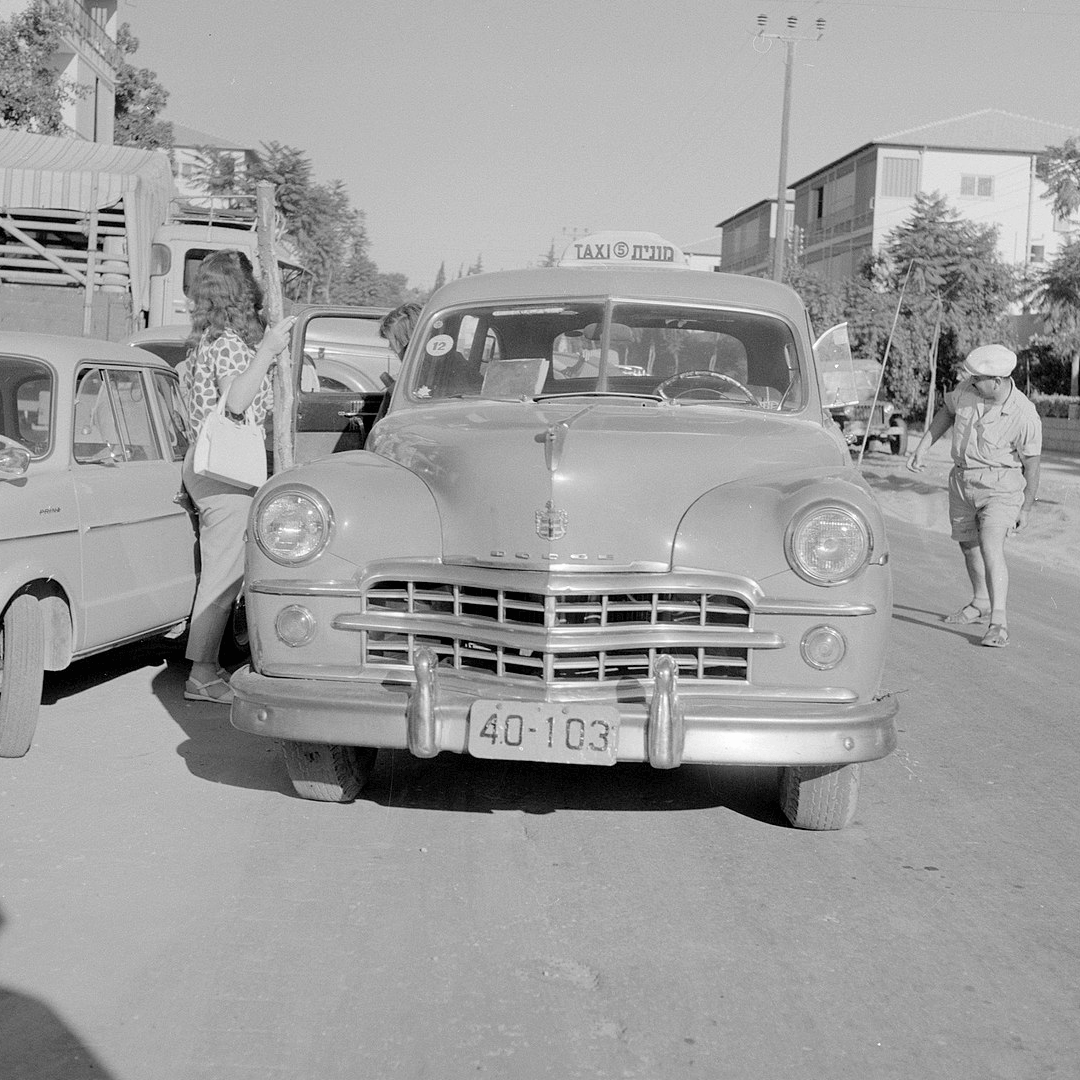
In honor of Shoghi Effendi’s selling his car and using taxis, a photograph of a Dodge brand taxi in Ramat Goan on 1 January 1963. Source: Wikimedia Commons.
Throughout his Guardianship, Shoghi Effendi made countless decisions, born out of shrewdness and sound judgement, and saved the Faith incredible amounts of money that could then be spent on pressing, urgent, and critical issues.
Shoghi Effendi single-handedly saved the Faith from temporary bankruptcy, over, and over again, throughout the 36 years of his ministry, and never jeopardized the Cause’s finances on unilaterally pursuing a single project. Not only did he have a great business sense, but he managed to care deeply about the details of every aspect of the Faith, without ever losing his focus on the big picture.
One of the only principles which Shoghi Effendi abided by strictly was economy. The Guardian had very strict ideas about how money should be used and spent and this manifested itself in a variety of ways.
In his own life, The Guardian never paid a bill he hadn’t checked, whether for a meal in a restaurant or a bill for thousands of dollars. Not only would Shoghi Effendi point out overcharges, but he would also insist on settling if there was an undercharge.
Shoghi Effendi also had the habit of bargaining, but only if he knew the price for the item was excessive.
With regards to Bahá'ís, for example, at the level of the individual, Shoghi Effendi more than once refused to allow a believer to come on pilgrimage when he knew for certain that person was in debt, insisting that believer pay off his debt before coming to the Holy Land.
When it came to ornaments to beautify the Shrines, the Archives, or the Gardens, Shoghi Effendi would refuse to be overcharged, something he felt was dishonest. Even if he had the money, and dearly wanted the ornament, Shoghi Effendi would stick by his principles, and would not purchase it.
Another example was Shoghi Effendi’s car. During the leanest years of World War 2, spare parts were impossible to find, so Shoghi Effendi sold his car and traveled by taxi.
All in all, the Guardian despised extravagance in all its forms such as luxury and ostentation, and unless something was necessary, justified and appropriate, he simply would not purchase it or spend money on it.
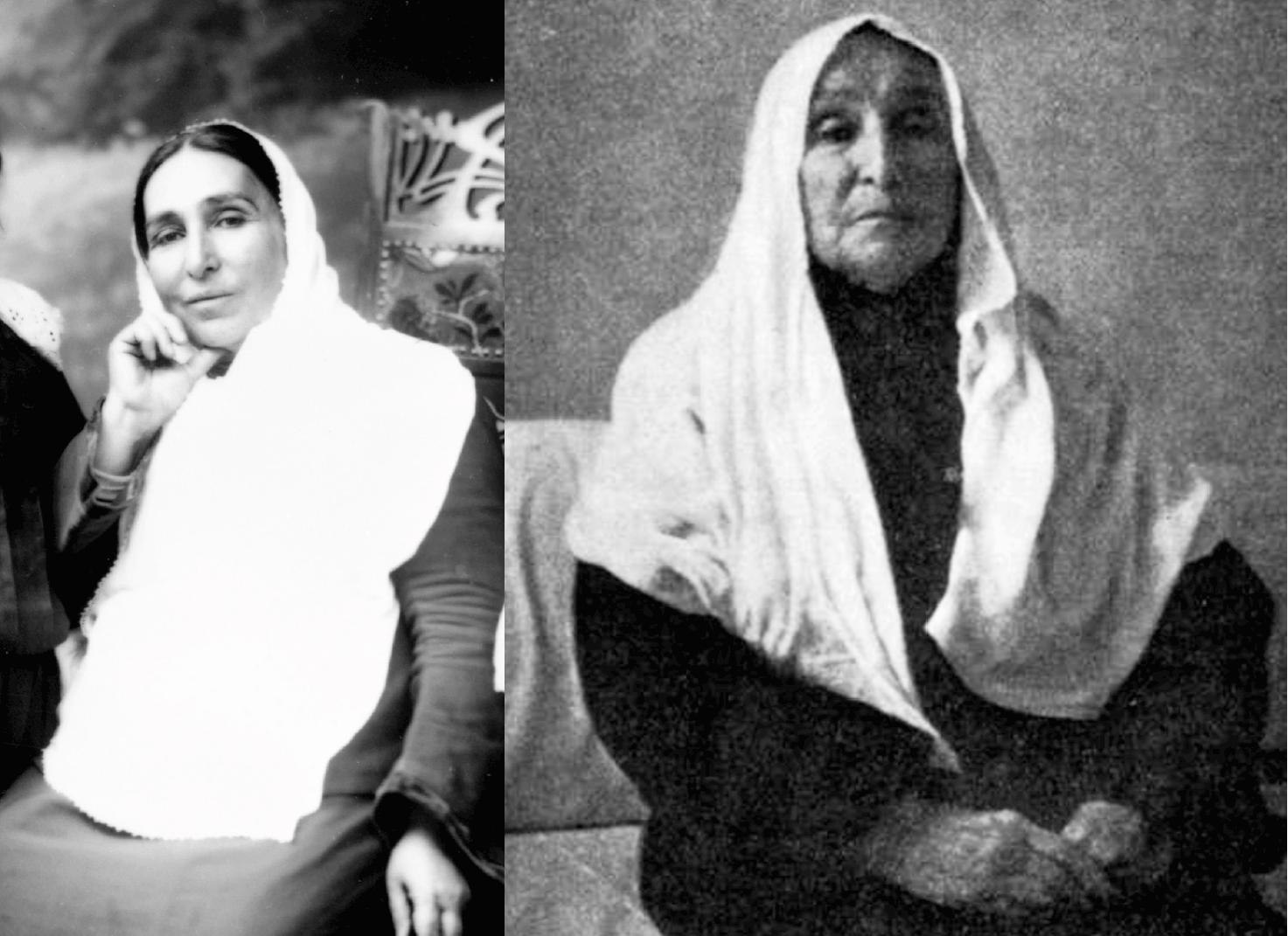
Munírih Khánum, wife of 'Abdu'l-Bahá and grandmother of Shoghi Effendi. On the left, in her youth in the 1870s (Bahá'í Media Bank), and on the right, in her old age in 1900 (Bahaimedia).
The story of Munírih Khánum’s birth is so extraordinary it made its way into Bahá'í history.
Munírih Khánum’s parents— Muhammad ʻAlí Nahrí and his wife, Zahrá—had not been able to conceive a child. While the Báb was in Iṣfahán in late 1846, they attended a dinner in His honor. Muhammad ʻAlí Nahrí’s brother, Mírzá Ibráhím interceded on behalf of his brother and begged the Báb to grant them a child. The Báb placed a portion of his food on a plate and told Mírzá Ibráhím:
Let them both partake of this, their wish will be fulfilled.
A year and a half later, when Muhammad ʻAlí Nahrí was at the Conference of Badasht in the summer of 1848, his daughter, Fáṭimih Nahrí, was born. Fáṭimih was a deeply spiritual child who often had dreams of the Manifestations of God. In 1870/1871, Bahá'u'lláh chose her to become 'Abdu'l-Bahá’s bride when He saw her face in a dream.
Munírih Khánum was the wife of 'Abdu'l-Bahá for 48 years, and bore Him eight children, only four of whom—all daughters—lived to adulthood, from oldest to youngest, their daughters were named Ḍíyá‘íyyih Khánum—the mother of Shoghi Effendi—Ṭúbá Khánum, Rúḥá Khánum, and Munavvar Khánum.
She was an exceptional woman, known to all pilgrim Bahá'ís as “Holy Mother,” the incarnation of universal motherhood, but she was more than that. Munírih Khánum was a talented writer and poet, the only woman in the Heroic Age of the Faith to write her own autobiography. She was a social activist at heart, but her plan to open a girls’ school on Mount Carmel never materialized. She spent 11 years in close companionship with her spiritual sister, the Greatest Holy Leaf, and Bahíyyih Khánum’s passing in July 1932 broke her heart.
Munírih Khánum passed away on 28 April 1938, at the age of 90. The same day, the Guardian sent a cable to the Bahá'ís of America:
Holy mother Munírih Khánum ascended Abhá kingdom. With sorrowful hearts Bahá’ís world over recall divers phases her rich eventful life marked by unique services which by virtue her exalted position she rendered during darkest days ‘Abdu’l-Bahá life. All Riḍván festivities suspended. Advise convention delegates devote special session her memory hold befitting gathering auditorium Mashriqu’l-Adhkár.
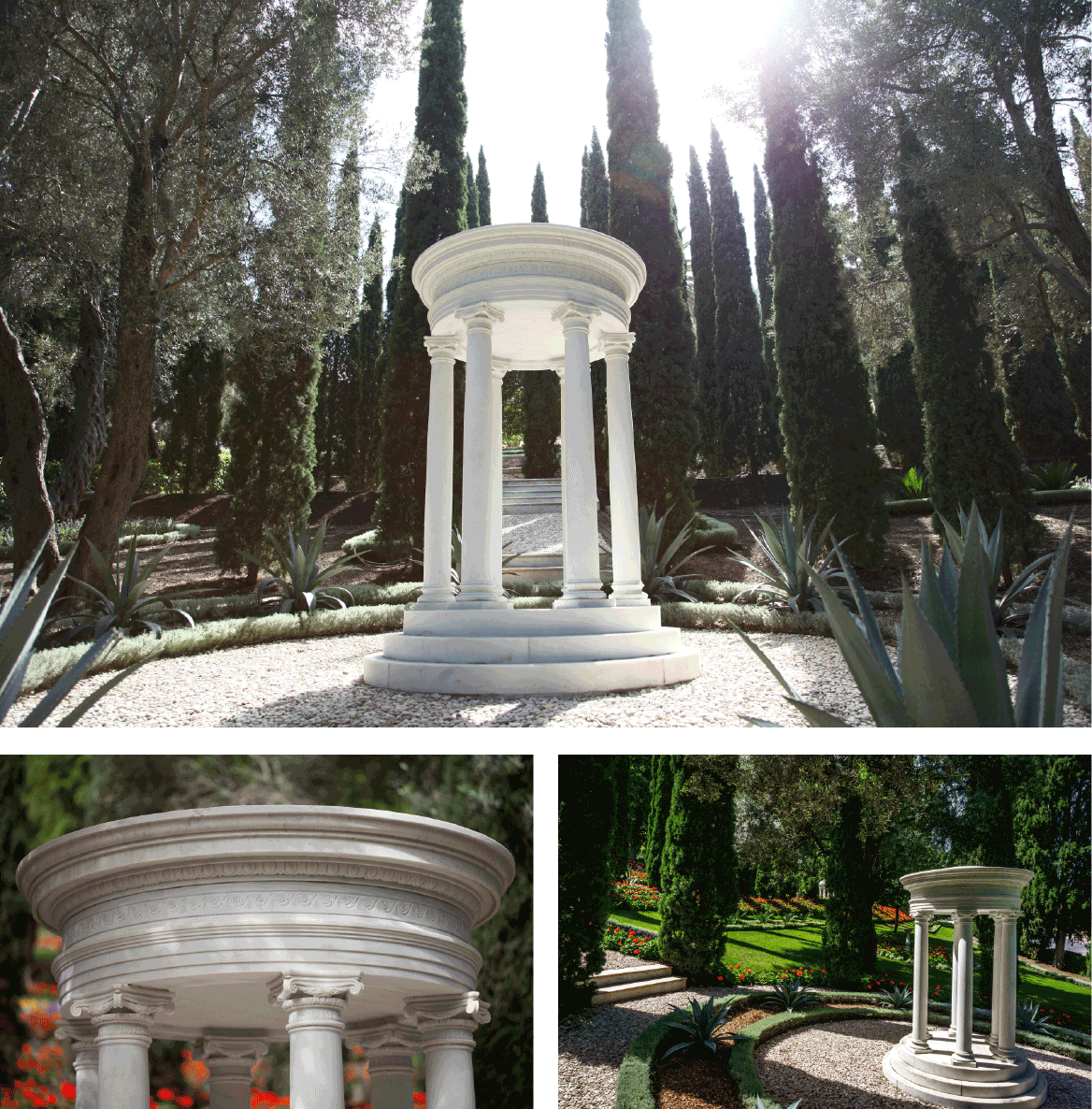
Top photograph: Resting Place of Munirih Khánum, wife of ‘Abdu’l-Bahá, in the Monument Gardens. Source: Bahá'í Media Bank, © Bahá'í International Community 2023. Bottom left photograph: Ornamental detail of the top of Munírih Khánum’s resting place, a unique design of a very gently rounded dome in the center, leveling out towards the edges, and Ionic columns. The other monuments have rounded domes and Corinthian columns. Source: Bahá'í Media Bank, © Bahá'í International Community 2023. Bottom right photograph: This photograph shows the relative placement of Munírih Khánum’s resting place, slightly below those of the Greatest Holy Leaf, Ásíyih Khánum, and Mírzá Mihdí on Mount Carmel. The monuments of Ásíyih Khánum and Mírzá Mihdí can be seen through the leaves in the center of the image. Photograph by Farzam Sabetian. Source: Luminous Spot: The Monument Gardens.
On 5 December 1939, her remains were moved to the Monument Gardens on Mount Carmel, along with those of Ásíyih Khánum, Mírzá Mihdí, to rest near the Tomb of the Greatest Holy Leaf.
The entire family of 'Abdu'l-Bahá was gathered in a single spot, the focal center of the Bahá'í Administrative Institutions at the World Center of the Faith.
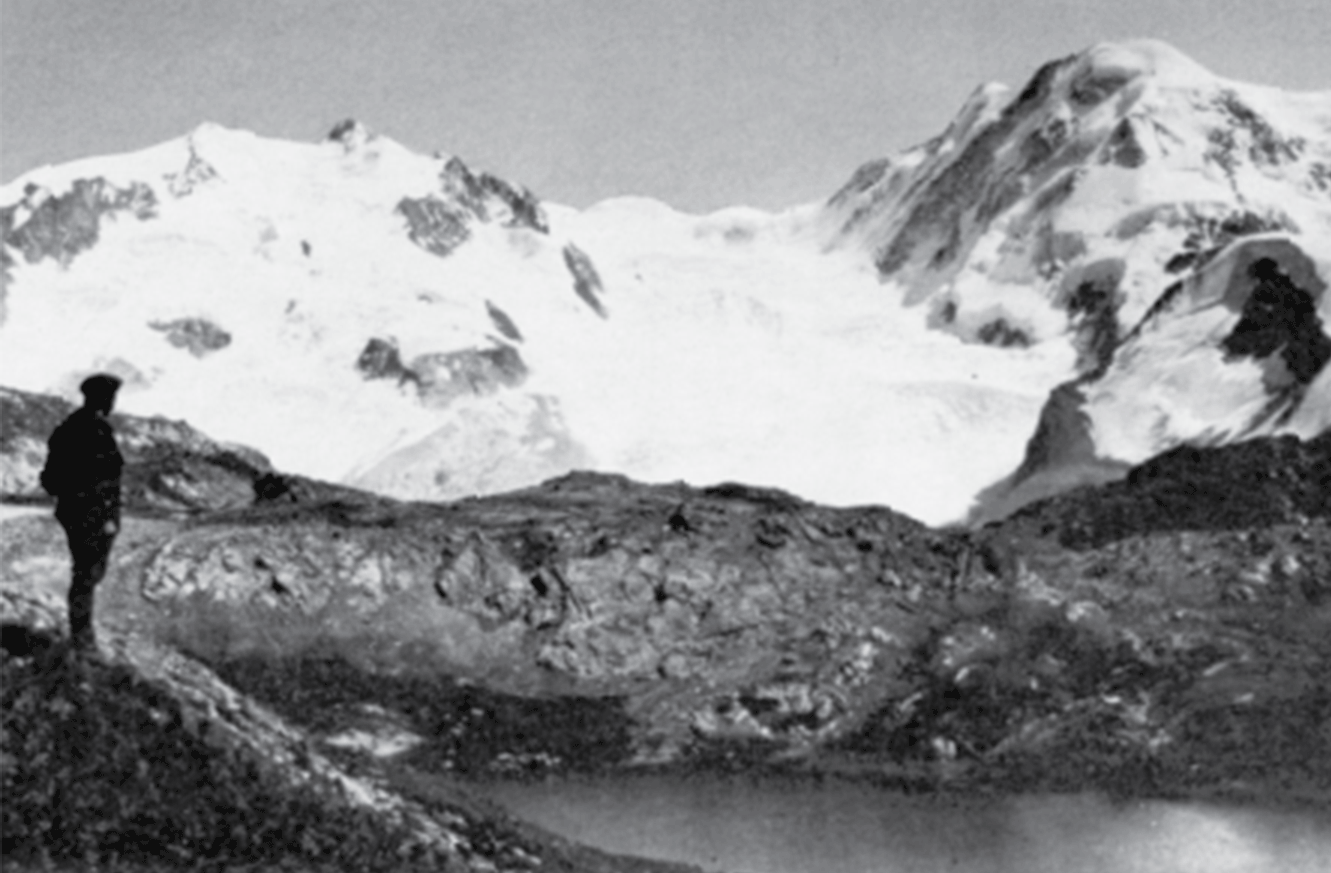
Shoghi Effendi surveying one of Switzerland’s greatest glaciers. Source: The Priceless Pearl.
Shoghi Effendi and Rúḥíyyih Khánum spent several months in Switzerland between the Spring of 1938 and December.
It was during these months that Shoghi Effendi wrote The Advent of Divine Justice.
These were turbulent months. Europe was gearing up for war. This was no surprise to the Guardian—in fact, he had been preparing Bahá'ís for a worldwide conflagration of political tensions for 11 years, but Shoghi Effendi addressed the mounting tensions head-on in a letter he sent from Switzerland on 5 July 1938:
The twin processes of internal disintegration and external chaos are being accelerated and every day are inexorably moving towards a climax. The rumblings that must precede the eruption of those forces that must cause 'the limbs of humanity to quake ' can already be heard. The time of the end ', 'the latter years ', as foretold in the Scriptures, are at long last upon us."
In The Advent of Divine Justice—a long letter to the American Bahá'í community which he was in the process of writing—the Guardian was even more specific.
War was definitely coming:
Who knows but that these few remaining, fast-fleeting years, may not be pregnant with...conflicts more devastating than any which have preceded them.
World War II erupted ten months later, on 1 September 1939, when Germany invaded Poland.

A train going through a valley in New Zealand in the 1920s. Photo by Museum of New Zealand Te Papa Tongarewa on Unsplash.
Shoghi Effendi observed a rigid discipline to himself and his companions when he traveled. He set aside a very modest amount of money for his summer trip, and whether he was alone or accompanied by other, it had to be enough.
Even when he was middle-aged, Shoghi Effendi always traveled third class, unless it was full or the train was too filthy, and when he took night-trains, he would use his backpack as a pillow on the hard wooden benches.
Anything he did privately was held to these rigorous standards of economy. He was a naturally modest and conscientious man, who never spent more than he needed to, but he had a different standard when he needed to travel as Guardian and represent the Bahá'í. Faith. If he was traveling officially, he represented the honor of the Cause in public, and did not apply that same modest standard to his official expenses.
Rúḥíyyih Khánum had to literally plead and convince Shoghi Effendi to be less harsh and exacting with himself, and consent to a decent hotel, get a room with a bath, eat more nourishing and better food, and take care of his health.
In her immense love for her Guardian, Amelia Collins began regularly offering Shoghi Effendi a sum of his money ahead of his summer rest, and begged him to use it for himself. With Rúḥíyyih Khánum’s encouragement, Shoghi Effendi accepted the stipend, and used a small part for himself, using the rest on purchases for his beloved gardens, something that brought him great joy.
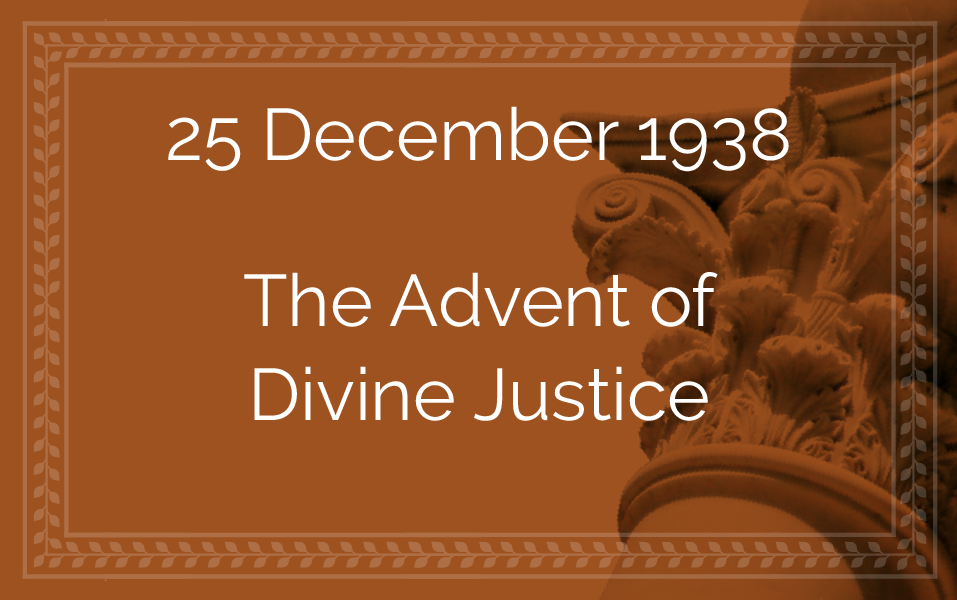
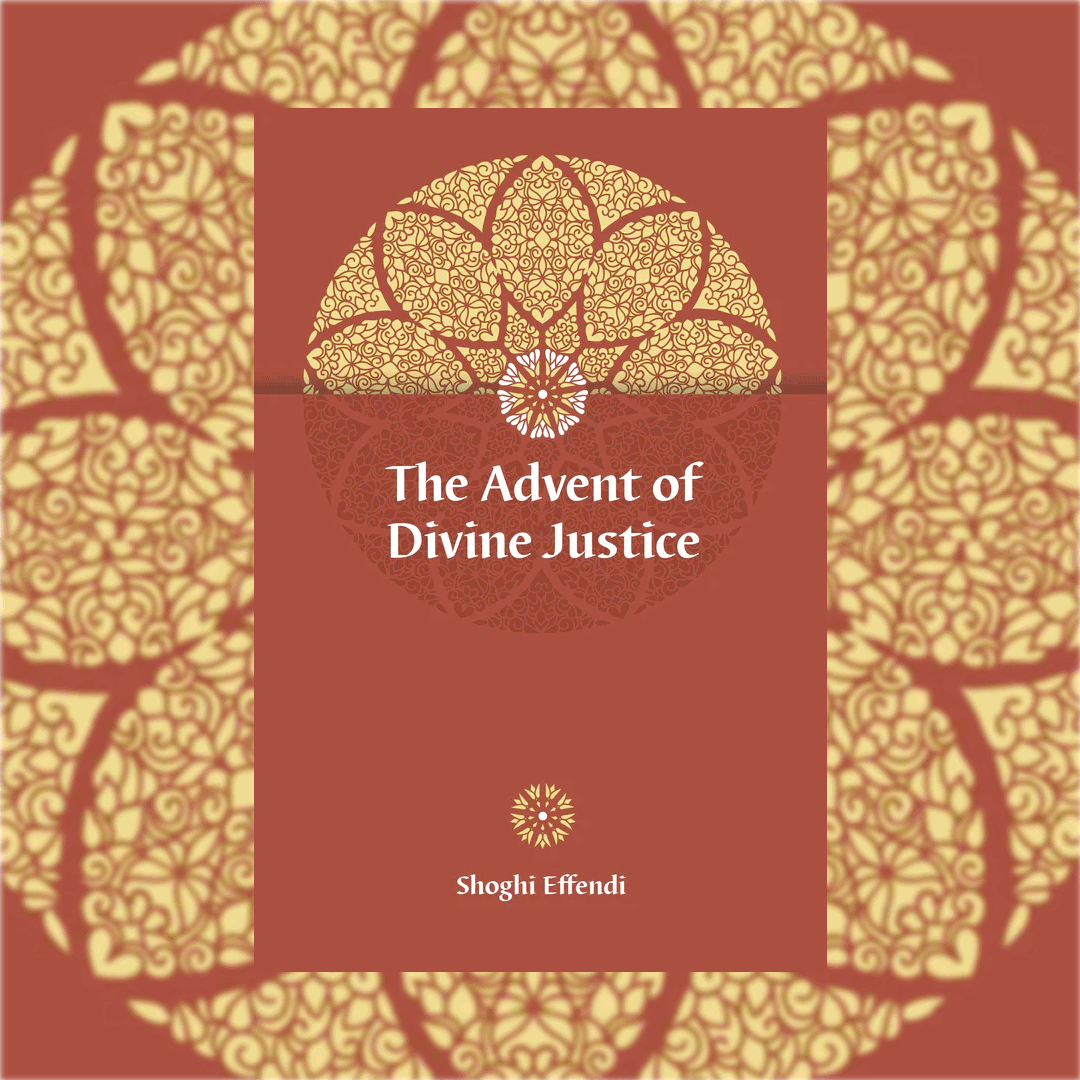
In the words of ‘Alí Nakhjávání, perhaps the greatest expert on the writings and life of Shoghi Effendi:
The Advent of Divine Justice reads like a 77-page poem.
Shoghi Effendi wrote The Advent of Divine Justice on 25 December 1938, at the end of a profoundly tumultuous and deeply disturbing year that would lead to the start of World War II: Romania, the country of Queen Marie, became a royal dictatorship, the second war between China and Japan erupted, the Spanish civil war was in its last throes, Hitler annexed Austria, the Vatican recognized Franco’s fascist government in Spain, the Nazis began building concentration camps, Mussolini publicly allied himself with Hitler, Nazis invaded Poland and burnt 267 synagogues in Germany on Kristallnacht, and The Netherlands closed its borders to refugees.
In contrast to what looked like a world descended into absolute chaos, The Advent of Divine Justice—a long, exceedingly beautiful, unimaginably rich letter—shone like a beacon of hope, of clarity, of sanity, of confidence.
The Guardian addressed The Advent of Divine Justice to the Bahá'ís of the United States and Canada, and the letter is focused on acquainting them with their spiritual legacy, on teaching them about America’s divinely-ordained destiny,
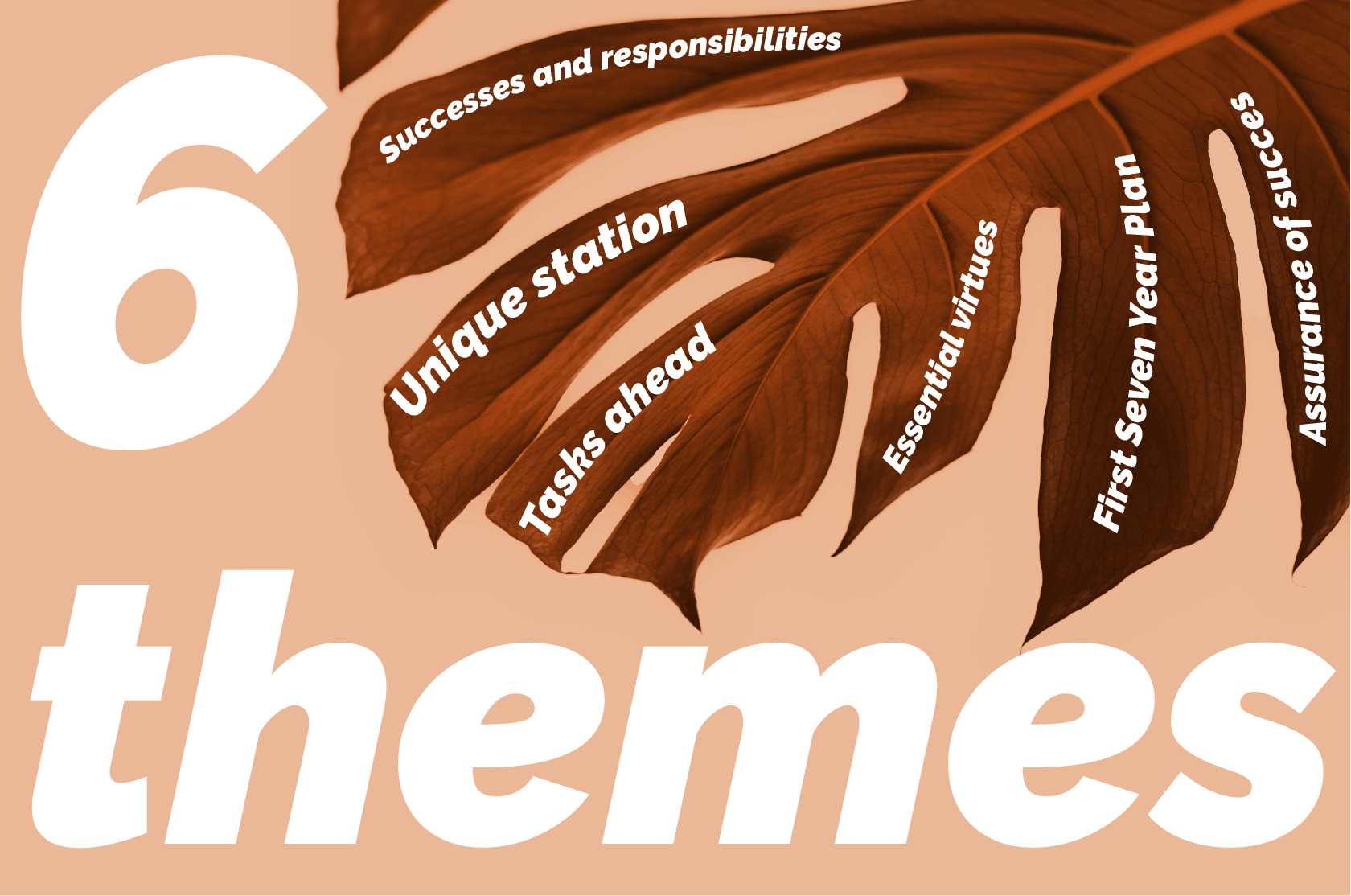
The Advent of Divine Justice unfolds in great detail around six major themes:
- The successes, responsibilities and future of the North American Bahá'í community, the health of the community and the current world-crisis;
- The unique station of the North American Bahá’í Community as the leaders and example in promulgating the Cause, as the spiritual descendants of the Dawn-Breakers, and the cradle of the Administrative Order;
- The tasks lying ahead of the American Bahá'ís are immediate—the spread of the Faith in the western Hemisphere and around the world—but also distant, and include the election of the Universal House of Justice, the translation and codification of the Kitáb-i-Aqdas, as well as dozens more long-term goals laid out by the Guardian;
- The need for Americans to acquire essential virtues, desperately needed in a world weighed down by excessive materialism, virtues such as self-renunciation, of moral rectitude, of chastity, of indiscriminating fellowship, of holy discipline, and of spiritual insight, keeping and utilizing the praiseworthy traditional American qualities while renouncing its flaws;
- The First Seven Year Plan’s Goals for America;
- 'Abdu'l-Bahá and the Guardian’s assurances of the North American Bahá’í Community’s success
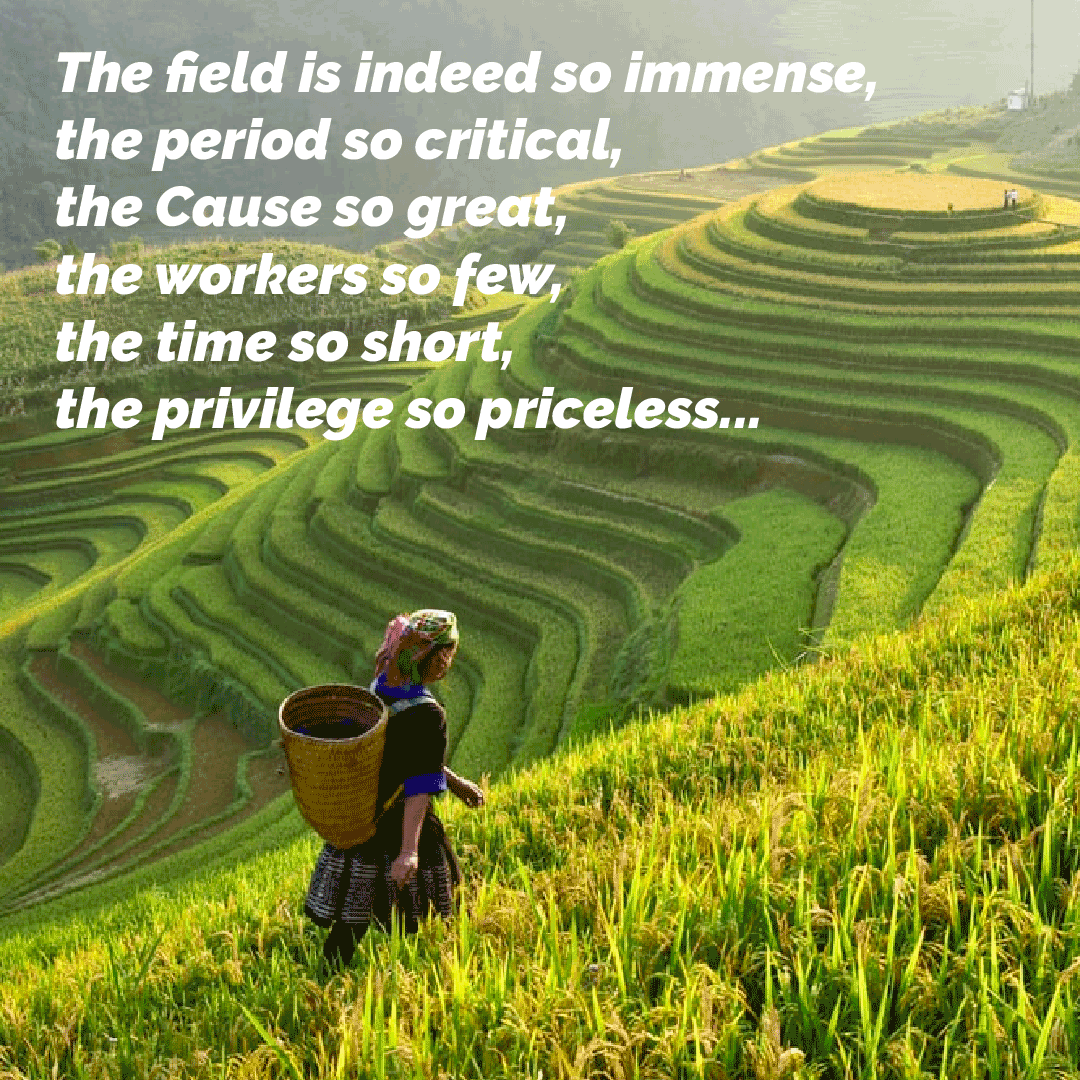
Background photograph from Travelness.
The excerpt below is, unsurprisingly, one of the most celebrated passages from The Advent of Divine Justice. It uses a literary device called asyndeton, separating small groups of words with commas instead of conjunctions, which creates a rolling, dramatic acceleration of the sentence towards its climax. The example below is two sentences, a short, three-line sentence and a long one:
The field is indeed so immense, the period so critical, the Cause so great, the workers so few, the time so short, the privilege so priceless, that no follower of the Faith of Bahá’u’lláh, worthy to bear His name, can afford a moment’s hesitation. That God-born Force, irresistible in its sweeping power, incalculable in its potency, unpredictable in its course, mysterious in its workings, and awe-inspiring in its manifestations—a Force which, as the Báb has written, “vibrates within the innermost being of all created things,” and which, according to Bahá’u’lláh, has through its “vibrating influence,” “upset the equilibrium of the world and revolutionized its ordered life”—such a Force, acting even as a two-edged sword, is, under our very eyes, sundering, on the one hand, the age-old ties which for centuries have held together the fabric of civilized society, and is unloosing, on the other, the bonds that still fetter the infant and as yet unemancipated Faith of Bahá’u’lláh.
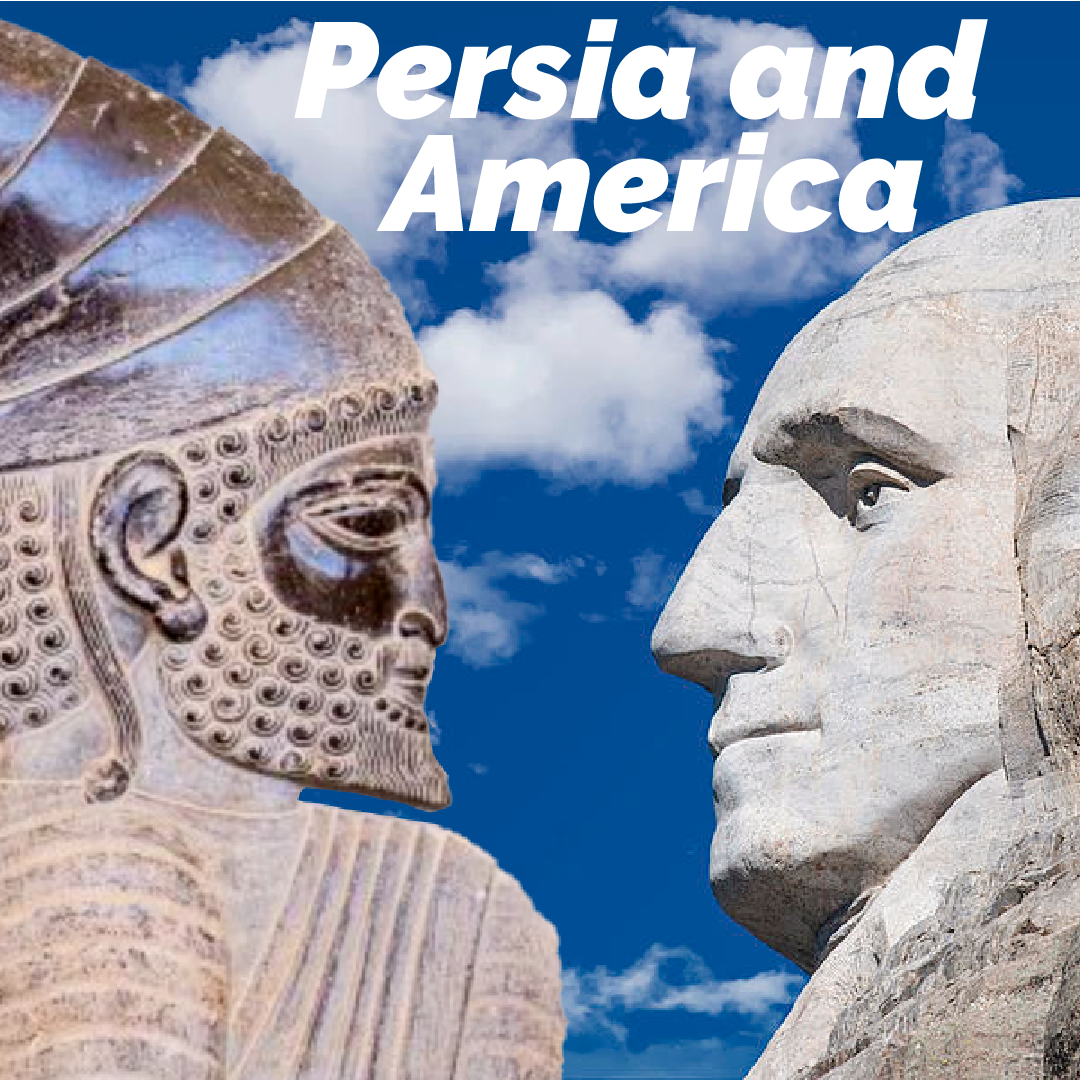
Throughout his ministry, Shoghi Effendi expounded on why certain nations had a role to play in history, at the inception of the Bahá'í Cycle. These lengthy and detailed, carefully crafted analyses were not always easy to read. They were thought-provoking, and illuminating.
In The Advent of Divine Justice, Shoghi Effendi explains why the Báb and Bahá'u'lláh appeared in Persia, and why America was the cradle of the Administrative Order.
The role Persia and the United States and Canada had been called upon to play in history at the inception of the Bahá'í Cycle was illuminating, thought-provoking and often at sharp variance with how Persians and Americans saw themselves.
The reason why Persia the Cradle of the Faith and America the Cradle of its Administrative Order was not based on the qualities of the nations or people. It was based on an entirely different set of principles: the greatest power in the world is the power of the Holy Spirit, a divine alchemy which can transmute the base material of copper into the precious metal of gold.
They were chosen because they were deeply flawed.
In The Advent of Divine Justice the Guardian helps us understand, really understand this fundamental tenet of the Faith:
To contend that the innate worthiness, the high moral standard, the political aptitude and social attainments of any race or nation is the reason for the appearance in its midst of any of these Divine Luminaries, would be an absolute perversion of historical facts, and would amount to a complete repudiation of the undoubted interpretation placed upon them, so clearly and emphatically, by both Bahá'u'lláh and 'Abdu'l-Bahá.
The sections in which the Guardian explains the destiny of Persia and America are three lengthy paragraphs in a section and subsection of the letter called “Call for the Acquisition of Virtues Needed to Equip the North American Bahá’ís to Fulfill Their Destiny: A Warning about the Shortcomings of North Americans.”
What follows is a summary of the points Shoghi Effendi makes.
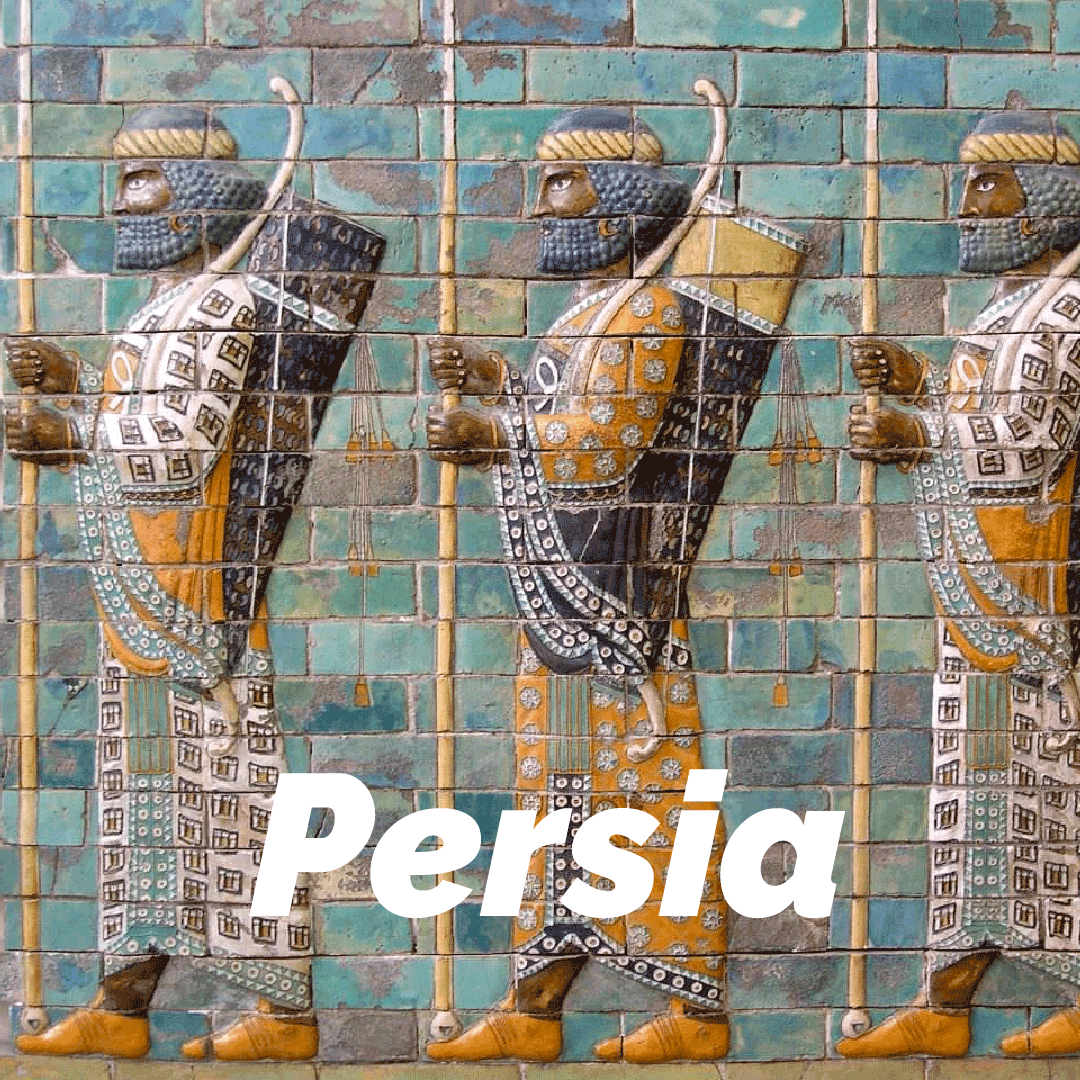
Background image: Persian Archers at Darius' palace at Susa. Exhibited in Pergamon Museum / Vorderasiatisches Museum in Berlin. Source: World History.
It takes great courage for Persians, to accept that the Báb and Bahá'u'lláh did not appear in their native land because they were a superior culture, endowed with special virtues, but rather, as Shoghi Effendi fearlessly states:
…as a direct consequence of its crying needs, its lamentable degeneracy, and irremediable perversity
The point Shoghi Effendi makes is that every last Manifestation of God of the past appeared in the place of their Revelation, the most corrupt, decadent, ruined, materialistic of its time for one reason, and one reason only:
… to demonstrate their redemptive power to raise from the depths of abasement and of misery, the people of their own race and nation, empowering them to transmit in turn to other races and nations the saving grace and the energizing influence of their Revelation.
Shoghi Effendi explains that even if history has not yet caught up with this analysis, Persia in 1844 had
…sunk to such ignominious depths, and manifested so great a perversity, as to find no parallel among its contemporaries.
This was a divine requirement for the appearance of not one but two Manifestations of God, in the most corrupt country on the face of the planet.
Why?
Because only such a fanatical, orthodox, cruel society, could offer the most
…convincing proof…demonstrating the regenerating spirit animating the Revelations proclaimed by the Báb and Bahá’u’lláh than their power to transform what can be truly regarded as one of the most backward, the most cowardly, and perverse of peoples into a race of heroes, fit to effect in turn a similar revolution in the life of mankind.
There is no better place to see this contest between light and dark, good and evil, the corrupt past and the brilliant future of what the people of Persia were capable of than the pages of The Dawn-Breakers.

Background image of Mount Rushmore in South Dakota, completed in 1940. Source: Attractions of America.
This was also the reason why America is regarded as the cradle of the World Order of Bahá'u'lláh, although to a lesser degree. It is not because America possessed the virtues and qualities necessary to carry out this destiny, but because America had its own set of very real problems.
The Guardian saw the prosecution of the Administrative Order in America as a deed of such great heroism that it was in no way inferior to the heroic deeds that had spread the Faith of Bahá'u'lláh in the Heroic age:
So great a function, so noble a role, can be regarded as no less inferior to the part played by those immortal souls who, through their sublime renunciation and unparalleled deeds, have been responsible for the birth of the Faith itself.
But immediately, the Guardian clarifies that this station of America, generously bestowed on them by Bahá'u'lláh, is by no means a reflection on their qualities, their merit, their greatness.
In fact, says the Guardian, it is precisely the opposite:
It is precisely by reason of the patent evils which, notwithstanding its other admittedly great characteristics and achievements, an excessive and binding materialism has unfortunately engendered within it that the Author of their Faith and the Center of His Covenant have singled it out to become the standard-bearer of the New World Order envisaged in their writings.
America’s all-consuming, devouring materialism put it in as great spiritual danger as Persia’s own perversity.
And it was precisely because of its corruption and materialism that the victories of the American believers would shine the brightest, just as the transformation of Bahá'ís was so shocking in the derelict environment of Persia. This is Shoghi Effendi’s reassurance to the American Bahá'ís:
It is by such means as this that Bahá’u’lláh can best demonstrate to a heedless generation His almighty power to raise up from the very midst of a people, immersed in a sea of materialism, a prey to one of the most virulent and long-standing forms of racial prejudice, and notorious for its political corruption, lawlessness and laxity in moral standards, men and women who, as time goes by, will increasingly exemplify those essential virtues of self-renunciation, of moral rectitude, of chastity, of indiscriminating fellowship, of holy discipline, and of spiritual insight that will fit them for the preponderating share they will have in calling into being that World Order and that World Civilization of which their country, no less than the entire human race, stands in desperate need.
The Americans were destined and chosen by Bahá'u'lláh to establish the Administrative Order which would find its most perfect expression, in decades to come, in the election of the Universal House of Justice. They were one of the pillars of the Administrative Order. Shoghi Effendi gives the Americans hope in the last sentence of this extraordinary passage:
Theirs will be the duty and privilege, in their capacity first as the establishers of one of the most powerful pillars sustaining the edifice of the Universal House of Justice, and then as the champion-builders of that New World Order of which that House is to be the nucleus and forerunner, to inculcate, demonstrate, and apply those twin and sorely needed principles of Divine justice and order—principles to which the political corruption and the moral license, increasingly staining the society to which they belong, offer so sad and striking a contrast.
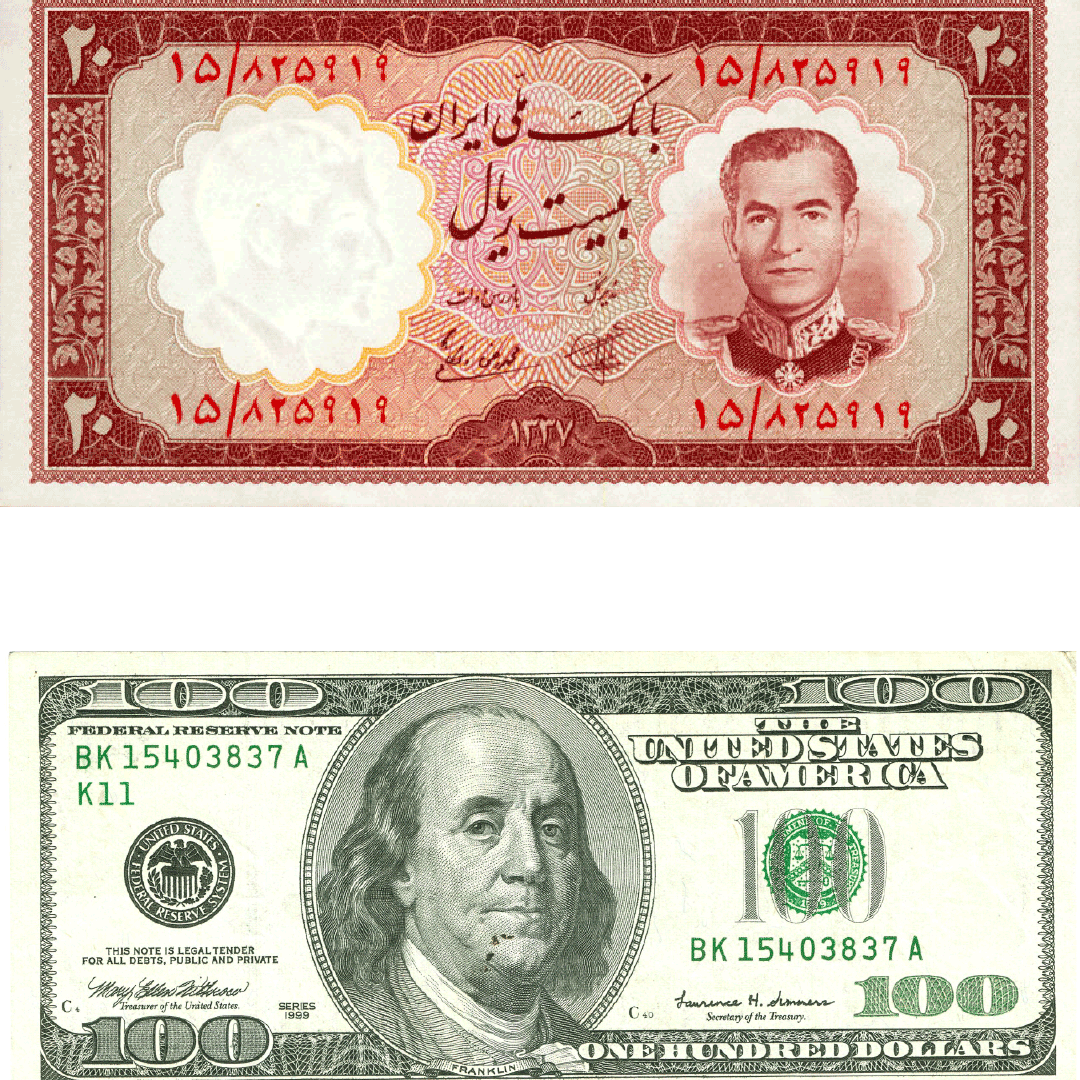
Top photograph: a 20 Persian Rial bank note from 1918. Source: Wikimedia Commons. Bottom photograph: a $100 United States bank note from 1999. Source: Wikimedia Commons.
When Shoghi Effendi was writing The Advent of Divine Justice, Rúḥíyyih Khánum, a Canadian, protested. She told Shoghi Effendi that surely, Iran was infinitely more corrupt that America.
The Guardian said No. America was the most corrupt politically.
When Shoghi Effendi saw Rúḥíyyih Khánum’s shocked face, how infinitely hard it was for her to accept this new vision of the country she loved, he suddenly pointed his finger at her and said:
Swallow it, it is good for you.
Rúḥíyyih Khánum swallowed the idea of North America as corrupt. She swallowed it whole, and the Guardian elaborated on the theme. He wrote memorable, timeless passages in The Advent of Divine Justice.
It took years, but finally, Rúḥíyyih Khánum digested what she’s swallowed on faith alone, in her love for Shoghi Effendi, and she came to see very clearly how right he was about America, but more importantly, how much healing and strength are available to us if we grasp the life-giving teachings of the Faith, its great revivifying spiritual laws. If at first, we don’t agree, we swallow. We digest. We accept. We understand.
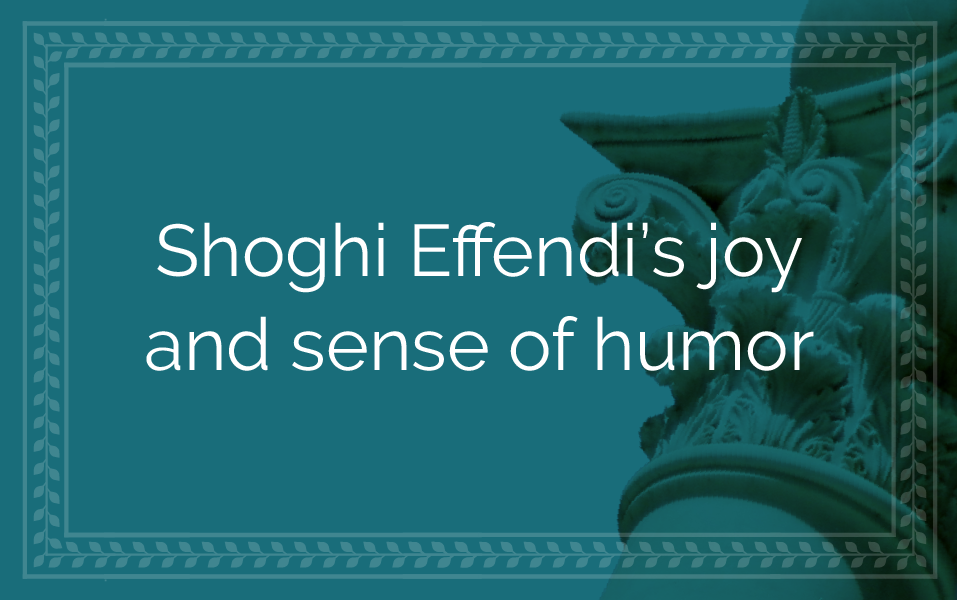
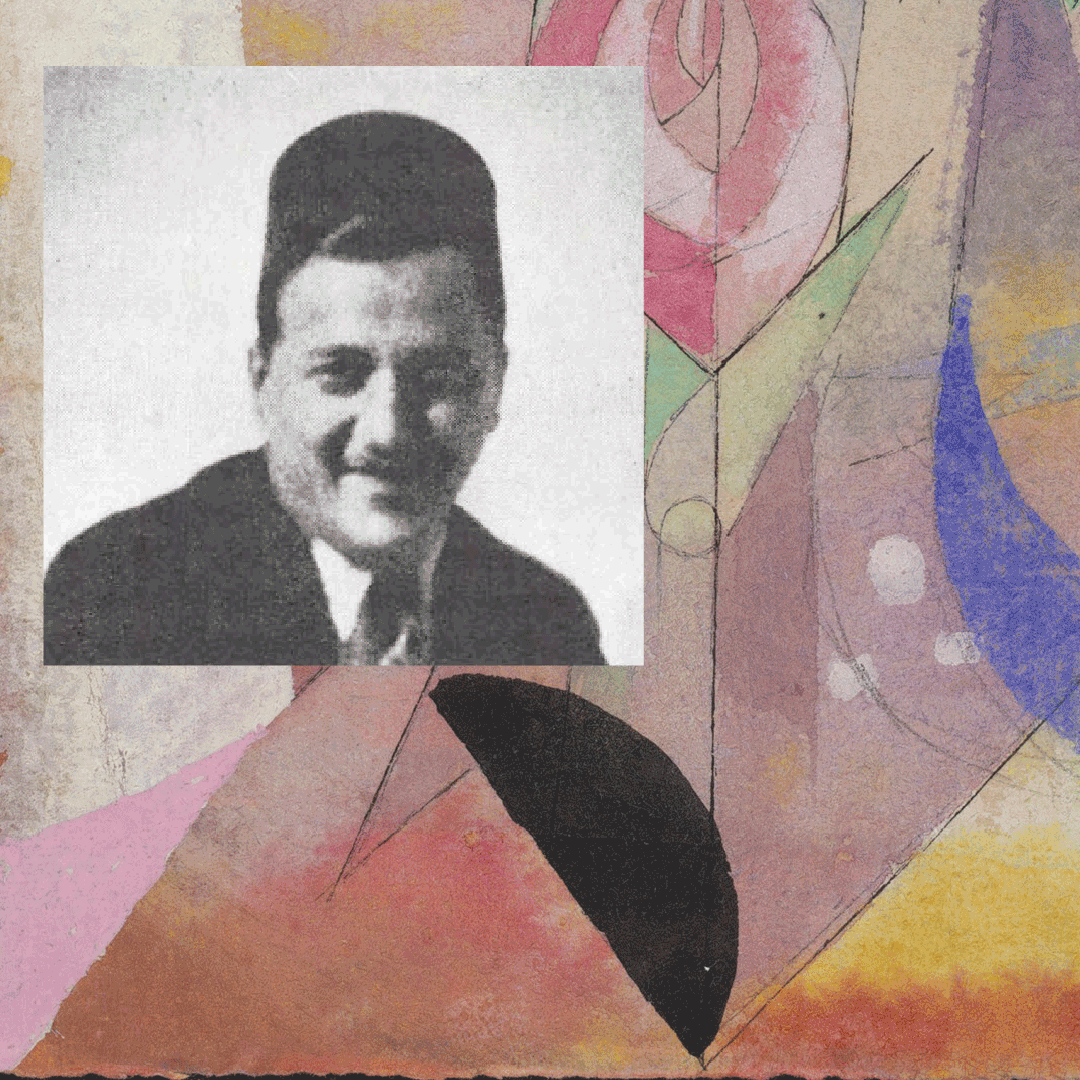
Photograph of a smiling Shoghi Effendi previous attributed in this chronology. Background image: Persische Nachtigallen (Persian Nightingales), 1917 by Paul. Klee, Gift of Catherine Gamble Curran and Family, in Honor of the 50th Anniversary of the National Gallery of Art. Source: The National Gallery.
As a young child, Shoghi Effendi had been sweetly mischievous, and the ringleader of the children of 'Abdu'l-Bahá’s family. He was bubbling with joy, enthusiasm and daring, and filled with laughter, leading the way into many pranks. The Guardian loved playing pranks and teasing those he loved the most into his later years.
As Guardian of the Cause, Shoghi Effendi did not have many reasons to be as joyful as he had been in his childhood, but when he did laugh, Rúḥíyyih Khánum said:
It was a delight to see and hear him laugh...he seemed to twinkle like a star when some plan had been successfully brought to a conclusion. His sense of humour was a joy!
Shoghi Effendi, like his Grandfather and Great-Grandfather before him, had a delightful sense of humor, which was always ready to manifest itself if he was ever given the extremely rare chance to be happy or enjoy a little piece of mind. Rúḥíyyih Khánum describes these all-too rare moments:
His eyes would fairly dance with amusement, he would chuckle delightedly and sometimes break out into open laughter.
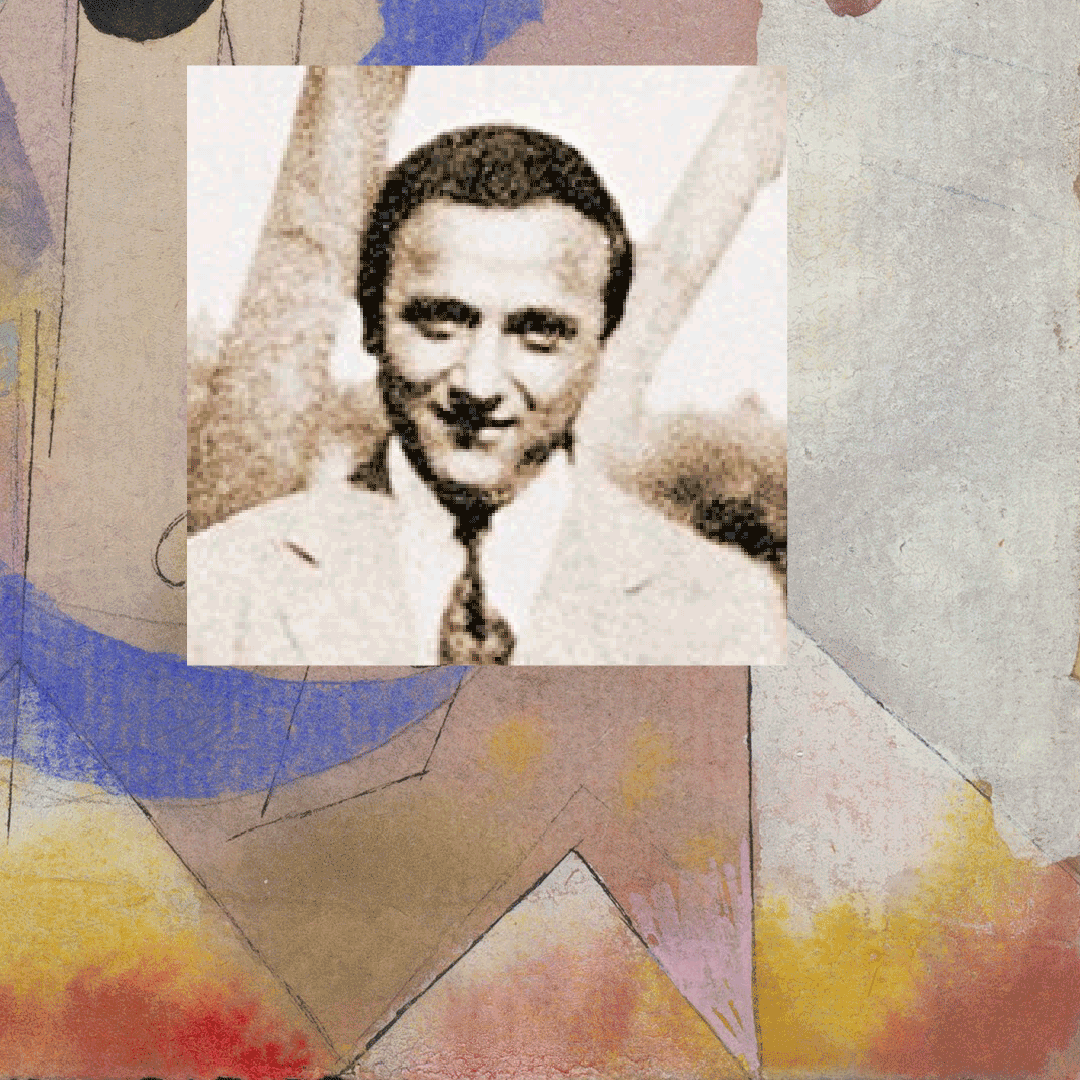
Photograph of a smiling Shoghi Effendi previous attributed in this chronology. Background image: Persische Nachtigallen (Persian Nightingales), 1917 by Paul. Klee, Gift of Catherine Gamble Curran and Family, in Honor of the 50th Anniversary of the National Gallery of Art. Source: The National Gallery.
The Guardian maintained a youthful, innocent-hearted quality, his entire life and he enjoyed gently teasing those whom he loved dearly.
When a young pilgrim mentioned they wanted to get married, Shoghi Effendi remarked:
Don't wait too long and don't wait for someone to fall from the sky!
One of the rooms Shoghi Effendi had built for Rúḥíyyih Khánum was a little tiny room next to his bedroom/office.
Shoghi Effendi’s desk was immaculate. Everything was perfectly arranged at very specific positions.
In Rúḥíyyih Khánum’s little office, she had a beautiful desk, a present from her father William Sutherland Maxwell with gorgeous turned wood spool legs—these are legs that have round or curved shapes in turned wood. They are very stately, and immediately elevate the design of a room, as opposed to square desk legs.
One day, Rúḥíyyih Khánum was sitting at her messy desk, covered in things, writing letters for the Guardian, when he came into the room, and as he was passing, he looked at the abused desk and said:
Poor table. It's saying, Look what a beautiful table I am. Look what lovely legs I have and see how I'm being treated.
It is important to mention that the fact that Shoghi Effendi never criticized his beloved wife for being untidy while he was himself the essence of tidiness, was deeply rooted in his character.
The spirit of criticism was deeply abhorrent to Shoghi Effendi. Not only did he not criticize Bahá'ís, he would not allow Bahá'ís to criticize each other.
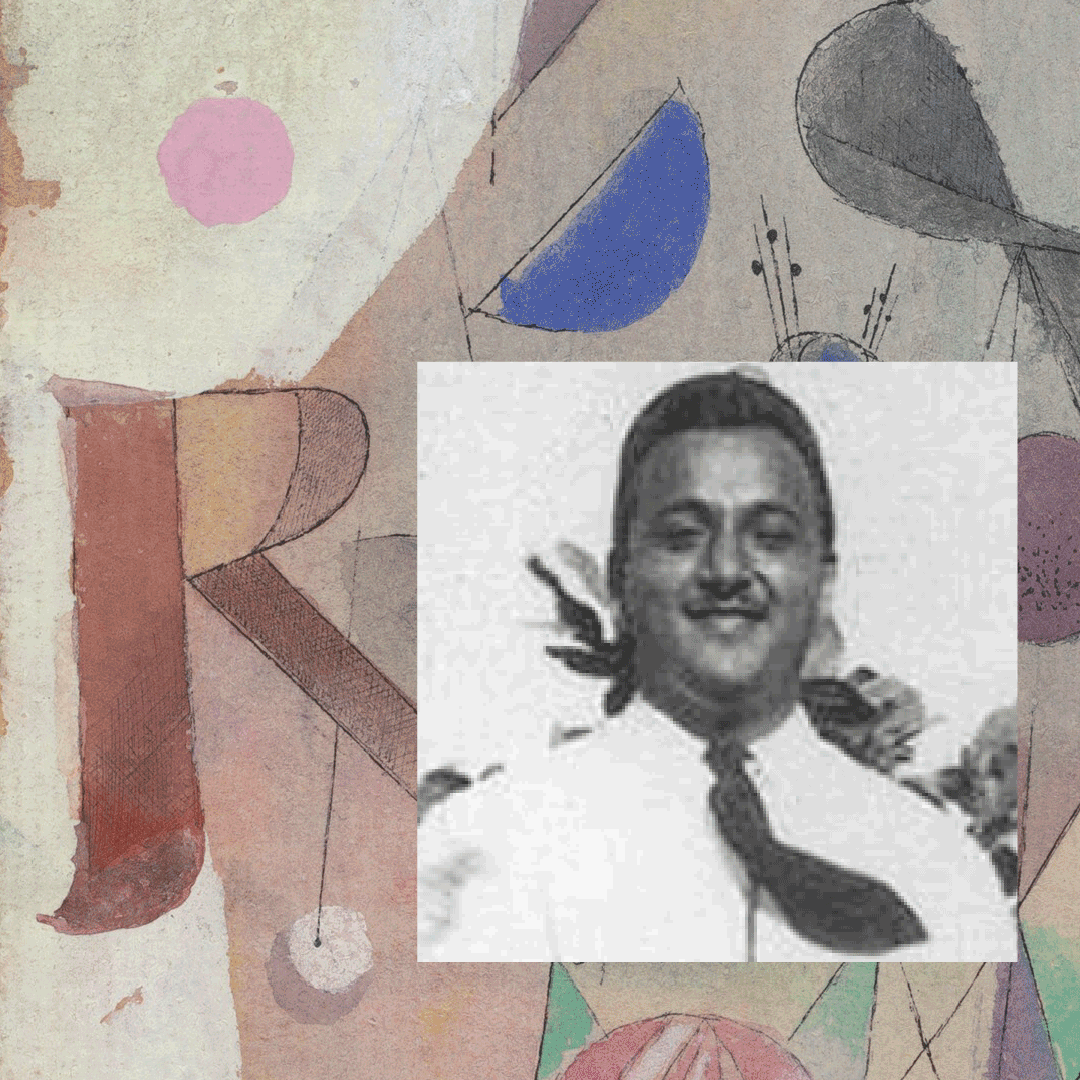
Photograph of a smiling Shoghi Effendi previous attributed in this chronology. Background image: Persische Nachtigallen (Persian Nightingales), 1917 by Paul. Klee, Gift of Catherine Gamble Curran and Family, in Honor of the 50th Anniversary of the National Gallery of Art. Source: The National Gallery.
Teasing was a way that Shoghi Effendi enjoyed expressing deep affection, and he would tease those he was close to. Shoghi Effendi especially liked teasing his wife, Rúḥíyyih Khánum because he knew she would always believe anything he said. And Shoghi Effendi loved to take advantage of this.
Shoghi Effendi often played cute little tricks like these on Rúḥíyyih Khánum, a sure sign that she was his partner in everything, and that their closeness was a solace to him. Rúḥíyyih Khánum was never able to trick the Guardian, she was much less talented at it than he was. Towards the end of his life, Shoghi Effendi said something very sweet to Rúḥíyyih Khánum: he told her that it was getting very difficult to fool her. By this point, they had been married for twenty years.
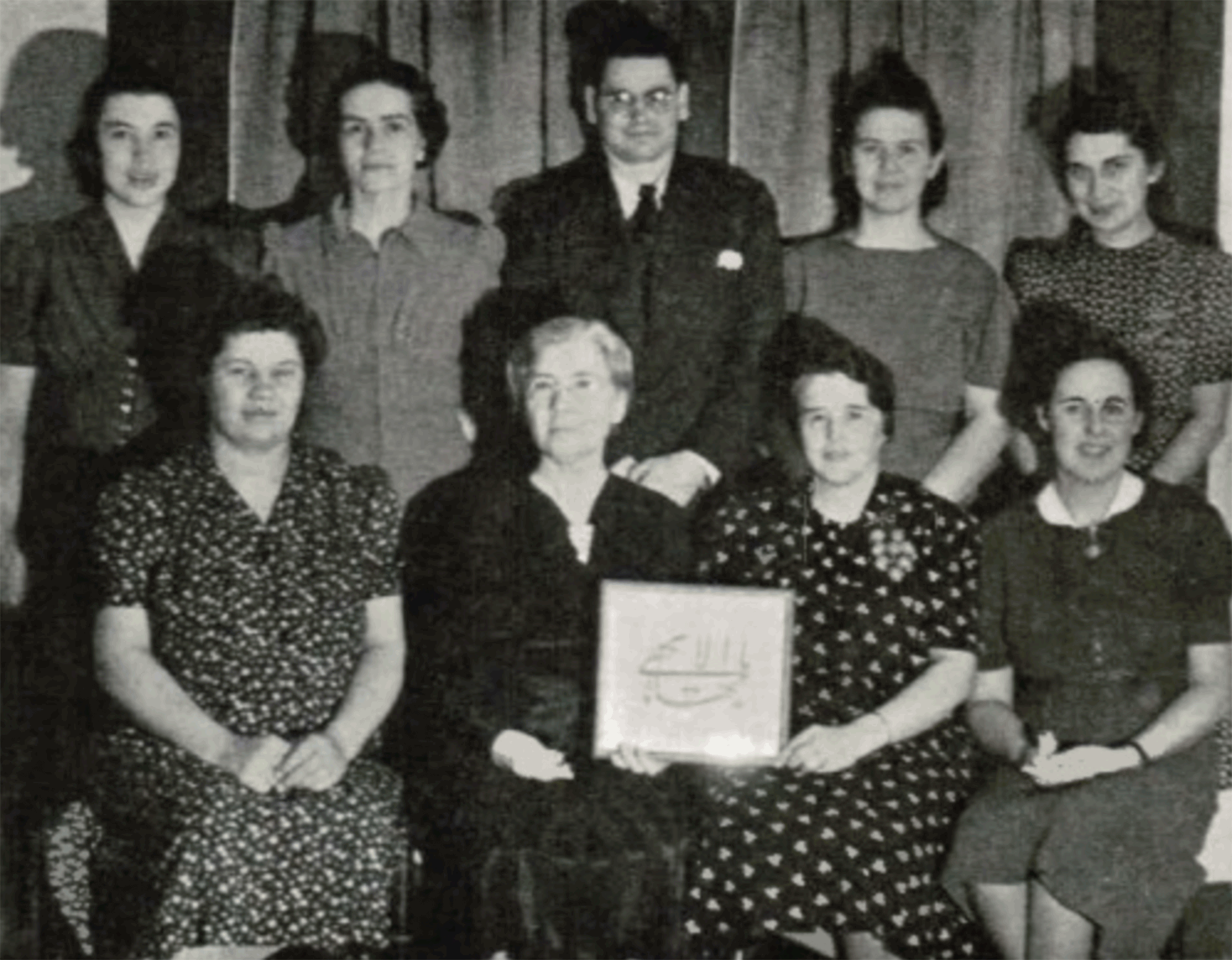
The first Local Spiritual Assembly of Madison, Wisconsin, in 1940, mentioned in the story below. Source: Bahaimedia.
Shoghi Effendi’s joy always came from the growth and development of the Faith and its Administrative Order, the heart of his ministry as Guardian.
A piece of good news that would send the Guardian’s heart soaring would be a goal just recently won, a new language in which Bahá'í literature had just been translated, the election of the first Local Spiritual Assembly of Wisconsin, the election of the first National Spiritual Assembly of India, the mass conversions in Uganda.
Such glad tidings would send Shoghi Effendi to his desk to compose a thrilling message and fold into his own joy the entire worldwide community of Bahá'ís, elevated by his happiness, exhilarated by the news, excited to run into the field of service in Bahá'u'lláh’s name.
The Guardian’s joy was contagious on a planetary scale, and he would update the messages if new numbers came in, sending a first message stating 200 people had declared, then shortly after, 500, then a third message when the number grew to 800. The Guardian knew how to make Bahá'ís happy.
Very shortly before he passed away, Shoghi Effendi experienced one last throb of joy when Bolivia shared that mass conversions among the Indigenous population were forthcoming.
Whenever he was elated over a tremendous victory of the Faith, whenever he was truly Happy, Shoghi Effendi would turn to Rúḥíyyih Khánum and break her heart, saying:
If I were happy you would see what I would do for this Cause. Let them make me happy.
SOURCES FOR PART XI
Mary Maxwell between 1924 and 1937
November 1935: Shoghi Effendi encourages Mary Maxwell’s teaching activities in Germany
21 April 1936: Mary Maxwell’s report to the Guardian from Rostock
1 May 1936: The Guardian expresses his gratitude for Mary Maxwell’s service
REFERENCES FOR THE PREVIOUS FOUR STORIES:
A Tribute to Amatul’Bahá Ruḥíyyíh Khánum, Violette Nakhjávání.
Maxwells of Montreal, The: Middle Years 1923-1937 Late Years 1937-1952. Violette Nakhjavani, George Ronald, Oxford (2011), Kindle Edition, Locations 4237, 4277, 4358-4432.
8 December 1936: The Guardian invites May and Mary Maxwell on pilgrimage
Maxwells of Montreal, The: Middle Years 1923-1937 Late Years 1937-1952. Violette Nakhjavani, George Ronald, Oxford (2011), Kindle Edition, Location 5089.
12 January 1937: May and Mary Maxwell arrive in Haifa
Maxwells of Montreal, The: Middle Years 1923-1937 Late Years 1937-1952. Violette Nakhjavani, George Ronald, Oxford (2011), Kindle Edition, Locations 2319, 5217 and 5274-5291.
Late January/ February 1937: Shoghi Effendi tutors Mary Maxwell
Maxwells of Montreal, The: Middle Years 1923-1937 Late Years 1937-1952. Violette Nakhjavani, George Ronald, Oxford (2011), Kindle Edition, Locations 2319, 5217 and 5274-5291.
A Tribute to Amatul’Bahá Ruḥíyyíh Khánum, Violette Nakhjávání.
27 February 1937: A marriage proposal
15 March 1937: May Maxwell’s letter to Shoghi Effendi
REFERENCES FOR THE PREVIOUS TWO STORIES:
Maxwells of Montreal, The: Middle Years 1923-1937 Late Years 1937-1952. Violette Nakhjavani, George Ronald, Oxford (2011), Kindle Edition, Locations 5274 and 5308-5328.
The Great African Safari: The Travels of Amatu’l-Bahá Rúhíyyih Khánum in Africa 1969-73. Violette Nakhjavani, George Ronald, 2002, pages 338-339.
Between 15 – 24 March 1937: The engagement of Shoghi Effendi and Mary Maxwell
The Priceless Pearl, Rúḥíyyih Rabbání, Bahá’í Publishing Trust, London, 1969, pages 147-148.
Maxwells of Montreal, The: Middle Years 1923-1937 Late Years 1937-1952. Violette Nakhjavani, George Ronald, Oxford (2011), Kindle Edition, Location 5440.
Transcript of: Amatul’Bahá Rúḥíyyih Khánum’s concluding address at the First Bahá’í World Congress in London, 1963, Timestamp: 01:56:15.
A Tribute to Amatul’Bahá Ruḥíyyíh Khánum, Violette Nakhjávání.
Shoghi Effendi Through the Pilgrim’s Eye Volume 1 Building the Administrative Order, 1922-1952. Earl Redman, George Ronald, Oxford, 2015, Kindle Edition, Location 5247.
24 March 1937: Shoghi Effendi and Rúḥíyyih Khánum’s visit to Bahjí
24 March 1937: Shoghi Effendi and Rúḥíyyih Khánum’s inside the Shrine of Bahá’u’lláh
REFERENCES FOR THE PREVIOUS TWO STORIES:
The Priceless Pearl, Rúḥíyyih Rabbání, Bahá’í Publishing Trust, London, 1969, pages 146 and 151-152.
Maxwells of Montreal, The: Middle Years 1923-1937 Late Years 1937-1952. Violette Nakhjavani, George Ronald, Oxford (2011), Kindle Edition, Locations 5341-5366.
Coronation on Carmel: The Story of the Shrine of the Báb Volume II: 1922-1963, Michael V. Day, George Ronald, 2018, pages 100-101.
Transcript of: Amatul’Bahá Rúḥíyyih Khánum’s concluding address at the First Bahá’í World Congress in London, 1963, Timestamp: 01:53:53.
Transcript of: Amatul’Bahá Rúḥíyyih Khánum’s concluding address at the First Bahá’í World Congress in London, 1963, Timestamp: 01:56:15.
Rúḥíyyih: The gift of a new name
A Tribute to Amatul’Bahá Ruḥíyyíh Khánum, Violette Nakhjávání.
24 March 1937: The wedding ceremony in Haifa
“Dast be dast”: The Persian wedding tradition
REFERENCES FOR THE PREVIOUS TWO STORIES:
A Tribute to Amatul’Bahá Ruḥíyyíh Khánum, Violette Nakhjávání.
Email communication with Fuad Izadinia dated 8 December 2023 regarding the meaning of “dast be dast” and its significance in Persian culture.
Rúḥíyyih Khánum’s letter to her parents
The Priceless Pearl, Rúḥíyyih Rabbání, Bahá’í Publishing Trust, London, 1969, pages 146 and 151-152.
Maxwells of Montreal, The: Middle Years 1923-1937 Late Years 1937-1952. Violette Nakhjavani, George Ronald, Oxford (2011), Kindle Edition, Locations 5341-5366.
A Tribute to Amatul’Bahá Ruḥíyyíh Khánum, Violette Nakhjávání.

24 March 1937: The evening after the wedding
The Priceless Pearl, Rúḥíyyih Rabbání, Bahá’í Publishing Trust, London, 1969, pages 146 and 151-152.
Maxwells of Montreal, The: Middle Years 1923-1937 Late Years 1937-1952. Violette Nakhjavani, George Ronald, Oxford (2011), Kindle Edition, Locations 5341-5366.
24 March 1937: The Maxwell and Bolles family are informed of the wedding
The Priceless Pearl, Rúḥíyyih Rabbání, Bahá’í Publishing Trust, London, 1969, pages 152-153.
Maxwells of Montreal, The: Middle Years 1923-1937 Late Years 1937-1952. Violette Nakhjavani, George Ronald, Oxford (2011), Kindle Edition, Locations 5388-5410.
27 March 1937: The Bahá’í world is informed of the Guardian’s wedding to Rúḥíyyih Khánum
The Priceless Pearl, Rúḥíyyih Rabbání, Bahá’í Publishing Trust, London, 1969, pages 152-153.
Maxwells of Montreal, The: Middle Years 1923-1937 Late Years 1937-1952. Violette Nakhjavani, George Ronald, Oxford (2011), Kindle Edition, Locations 5388-5410.
27 March– 29 April 1937: Congratulations messages from the Bahá’í world
The Priceless Pearl, Rúḥíyyih Rabbání, Bahá’í Publishing Trust, London, 1969, pages 152-153.
Maxwells of Montreal, The: Middle Years 1923-1937 Late Years 1937-1952. Violette Nakhjavani, George Ronald, Oxford (2011), Kindle Edition, Locations 5410-5432.
29 March – 20 April 1937: The Grossmann family’s pilgrimage
Hermann Grossmann: Hand of the Cause of God: A Life for the Faith, Susanne Pfaff-Grossmann, GR, Oxford, 2009, pages 48-49 and 54.
6 April 1937: Prayers and Meditations by Bahá’u’lláh
The four categories of selections in Prayers and Meditations by Bahá’u’lláh
REFERENCES FOR THE PREVIOUS TWO STORIES:
The Priceless Pearl, Rúḥíyyih Rabbání, Bahá’í Publishing Trust, London, 1969, page 219.
George Townshend. David Hofman, George Ronald, Oxford, 1983, Chapter 6: Relationship with the Guardian.
Shoghi Effendi: The Range and Power of His Pen, ‘Alí Nakhjávání, Acuto 2006, Casa Editrice Bahá’í, pages 61-62.
An excerpt from Prayers and Meditations by Bahá’u’lláh
Prayers and Meditations by Bahá’u’lláh No. VIII.
Riḍván 1937: Shoghi Effendi’s vision for ‘Abdu’l-Bahá’s Divine Plan
The Priceless Pearl, Rúḥíyyih Rabbání, Bahá’í Publishing Trust, London, 1969, page 381-382 and 401-402
‘Abdu’l-Bahá’s Tablets of the Divine Plan
The Priceless Pearl, Rúḥíyyih Rabbání, Bahá’í Publishing Trust, London, 1969, pages 437-438 and 440-441.
The prosecution of ‘Abdu’l-Bahá’s Tablets of the Divine Plan: The First Seven Year Plan
The Priceless Pearl, Rúḥíyyih Rabbání, Bahá’í Publishing Trust, London, 1969, pages 437-438 and 440-441.
Riḍván 1937: The three goals of the first Seven Year Plan (1937 – 1944)
The Priceless Pearl, Rúḥíyyih Rabbání, Bahá’í Publishing Trust, London, 1969, pages 383-386.
The union of east and west: The significance of the marriage of Shoghi Effendi and Rúḥíyyih Khánum
The honor bestowed on North America
REFERENCES FOR THIS SECTION:
The Priceless Pearl, Rúḥíyyih Rabbání, Bahá’í Publishing Trust, London, 1969, pages 152-153.
Tablets of Bahá’u’lláh revealed after the Kitáb-i-Aqdas: Lawḥ-i-Maqṣúd (Tablet of Maqṣúd).
‘Abdu’l-Bahá, Paris Talks: The Need for Union between the Peoples of the East and West, Friday 20 October 1911.
May Bolles Maxwell, the Guardian’s mother-in-law: her early life
May Maxwell’s poor health: her greatest tragedy
May Maxwell’s love for ‘Abdu’l-Bahá
1900 – 1902: May Bolles in Paris and her marriage to William Sutherland Maxwell
1909: May Maxwell’s second pilgrimage
30 August – 9 September 1912: ‘Abdu’l-Bahá in Montreal: “This is my home”
May Maxwell and Shoghi Effendi after the passing of ‘Abdu’l-Bahá
REFERENCES FOR THE PREVIOUS SEVEN STORIES:
The Priceless Pearl, Rúḥíyyih Rabbání, Bahá’í Publishing Trust, London, 1969, pages 149-150 and 154-155.
The Bahá’í World Volume 8: In Memoriam: May Ellis Maxwell.
Maxwells of Montreal, The: Early Years 1870-1922. Violette Nakhjavani, George Ronald, Oxford, 2011, pages 251-252.
Maxwells of Montreal, The: Middle Years 1923-1937 Late Years 1937-1952. Violette Nakhjavani, George Ronald, Oxford (2011), Kindle Edition, Location 7165.
My Mother, Amatul’Bahá Rúḥíyyih Khánum, quoted in Maxwells of Montreal, The: Middle Years 1923-1937 Late Years 1937-1952. Violette Nakhjavani, George Ronald, Oxford (2011), Kindle Edition, Locations 336-764.
Wikipedia: May Maxwell.
William Sutherland Maxwell, the Guardian’s father-in-law: his early life
1909: William Sutherland Maxwell’s pilgrimage and meeting ‘Abdu’l-Bahá
REFERENCES FOR THE PREVIOUS THREE STORIES:
The Bahá’í World Volume 12: In Memoriam: William Sutherland Maxwell.
Wikipedia: William Sutherland Maxwell.
24 March – 30 May 1937: The Maxwell’s stay in the Holy Land after the wedding
The Guardian’s prayer gift to Rúḥíyyih Khánum
30 May 1937: May Maxwell’s farewell letter to the Guardian
REFERENCES FOR THE PREVIOUS TWO STORIES:
A Tribute to Amatul’Bahá Ruḥíyyíh Khánum, Violette Nakhjávání.
30 May 1937: May Maxwell’s farewell letter to the Guardian
30 May 1937: The Maxwell’s departure from Haifa
31 May 1937: The Guardian’s cable to the Maxwell’s ship
REFERENCES FOR THE PREVIOUS THREE STORIES:
The Priceless Pearl, Rúḥíyyih Rabbání, Bahá’í Publishing Trust, London, 1969, pages 153-154.
Maxwells of Montreal, The: Middle Years 1923-1937 Late Years 1937-1952. Violette Nakhjavani, George Ronald, Oxford (2011), Kindle Edition, Locations 5432-
June to Fall 1937: The passing of beloved Mr. Hauser
The Priceless Pearl, Rúḥíyyih Rabbání, Bahá’í Publishing Trust, London, 1969, page 60.
Shoghi Effendi’s love of Switzerland
The Priceless Pearl, Rúḥíyyih Rabbání, Bahá’í Publishing Trust, London, 1969, page 134.
20 December 1937: Mírzá Muḥammad-‘Alí
The Covenant of Bahá’u’lláh, Adib Taherzadeh, George Ronald, Oxford, 1992: Faithless Relatives of Shoghi Effendi.
Messages to America, Shoghi Effendi, Cablegram from 20 December 1937.
Before Spring 1938: Second secular portrait of Shoghi Effendi: Rom Landau
The Bábí and the Bahá’í Religions (1844–1944): Some Contemporary western Accounts, Moojan Momen, George Ronald, Oxford, 1981, page 456.
Wikipedia: Rom Landau.
18 July 1938: Bahá’í Queen: The passing of Queen Marie of Romania
The Bahá’í World Volume 8: The passing of Queen Marie of Rumania.
Wikipedia: Marie of Romania.
1938: Saichiro Fujita in the Holy Land before World War II
Wikipedia: Saichiro Fujita.
Bahaipedia: Saichiro Fujita.
Bahá’í Library Online: Interview of Saichiro Fujita, Sylvia Ioas (1975).
Rúḥíyyih Khánum’s culture shock
A Tribute to Amatul’Bahá Ruḥíyyíh Khánum, Violette Nakhjávání.
Shoghi Effendi teaches Rúḥíyyih Khánum reverence
The Priceless Pearl, Rúḥíyyih Rabbání, Bahá’í Publishing Trust, London, 1969, pages 138-141.
1938: Rúḥíyyih Khánum’s family life
A Tribute to Amatul’Bahá Ruḥíyyíh Khánum, Violette Nakhjávání.
Transcript of: Amatul’Bahá Rúḥíyyih Khánum’s concluding address at the First Bahá’í World Congress in London, 1963, Timestamp: 01:28:44.
Shoghi Effendi’s love of little things
The Priceless Pearl, Rúḥíyyih Rabbání, Bahá’í Publishing Trust, London, 1969, pages 37 and 66.
Transcript of: Talk with pioneers in Petionville, Haiti, 3 November 1981, Timestamp: 00:04:05.
Transcript of: Talk with pioneers in Petionville, Haiti, 3 November 1981, Timestamp: 00:07:18 and 00:11:08.
Shoghi Effendi’s love of beauty
The Priceless Pearl, Rúḥíyyih Rabbání, Bahá’í Publishing Trust, London, 1969, page2 81-82.
Shoghi Effendi’s love of Japanese and Chinese art
Transcript of: Amatul’Bahá Rúḥíyyih Khánum’s concluding address at the First Bahá’í World Congress in London, 1963, Timestamp: 01:21:43.
The Priceless Pearl, Rúḥíyyih Rabbání, Bahá’í Publishing Trust, London, 1969, pages 200-201.
Transcript of: Talk with pioneers in Petionville, Haiti, 3 November 1981, Timestamp: 00:12:35.
Shoghi Effendi’s love of bargaining
Transcript of: Amatul’Bahá Rúḥíyyih Khánum’s talk with pioneers in Petionville, Haiti, 20 November 1981, Timestamp: 01:51:44.
Shoghi Effendi’s sound economic sense
The Priceless Pearl, Rúḥíyyih Rabbání, Bahá’í Publishing Trust, London, 1969, page 131.
28 April 1938: “Holy Mother”: The passing of Munírih Khánum, widow of ‘Abdu’l-Bahá
Munírih Khánum’s resting place in the Monument Gardens
REFERENCES FOR THE PREVIOUS TWO STORIES:
Violetta Zein, The Extraordinary Life of ‘Abdu’l-Bahá Part II: The Most Great Prison: The women of the Holy Family.
Violetta Zein, The Primal Point: The Báb gives a child to the parents of Munírih Khánum.
Wikipedia: Munírih.
Bahaipedia: Munírih Khánum.
This Decisive Hour, Shoghi Effendi,
Spring – December 1938: Shoghi Effendi and Rúḥíyyih Khánum in Switzerland
Bahaipedia: Shoghi Effendi.
The Priceless Pearl, Rúḥíyyih Rabbání, Bahá’í Publishing Trust, London, 1969, page 181.
This Decisive Hour, Shoghi Effendi, Letter of 5 July 1938: Marching toward Their Goal.
The Advent of Divine Justice, Shoghi Effendi.
Encyclopedia Britannica: World War II (1939 – 1945).
Shoghi Effendi’s economy in travel
The Priceless Pearl, Rúḥíyyih Rabbání, Bahá’í Publishing Trust, London, 1969, page 61.
25 December 1938: The Advent of Divine Justice
The six themes of The Advent of Divine Justice
An excerpt from The Advent of Divine Justice
REFERENCES FOR THE PREVIOUS THREE STORIES:
The Priceless Pearl, Rúḥíyyih Rabbání, Bahá’í Publishing Trust, London, 1969, page 204-205.
The Advent of Divine Justice, Shoghi Effendi.
Shoghi Effendi: The Range and Power of His Pen, ‘Alí Nakhjávání, Acuto 2006, Casa Editrice Bahá’í, pages 169-175.
Wikipedia: 1938.
Persia and America in The Advent of Divine Justice
Why the ‘Báb and Bahá’u’lláh appeared in Persia
Why America is the cradle of the Administrative Order
The corruption of Iran vs. America
REFERENCES FOR THE PREVIOUS FOUR STORIES:
The Priceless Pearl, Rúḥíyyih Rabbání, Bahá’í Publishing Trust, London, 1969, pages 360-362.
The Advent of Divine Justice, Shoghi Effendi.
The Priceless Pearl, Rúḥíyyih Rabbání, Bahá’í Publishing Trust, London, 1969, pages 7, 80, 129,
Shoghi Effendi’s love of teasing
The Priceless Pearl, Rúḥíyyih Rabbání, Bahá’í Publishing Trust, London, 1969, pages 129 and 175.
Transcript of: Amatul’Bahá Rúḥíyyih Khánum’s concluding address at the First Bahá’í World Congress in London, 1963, Timestamp: 01:28:44.
Conversations with Shoghi Effendi, (1924), May Maxwell, page 3.
The Priceless Pearl, Rúḥíyyih Rabbání, Bahá’í Publishing Trust, London, 1969, pages 129 and 175.
Transcript: The Guardian of the Bahá’í Faith, 21 June 1970, Amatul’Bahá Rúḥíyyih Khánum, transcript from a cassette tape published by the Bahá’í Publishing Trust, Timestamp: 40:37.
Transcript of: Amatul’Bahá Rúḥíyyih Khánum’s talk with pioneers in Petionville, Haiti, 20 November 1981, Timestamp: 00: 27:18.
![]()
 PHOTOGRAPH: 1934: Mary Maxwell in a play at Green Acre
PHOTOGRAPH: 1934: Mary Maxwell in a play at Green Acre
